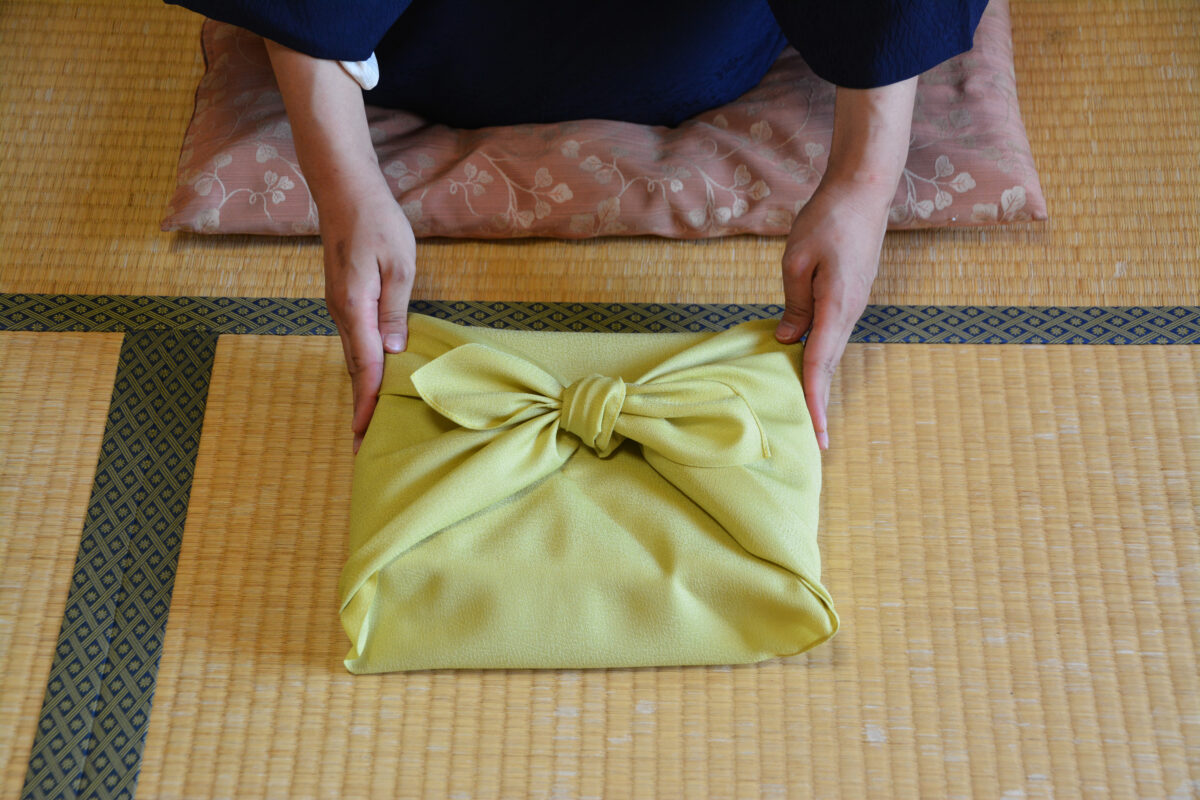Japanese dining tables always feature a delightful variety of dishes, showcasing a tapestry of flavors and textures. Sampling these assorted offerings little by little is the essence of the Japanese culinary experience.

But let it be known: the delight of Japanese cuisine extends far beyond sushi, with a whole mountain of exquisite dishes waiting to be discovered.
Nagisa Tsuchida – Japanese Foodie Veteran ✓
More than just healthy, the irresistible deliciousness of these dishes has catapulted Japanese cuisine to global popularity, offering a tantalizing array of choices that often leave diners pondering what to try next.
Before jumping into the dishes, let me introduce some of my other articles about food in Japan. And also, take a look at this jump-to section where you can skip to specific food types:
🇯🇵 10 cheap but delicious restaurants in Japan
Discover delightful gems among chain restaurants that offers delicious Japanese cuisine at affordable prices.
This article introduces many restaurants that’s truly hidden food-treasures.
🇯🇵 11 unique Japanese food
This article introduces you to some delicious Japanese delicacies, including those that might leave foreign tourists wondering, “Can you really eat that?”
Rest assured, these flavors are unique to Japan, making them an intriguing experience worth trying.
While these dishes might not be readily available outside of Japan, they provide an unforgettable taste of the country’s culinary wonders.
🇯🇵 Japanese confectionery
For those who love sweets, I’d love to introduce you to Japanese confectionery. These delightful treats are unlike anything I’ve encountered during my travels outside of Japan.
They look amazing and taste even better. I encourage you to also give them a try!
🇯🇵 Our culture of eating raw foods
Japanese people are renowned for their willingness to eat raw foods. While many cultures might resist eating raw foods, the Japanese genuinely relish them. Understandably, many people feel uneasy about eating raw ingredients.
However, Japan is known for having one of the best hygiene standards in the world. This allows people to enjoy popular raw dishes, such as sushi, with confidence.
Beyond sushi, the Japanese even consume raw eggs and raw meat. We also enjoy raw ham, raw sweets, and raw beer.
We prefer enjoying the natural flavors of ingredients, without heavily seasoning their dishes. Eating raw is the best way to savor the true taste of the original ingredient.
Fish dishes 🐟
1. Sushi
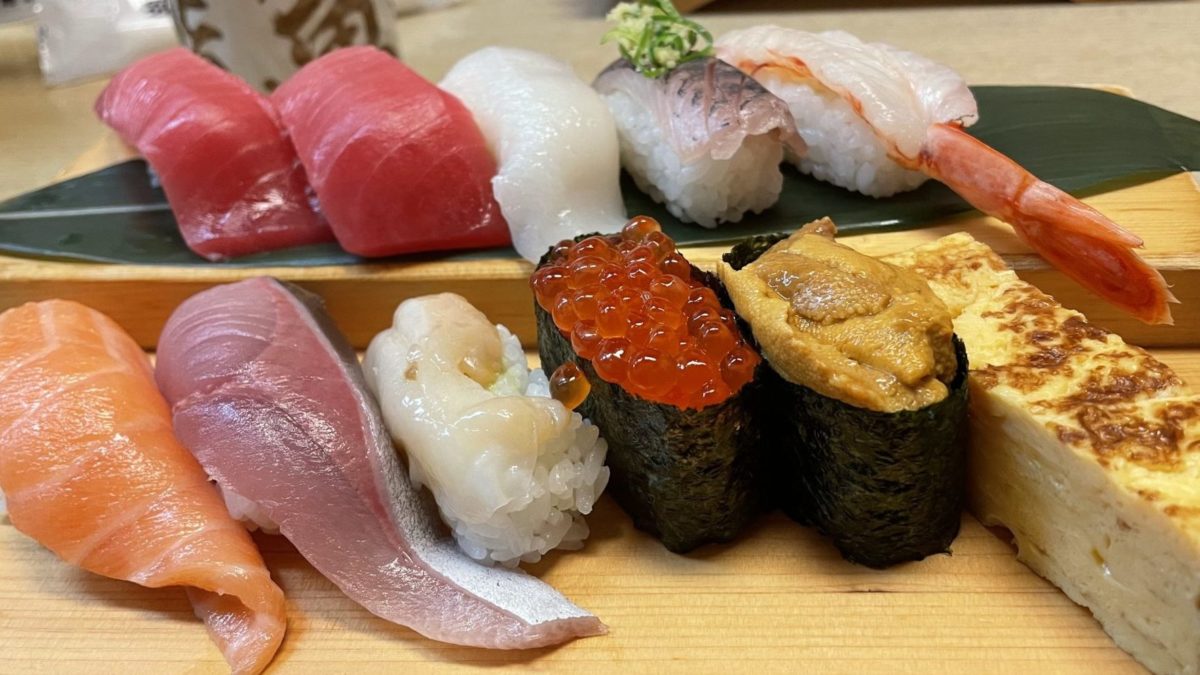
Sushi, perhaps the most iconic Japanese dish, is so popular that it’s hard to find someone who hasn’t heard of it. Globally cherished, sushi takes on a whole new life outside of Japan, where I’ve noticed a curious trend: many sushi bars overseas mainly feature salmon and tuna, missing the variety commonly found in Japan.
The soy sauce served abroad often tastes completely different from the specially blended versions used in Japan to enhance sushi’s flavor. If you’re a sushi enthusiast, experiencing the authentic taste with Japanese soy sauce is a must, there’s nothing quite like it!
Here’s a little glimpse into some unique Japanese sushi delicacies:
- Ebi (Shrimp) – There are many types of shrimp, some sweeter than others, but my absolute favorite is raw shrimp. Its translucent flesh has a firm snap, often described in Japanese as “puri puri,” a term uniquely used to express the delightful texture of shrimp. It’s a sensation unlike any other ingredient I’ve encountered. I highly recommend trying shrimp just to experience this “puri puri” texture for yourself!
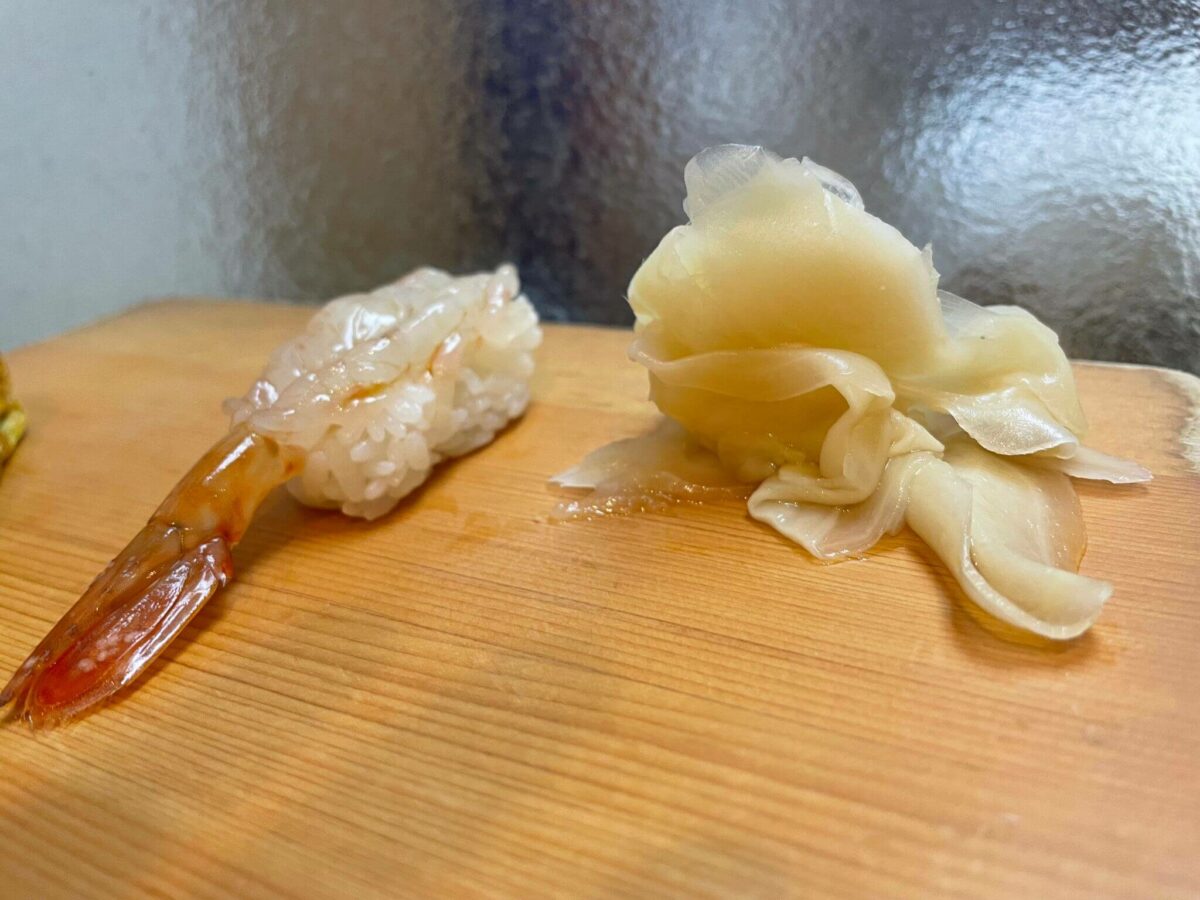
- Uni (Sea Urchin) – You might have seen Uni in dishes like creamy pasta, but have you ever tried it raw? It may look a bit grotesque at first, prompting you to question its taste, but the Uni served in fine dining restaurants and upscale sushi bars is exquisite. Don’t be fooled by its appearance; give it a try and let its rich, luxurious flavor convince you.
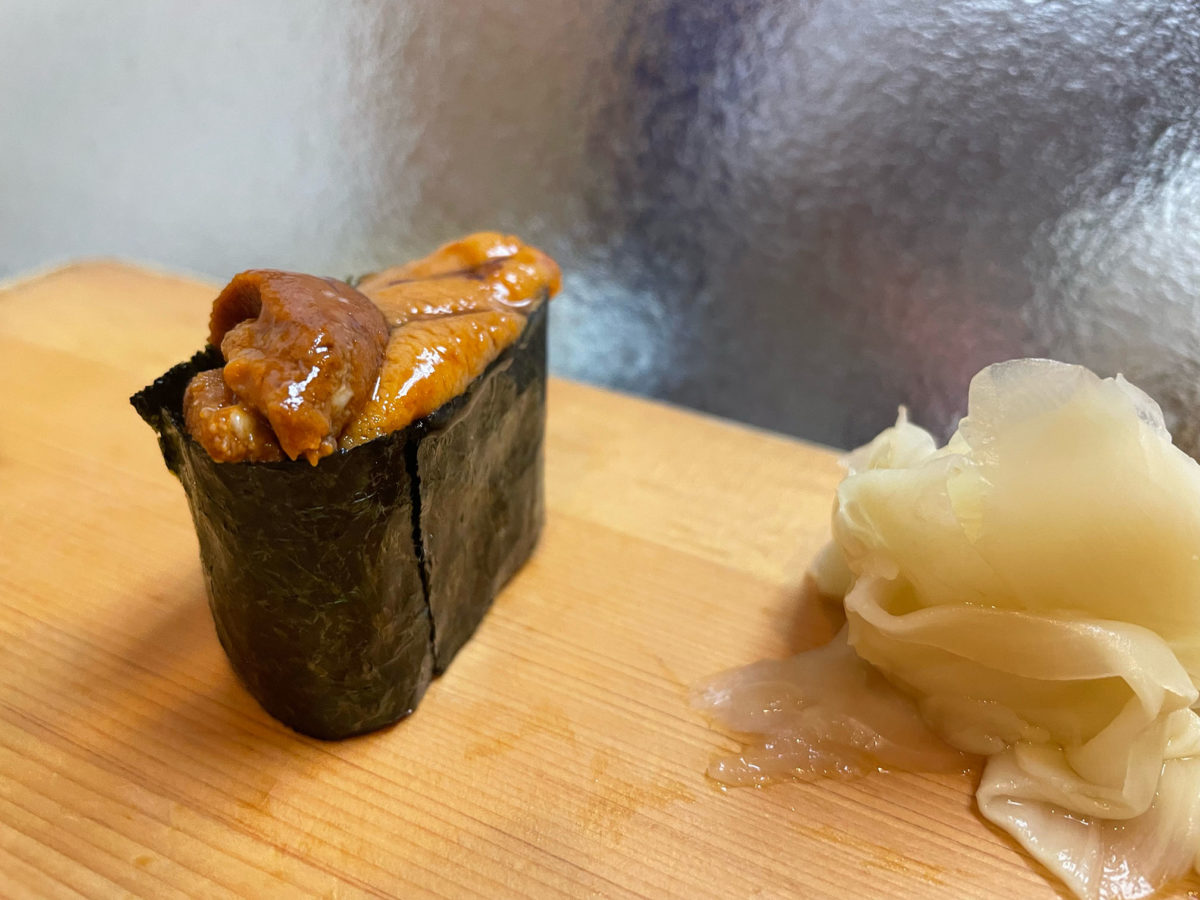
- Ikura (Salmon Roe) – While many are familiar with salmon, Ikura is its rich, flavorful roe. Bursting in your mouth, these pearls have a delightful pop, releasing a distinctive taste that fills your palate with a juicy explosion. It’s irresistibly delicious!
- Tsubugai (Whelk) – Tsubugai has a crunchy texture and a subtle, delicate flavor. I always make sure to have at least two pieces when it’s on the menu.
- Hotate (Scallop) – Among the various types of shellfish available at sushi restaurants, Hotate is notably fleshy and popular. Unlike other shellfish that may be chewy, scallops are soft and melt in your mouth with a subtle, sweet flavor. It’s so satisfying that one piece might just leave you wanting more.
Try these different types of sushi and deepen your appreciation for this incredible culinary art. Each bite is an adventure in taste and texture, sure to make any sushi lover fall even deeper in love with this Japanese delicacy.
2. Kaisendon

Kaisendon, often likened to sushi due to its use of raw fish, is a delightful dish where a variety of seafood is artfully arranged over a bowl of steamed rice.
This dish allows you to enjoy an array of flavors in just one bowl. Around coastal areas, you can find many eateries offering fresh Kaisendon ranging from 1,000 to 2,000 yen.
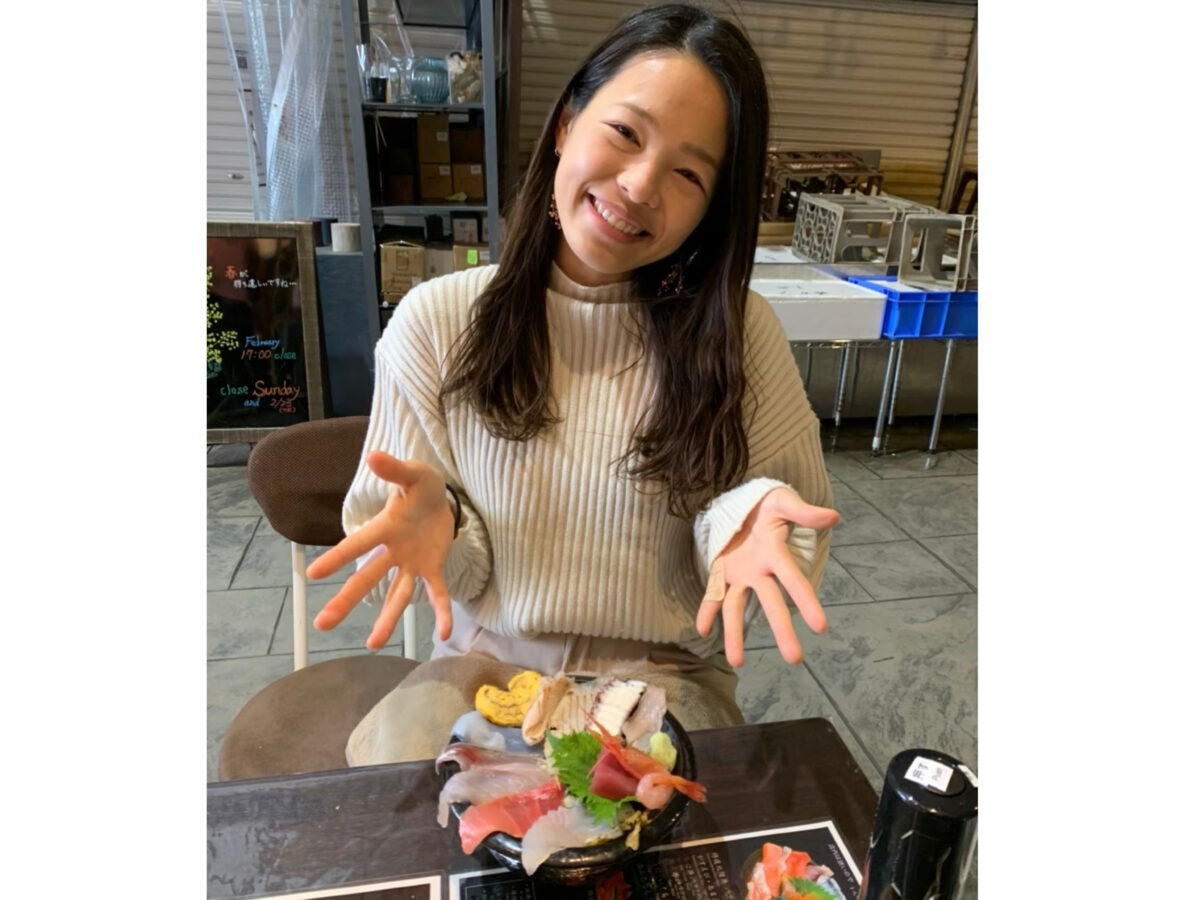
The visual appeal is so impressive that it’s almost compulsory to snap a photo before digging in. With so many choices atop the bowl, you might find yourself hesitating on where to start.
The same seafood varieties introduced for sushi are also recommended for Kaisendon. You have the option to tailor your Kaisendon with a select few seafood types, or you can dive into a more expansive culinary experience with a bowl that includes approximately ten different seafood varieties. This allows for a delightful exploration of the ocean’s vast flavors in just one dish.
Japanese Meat Dishes 🥩
3. Yakiniku
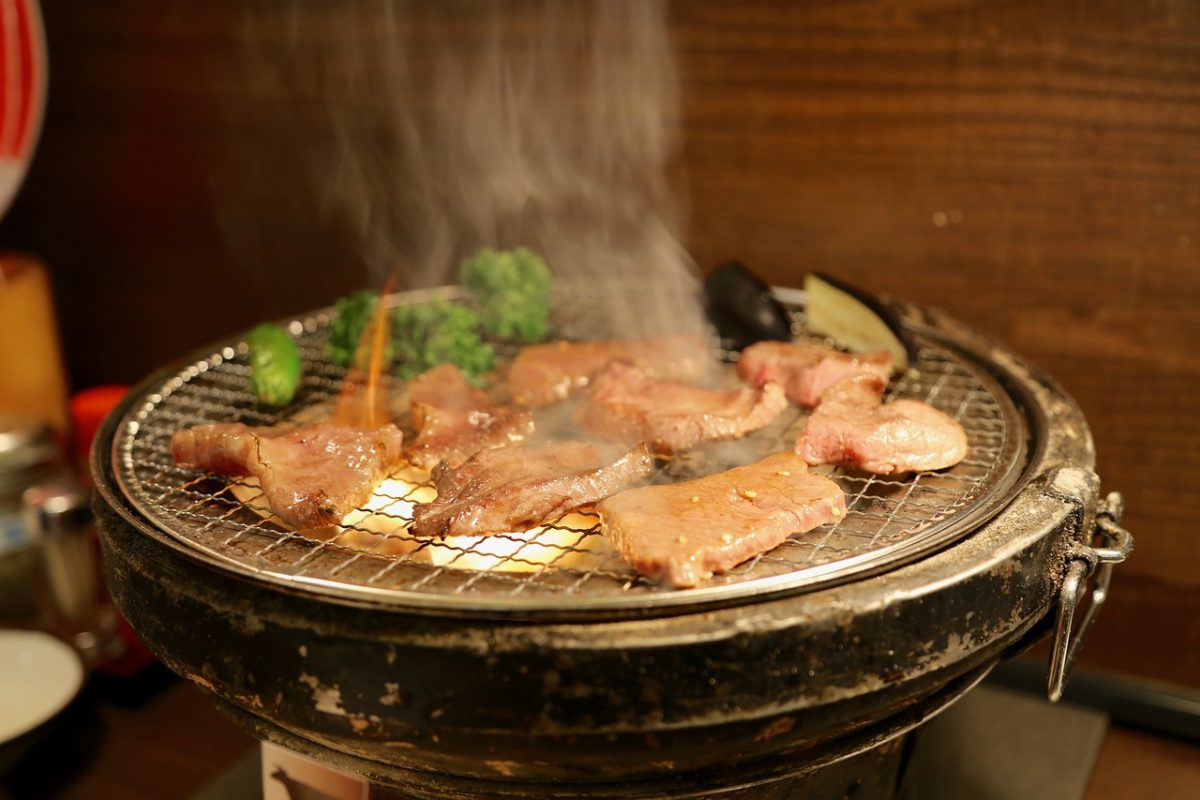
Yakiniku, a beloved Japanese tradition, involves grilling thinly sliced meats, typically eaten on special occasions when celebrating.
One of my most surprising discoveries while staying abroad was finding only thick blocks of meat at supermarkets, which starkly contrasts with the Japanese preference for finely sliced cuts ideal for yakiniku.
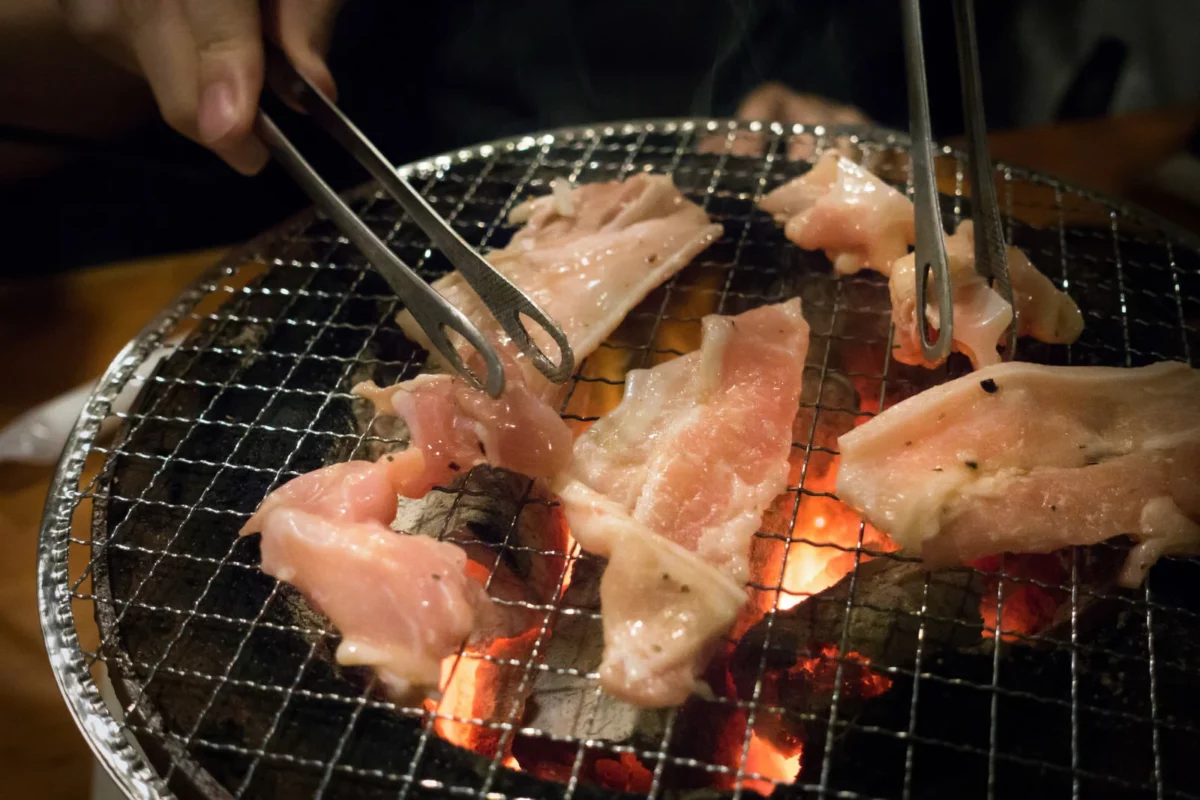
Unlike the Western style of grilling large chunks, yakiniku focuses on quickly grilling thin slices over a flame, often dipped in a special yakiniku sauce that adds a delightful umami burst.
Moreover, in Japan, there’s an appreciation for a variety of meat cuts, using nearly every part of the cow, which might not typically be consumed overseas. This culinary diversity is slightly disheartening to miss when abroad. Let me introduce you to some meat cuts you absolutely must try, each offering unique flavors and textures that enhance the yakiniku experience.
- Gyutan (Beef tongue) – Gyutan is so beloved in Japan that it’s often the first item ordered at yakiniku restaurants. The common phrase “Toriaezu, tan de” translates to “Let’s start with tongue,” highlighting its popularity. Gyutan is appreciated for its minimal fat and crisp texture, making it irresistible, especially when paired with a squeeze of lemon.
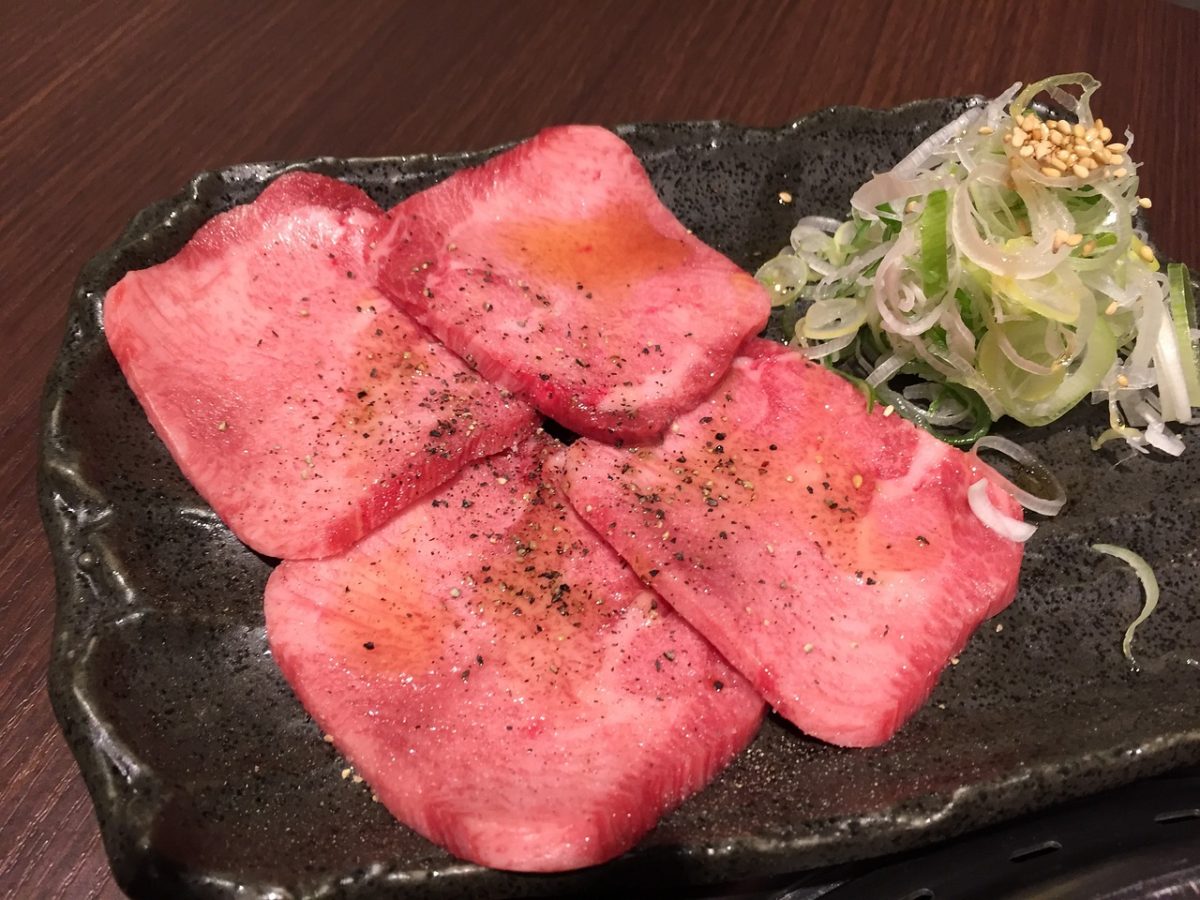
- Kalbi (beef ribs) – Kalbi is another favorite. Known for its slightly tougher texture, the generous marbling renders it tender and easy to eat. It’s exceptionally good when grilled and dipped in a savory sauce.
- Mino (beef tripe) – Mino might sound unusual as it involves eating the stomach lining of a cow. Yet, it’s incredibly tasty, offering a chewy texture that’s light in flavor due to its low fat content. This delicacy is a must-try for its unique texture and delicious taste. In Japan, both large and small intestines are savored, each offering varying amounts of fat and distinct textures. The large intestine, known as “tecchan,” is especially prized for its tender texture and rich fat content, which provides a juicy and elastic bite that many find irresistible.
- Harami (skirt steak of the cow) – Harami is another popular choice. It strikes a perfect balance with its resilience and moderate fat content, making it a delightful eat that’s both satisfying and surprisingly low in calories. This cut is known for giving the satisfying sensation of eating meat without being overly heavy, which contributes to its popularity among yakiniku enthusiasts.
4. Yukke

Yukke is a standout favorite at many yakiniku restaurants in Japan, capturing the hearts of diners as a must-order item.
This dish features finely chopped raw beef, reminiscent of sashimi but with a uniquely meaty twist. The beef is delicately seasoned with a special sauce and enhanced with sesame, green onions, and a raw egg yolk, creating a harmony of flavors that perfectly complements the tender meat.
The sauce and garnishes bring out the natural, subtle sweetness of the beef, making each bite a luxurious experience.
Since Yukke is served raw, it offers a melt-in-your-mouth texture that cooked meats simply cannot replicate.
5. Yakitori
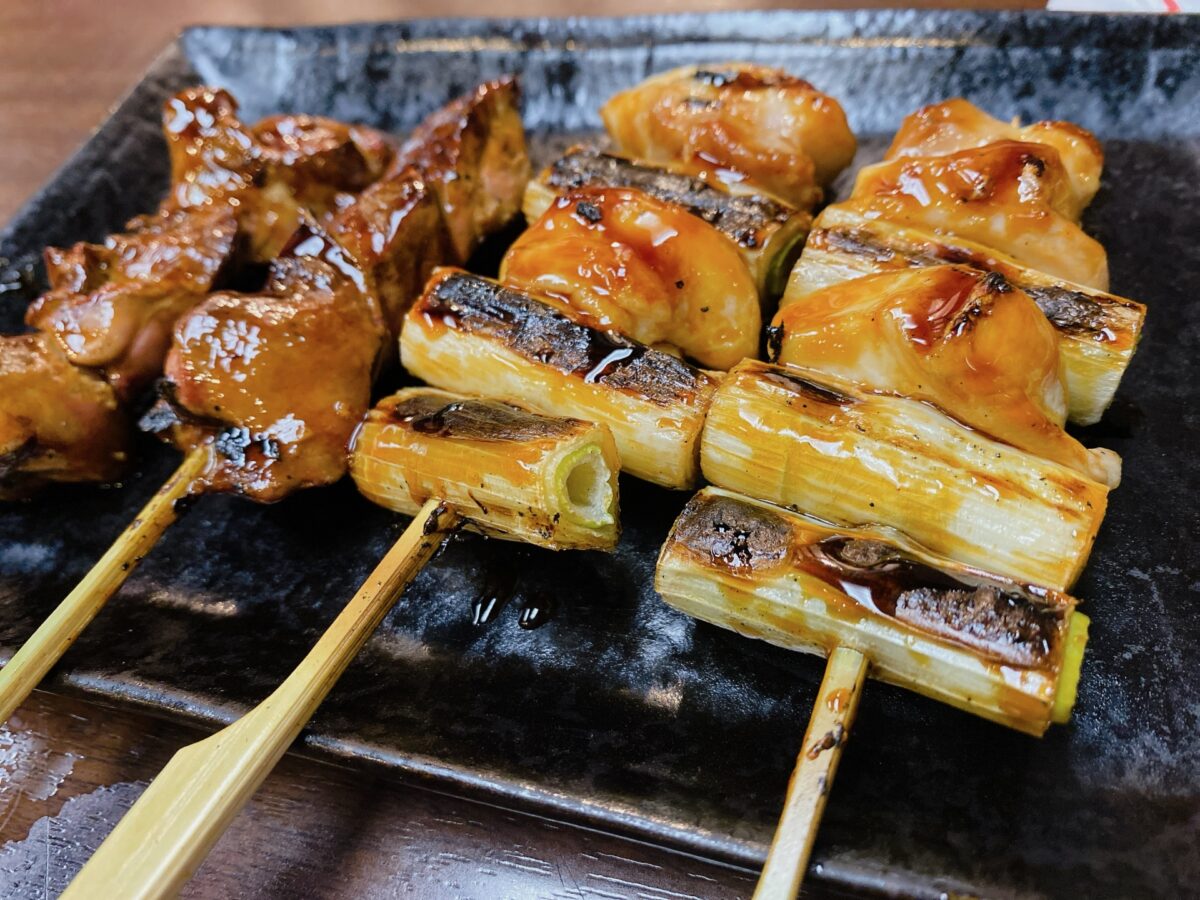
The savory world of yakitori, where bite-sized pieces of chicken, pork, and beef are skewered and grilled to perfection over charcoal flames.
Each skewer is lovingly brushed with either a simple sprinkle of salt or a rich, sweet homemade sauce, offering a delightful contrast of flavors. Choosing between salt or sauce can change your taste experience, but the rich depth of the yakitori sauce is truly unforgettable.
Enjoying these grilled delicacies with a beer in hand is the ultimate way to relax after a day’s work.
With an extensive variety of skewers to choose from, every visit promises a new flavor adventure. Don’t miss out on this essential Japanese izakaya experience!
Here’s a little glimpse into the savory world of Yakitori with these delightful varieties:
- Kawa (Skin) – Rich in fat and high in calories, the skin is irresistibly juicy and chewy, bursting with flavor in every bite.
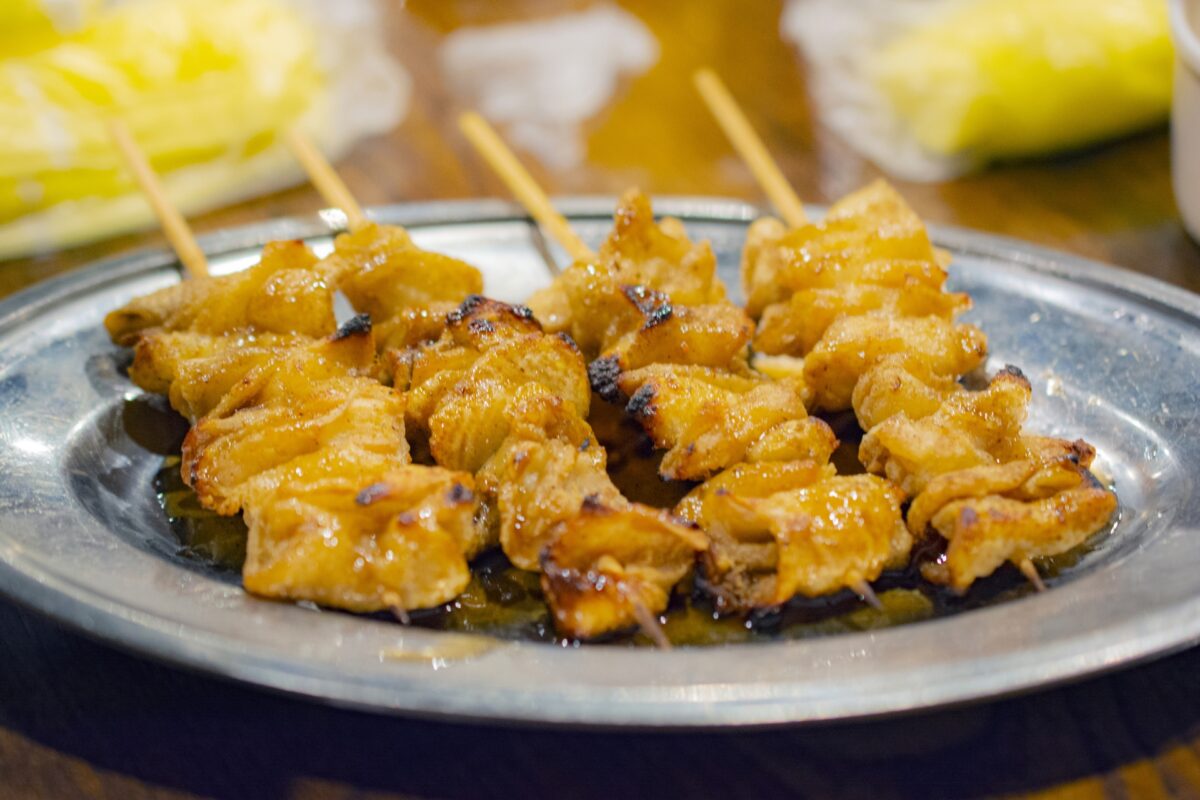
- Nankotsu (Cartilage) – Typically from the breastbone or knee, cartilage offers a crunchy texture that’s both surprising and satisfying, turning what might seem odd into a delightful crunch.
- Tsukune – These are tender meatballs made from a mix of minced meat and cartilage, offering a soft texture that’s easy for anyone to enjoy, including children.
- Kokoro (Heart) – Considered offal but without any off-putting smell, the heart is tender and has a pleasant chewiness that adds to its popularity.
- Seseri (Neck Meat): This part of the chicken is known for its tenderness and juiciness, providing a delightful chewiness that adds depth to its flavor.
- Sunagimo (Gizzard): This part of the stomach offers a unique crunchy texture, low in calories but high in protein, making it a guilt-free indulgence for health-conscious foodies.
- Bonjiri (Tail Meat): Located around the tailbone, this is the fattiest part of the chicken, known for its juicy bursts as you chew, creating an irresistibly rich flavor.
- Momo (Thigh Meat): A staple in Yakitori, thigh meat is universally beloved, not just in Japan but worldwide. While common, its juiciness and the way it pairs with tare sauce make it exceptional.
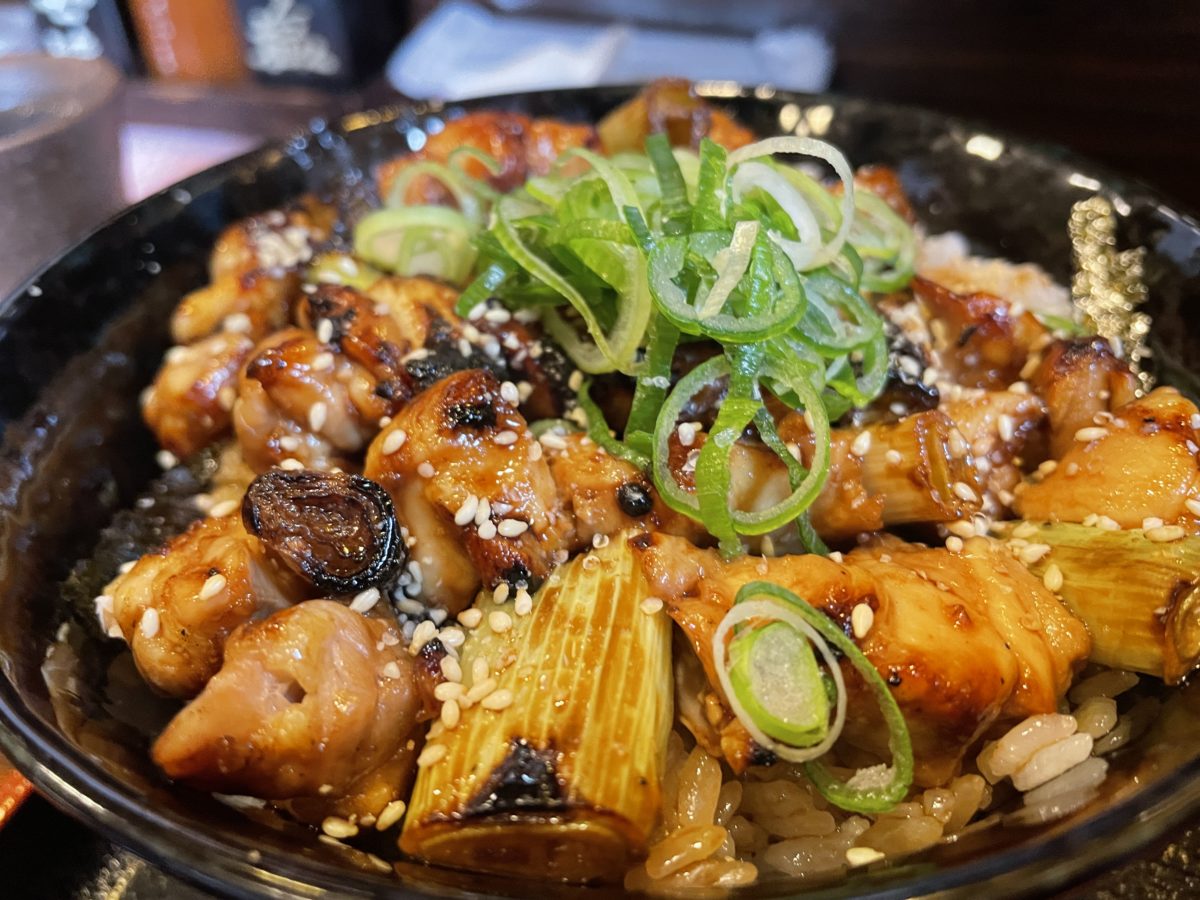
And for an alternative take, try de-skewering these grilled delights over a bowl of rice, drizzled with tare sauce for a delicious Yakitori donburi that will satisfy any appetite.
6. Hamburg (Hamburg steak)
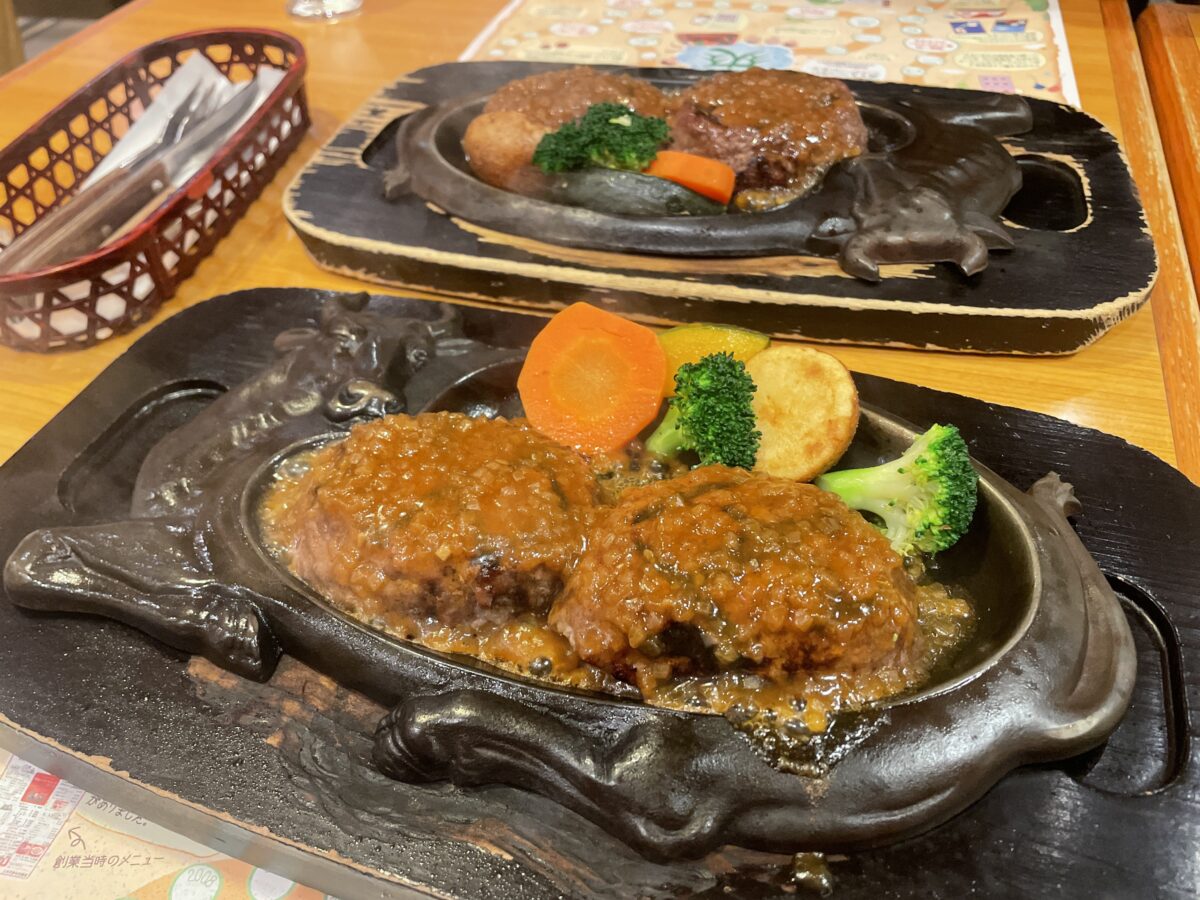
The classic Hamburg Japanese culinary delight that resembles a hamburger patty but is uniquely prepared with a blend of finely chopped onions and breadcrumbs, creating a remarkably fluffy and juicy texture.
When sliced into, the patty oozes with rich juices, making every bite irresistibly succulent.
Served sizzling on a hot iron plate and smothered in your choice of sauce – be it a rich demi-glace or a uniquely Japanese sauce infused with onions – While a rich Western-style demi-glace sauce is great, my personal recommendation is the uniquely Japanese-style sauce.
It’s a perfect match for the juicy Hamburg, enhancing the flavors with a touch of Japanese seasoning. This combination of succulent meat and finely tuned sauce creates a truly delightful dining experience.
Explore unique dining experiences in the article “Things to Do Around Mount Fuji,” which highlights must-visit Hamburg restaurants found exclusively in the Mount Fuji area. These eateries are part of a highly popular chain, beloved by locals and tourists alike for their mouthwatering dishes.
Make sure to check out these acclaimed spots for a taste of something truly special during your Mount Fuji adventure.
7. Butaniku no Shogayaki
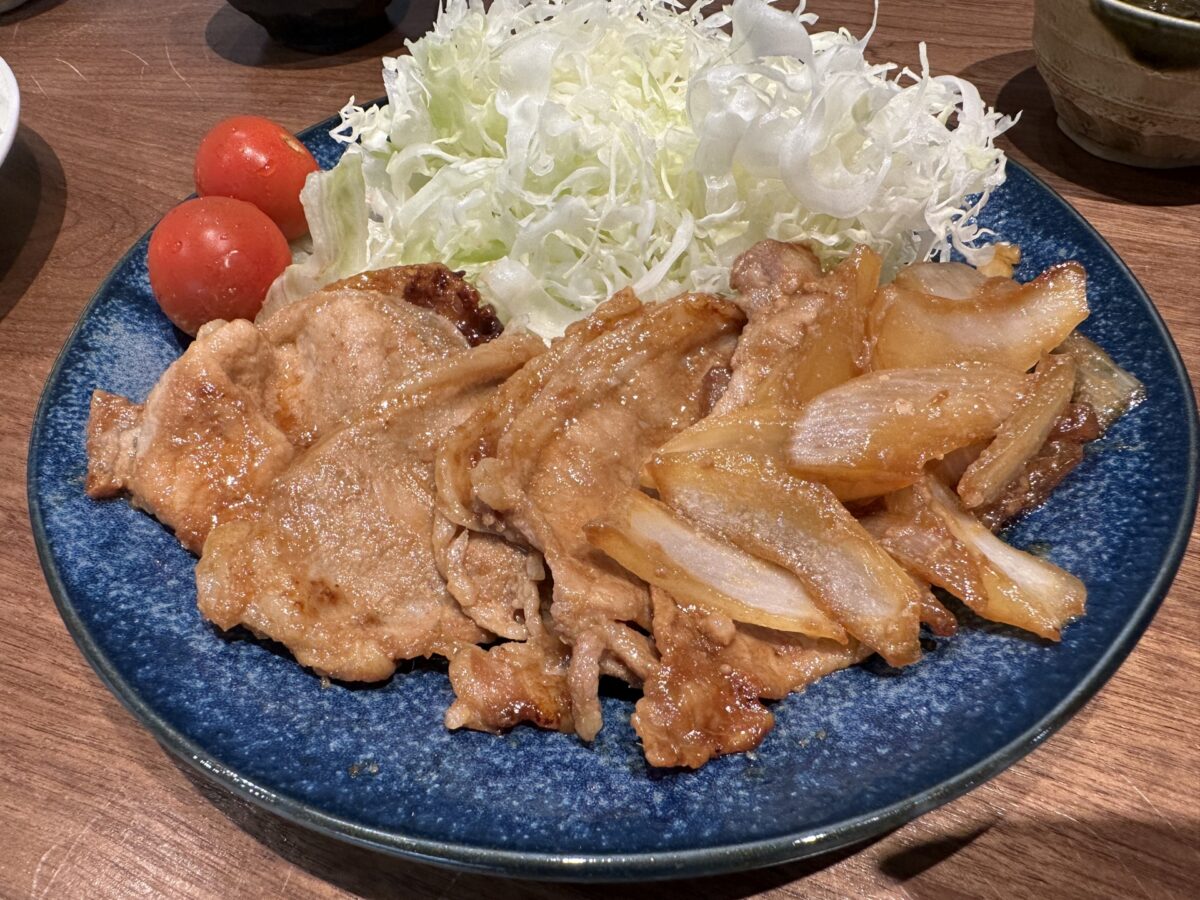
Indulge in the comforting simplicity of Japanese home cooking with “Butaniku no Shogayaki,” thinly sliced pork stir-fried with soy sauce and fresh ginger. This dish is a staple in Japanese cuisine, so universally loved that it’s hard to imagine anyone disliking it.
Often referred to as a surefire way to win over a man’s heart, pork ginger is particularly favored by men and is a frequent feature on the menus of casual diners across Japan.
Whether it’s a quick lunch or a homely dinner, this savory delight never fails to satisfy.
Japanese Noodle Dishes 🍜
8. Ramen

Ramen is universally adored, and I’ve yet to meet someone who dislikes it. Especially after a few drinks, ramen seems to reach its peak deliciousness, possibly the best meal in the world.
While ramen may seem simple, its depth is in the variety of its broths. Be it soy, miso, pork bone, or fish-based, each offers a unique complexity. The noodles themselves, thick or thin, straight or wavy, significantly alter the dish’s character by changing how they interact with the soup.

Crafted with ingredients like pork bones and chicken, simmered for hours to extract every ounce of flavor, the broth offers a rich taste and robust texture that clings to the noodles, making it impossible to stop slurping.
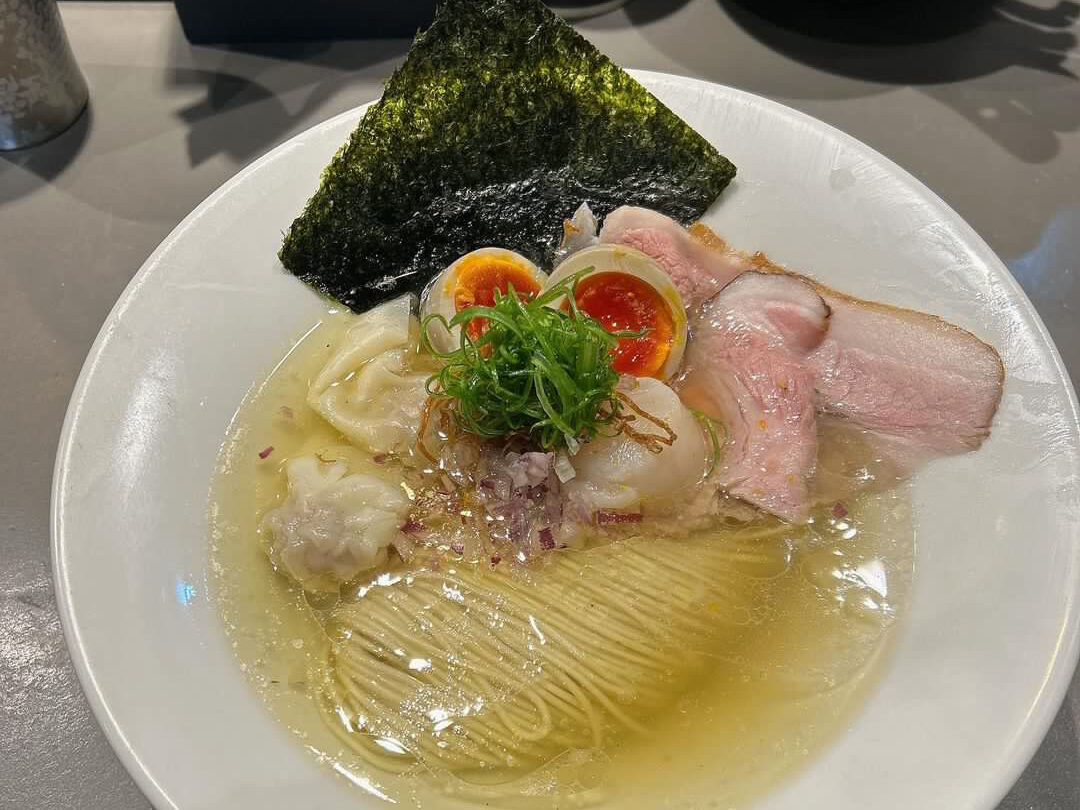
Popular ramen spots often have long waits, testament to the dish’s irresistible appeal. People are willing to wait hours for this culinary delight, which truly shows the unique place ramen holds in the culinary world.
9. Tsukemen

In tsukemen, the term “tsuke” means “dip”. The noodles and soup are served in separate containers, allowing you to dip the noodles into the soup before enjoying them.
Unlike typical ramen, the tsukemen broth is thicker and clings beautifully to the noodles, enhancing their flavor with every dip.

An enticing part of the tsukemen experience is the “soup-wari,” where after finishing the noodles, the remaining concentrated broth is diluted with a light broth to enjoy as a final savory sip, rounding out a truly unique culinary delight.
10. Mazesoba
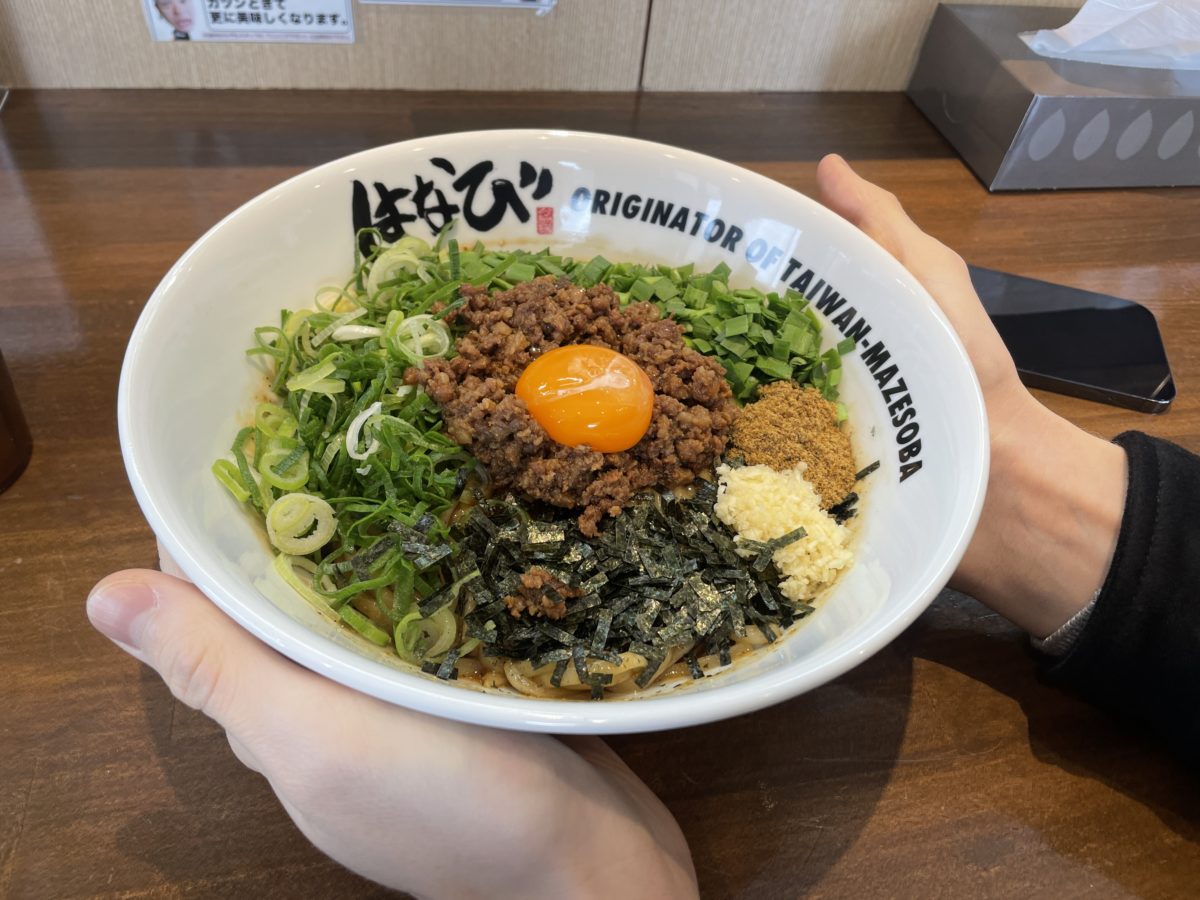
In mazesoba, the term “maze” translates to “mix.” Unlike typical noodle dishes that contain soup, mazesoba does not.
Instead, it features a unique blend of oil and special sauce. Raw egg yolk is often added, allowing the noodles to glide smoothly as you eat.
Toppings like minced meat, green onions, and seaweed add delightful accents, creating a supremely flavorful dish.
11. Udon
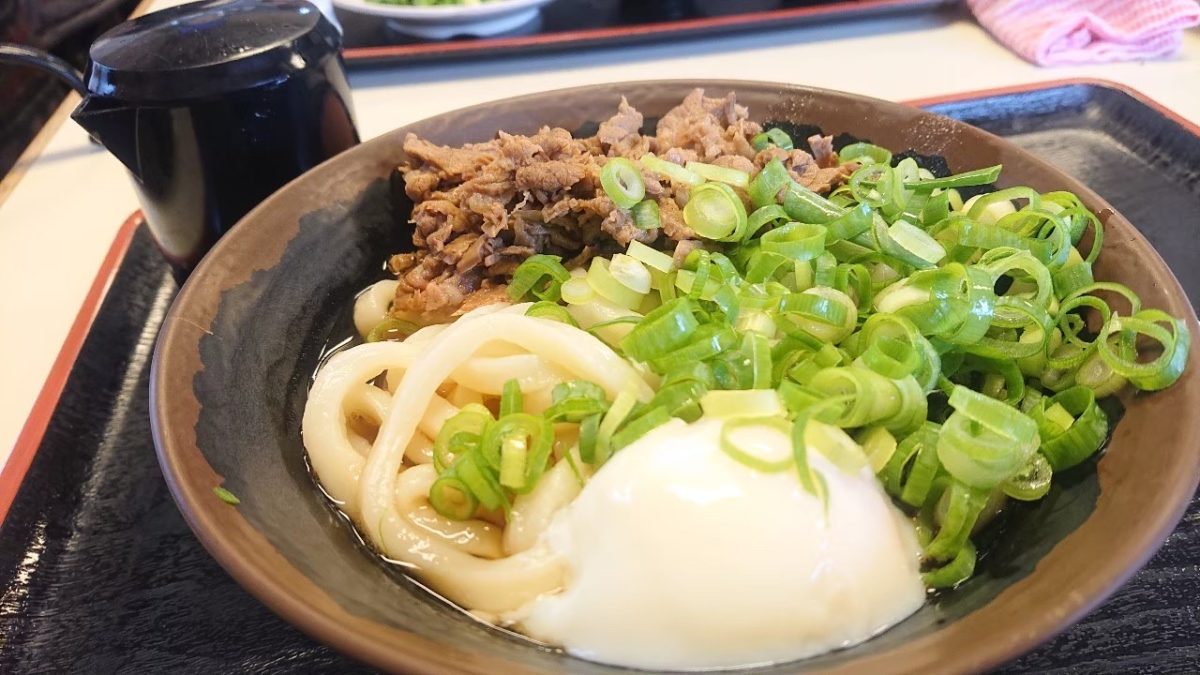
Udon captivates with its thick, chewy strands made from wheat flour, distinctly different from thinner ramen noodles. Its broth, lightly flavored with kelp or bonito flakes, is particularly soothing when you’re not feeling well, making it a comfort food staple.
The versatility of udon is enhanced with toppings like green onions and tempura, allowing each bowl to offer a unique taste experience.

Widely popular across Japan, the chain “Marugame Seimen” offers delicious, affordable udon, celebrated for its exceptional quality and value, this is my recommendation if you are looking for a place to enjoy udon.
12. Miso nikomi Udon: Nagoya specialty

Miso Nikomi Udon, a culinary gem of Nagoya, features uniquely firm noodles that set it apart from standard udon.
The broth, intensely rich in miso flavor, is so delicious that it’s hard not to sip it all in one go.
Served in traditional clay pots, the sizzle of the udon as it arrives adds an auditory delight to the dining experience, engaging all senses in the enjoyment of this dish.
Popular spots like “Yamamotoya Souhonten” and “Yamamotoya Honten” serve up this local favorite, making it an accessible treat throughout Nagoya.
13. Zaru Udon: Cold Udon
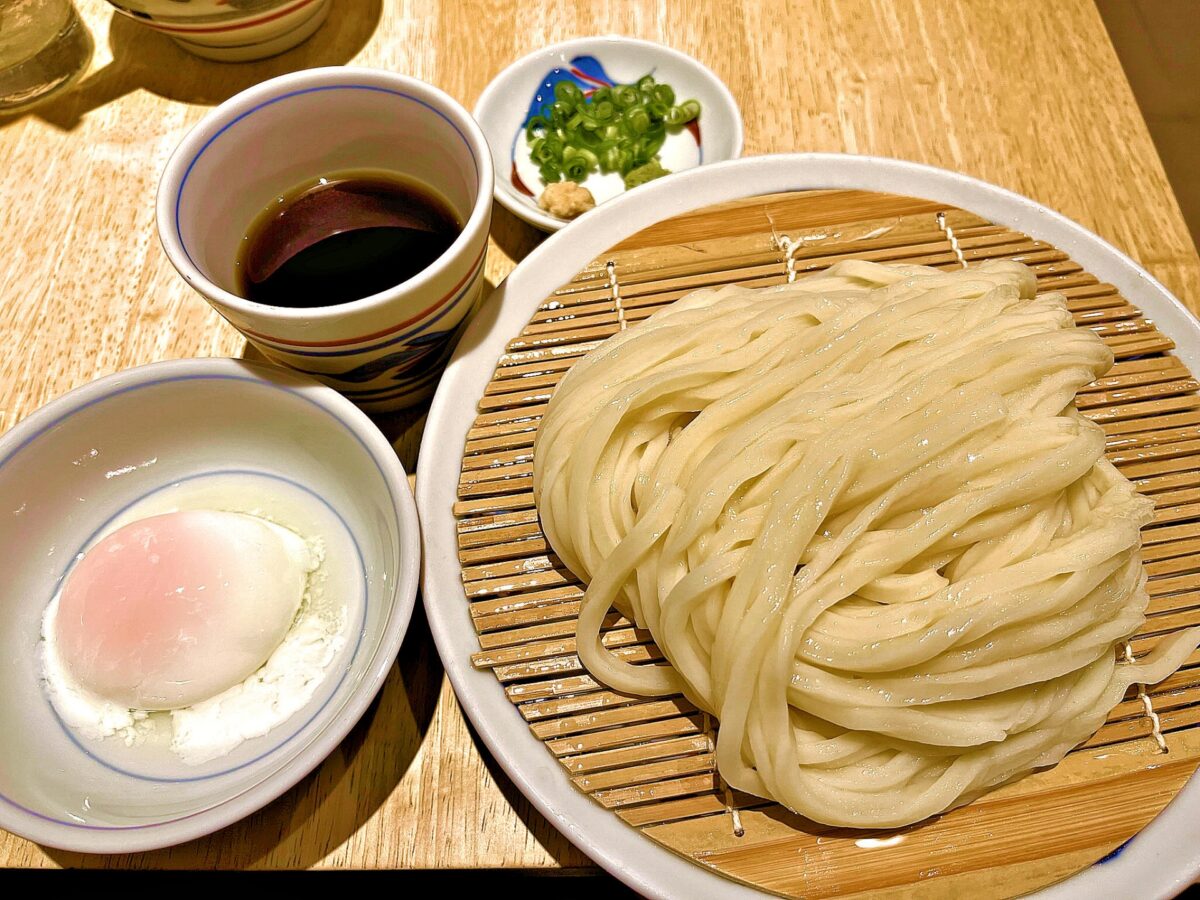
Zaru Udon emerges as a favored choice in the summer heat, featuring chilled noodles served on a bamboo mat, often accompanied by a dipping sauce with green onion.
This dish’s light and refreshing taste makes it the perfect remedy for those days when the heat makes eating seem impossible.
Whether you grab it from a convenience store or enjoy it at an udon shop, Zaru Udon offers a delightful, easily digestible meal that perfectly complements the summer season.
14. Soba
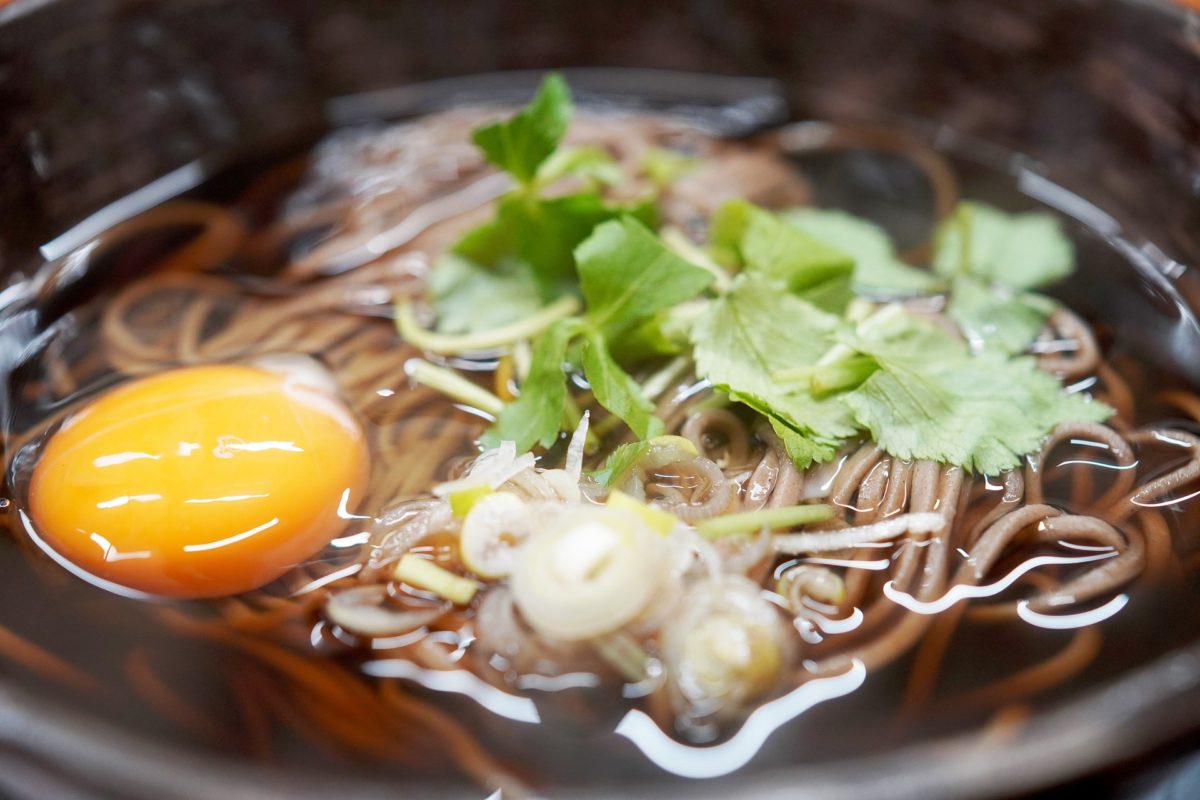
Soba stands out as a distinctively fine and grayish noodle made from buckwheat grains, offering a unique flavor profile quite different from udon.
Soba is not only rich in protein, vitamins, and dietary fiber, which help improve gut health, but its delicate flavor and easy digestibility make it a favored choice especially among elderly people.
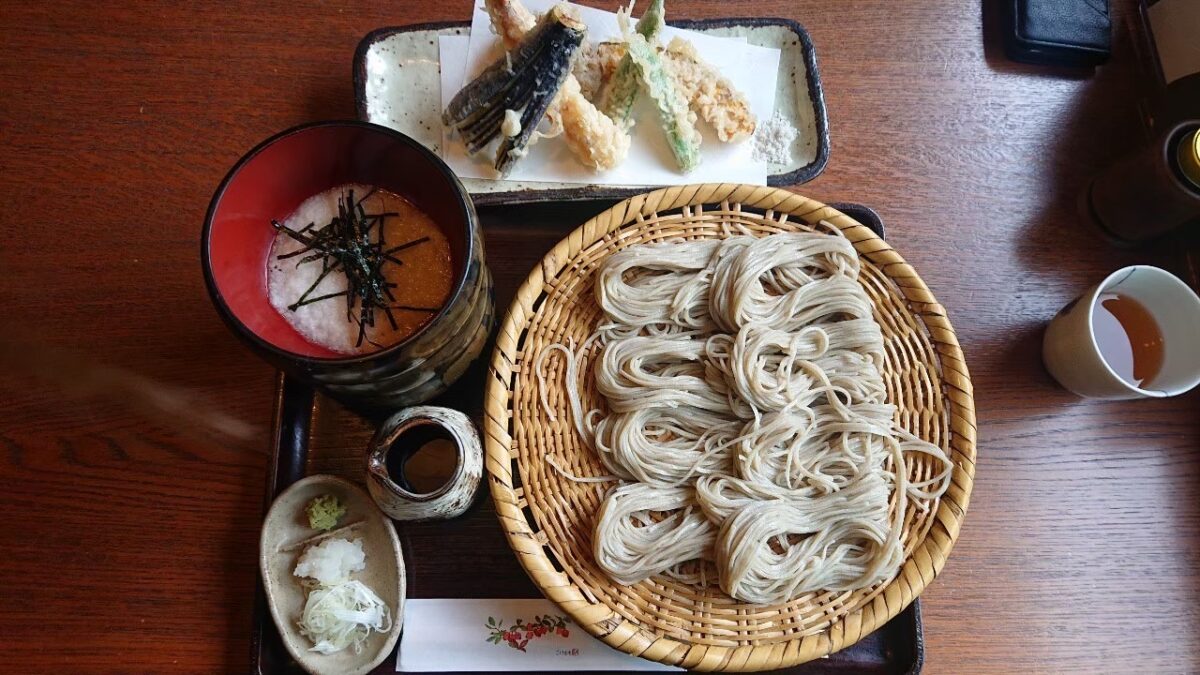
Just like udon, cold soba noodles, known as “zaru soba,” are a popular choice, especially in the summer. A favorite topping for zaru soba is “tororo,” grated yam with a delightful stickiness.
This topping clings beautifully to the soba, blending with the dipping sauce and enhancing the noodles with its sticky texture, contributing to the dish’s popularity thanks to its unique and smooth eating experience.
In the pristine mountain regions, where crystal-clear streams flow, you’ll frequently encounter traditional soba noodle restaurants. When visiting these scenic areas, don’t miss out on tasting the local soba – it’s a must!
As mentioned in our recommended nature spots in Japan article, the soba made near Togakushi Shrine is celebrated as one of “Japan’s Three Great Sobas.” This region is especially renowned among the numerous soba-producing locales across Japan, making it a top destination for noodle enthusiasts.
15. Negisoba: Fukushima specialty
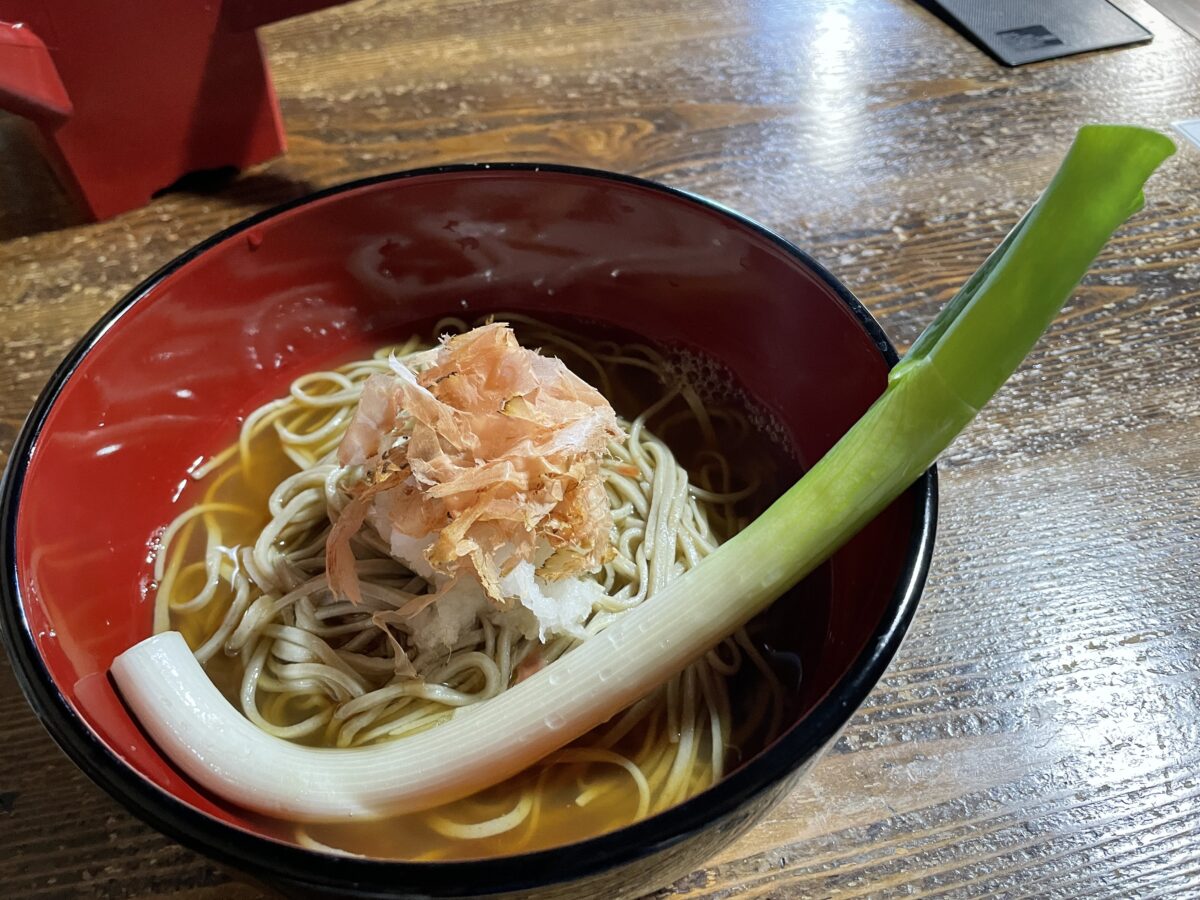
Located north of Tokyo, the delightful Ouchi Post town in Fukushima is renowned for its ‘Negi Soba,’ which stands out among Japan’s culinary offerings. This dish is quite unique, making it something I always longed to try at least once due to its rarity.
Traditionally consumed with hopes of prosperity and offspring, Negi Soba replaces regular chopsticks with a long green onion, offering a novel and engaging way to enjoy this noodle dish.
The significant size of the green onion used not only serves as an effective eating tool but also adds a crisp, slightly spicy accent to the gentle taste of soba.
Eating an entire green onion with your meal is a delightful challenge that few can conquer, including myself, as most people find it difficult to finish.
As the onion shortens, the difficulty of using it as an eating tool increases. In such cases, I recommend switching to chopsticks to continue enjoying your meal with ease. This unique dining experience is not only a test of skill but also adds a fun twist to enjoying traditional soba noodles.
16. Yakisoba
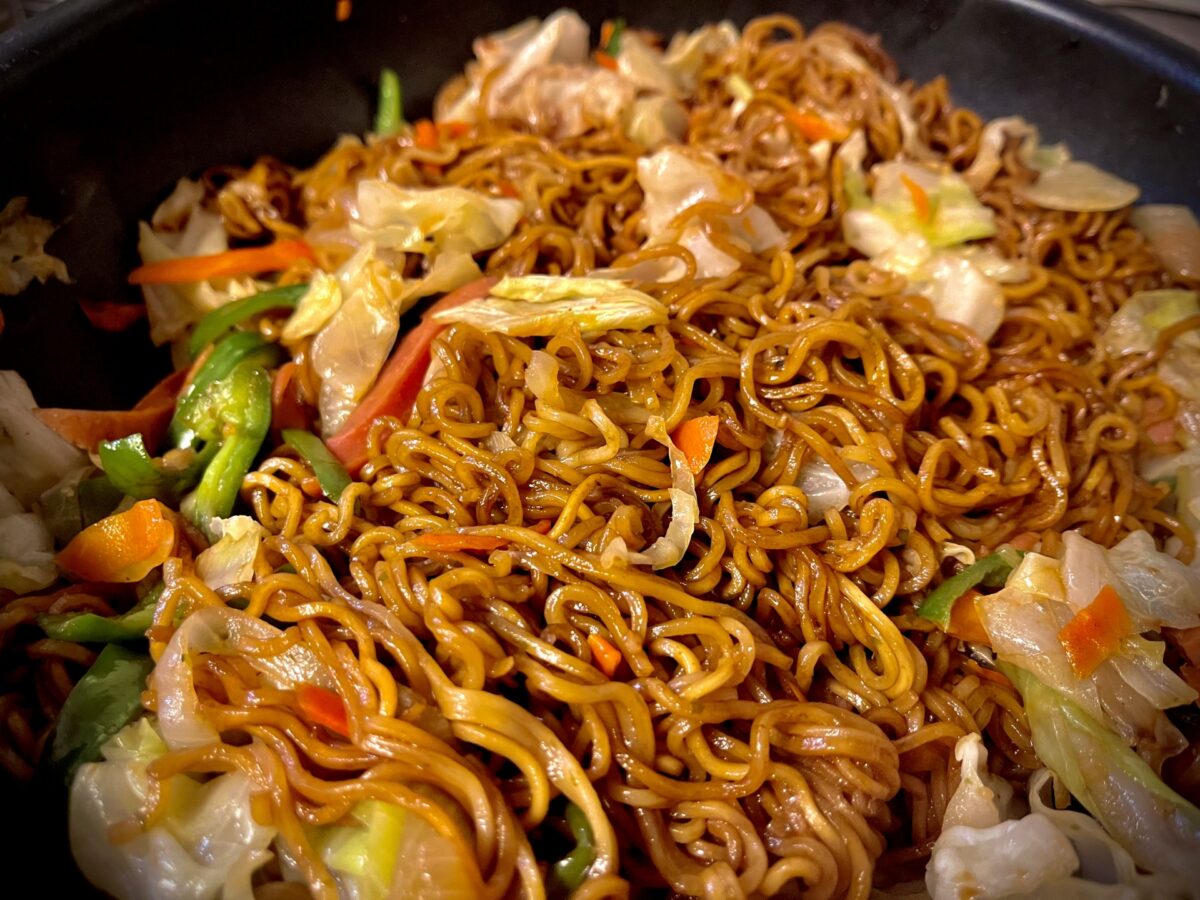
Despite its name, Yakisoba is distinctly different from the traditional soba noodles previously described. It features ramen-like wheat noodles stir-fried with a rich sauce, cabbage, and pork, creating an irresistibly savory dish.
This flavorful combination makes yakisoba a popular choice at okonomiyaki restaurants and is also available in convenient ready-to-eat packs at convenience stores.
Moreover, every convenience store is equipped with hot water, allowing you to simply pour it over the noodles and wait about five minutes for a quick and easy meal. For around 200 yen, you can enjoy a delicious serving of yakisoba, making it a must-try for its incredible taste and convenience.
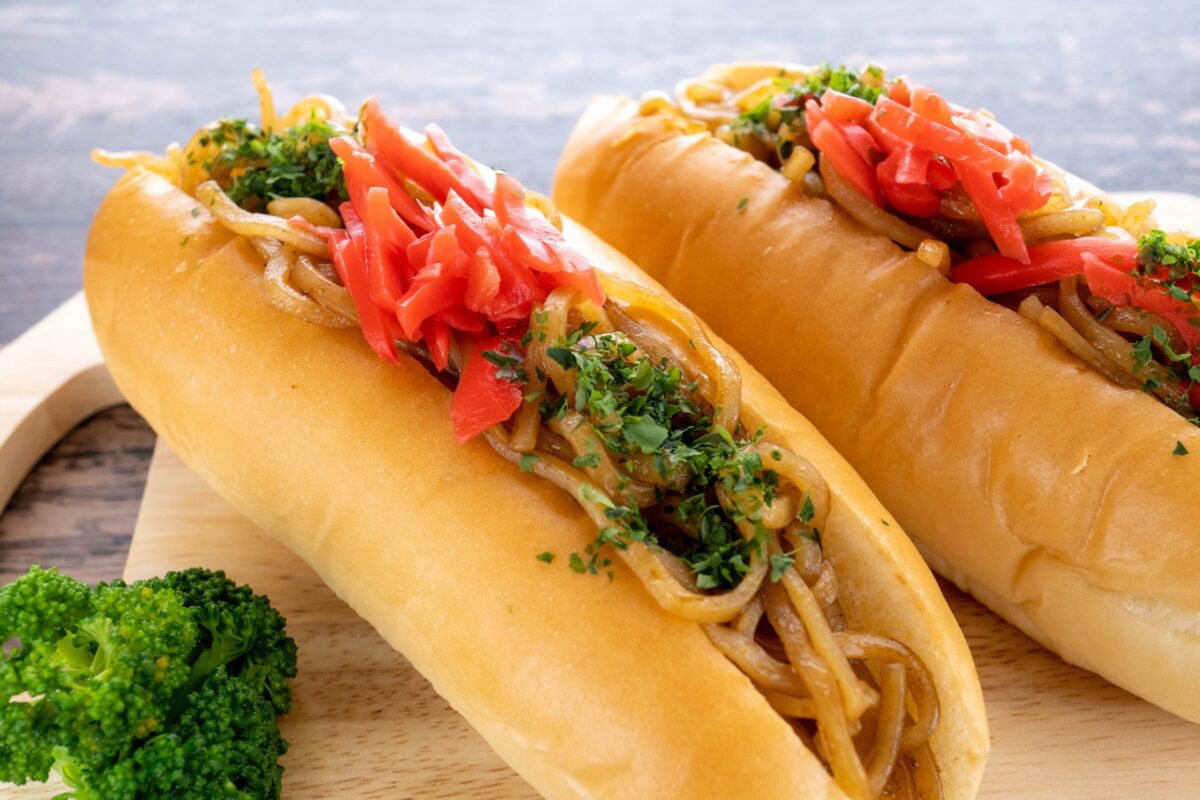
Get ready for something special – the Yakisoba Pan! (Pan is bread in Japanese)
This unique treat features yakisoba snugly tucked into a soft bun. The robust, savory sauce of the yakisoba infuses the bread, creating a perfect harmony with the bun’s milder taste.
This tasty bread is readily available in the bread aisles of convenience stores and supermarkets.
What’s more, it’s incredibly budget-friendly at only 150 yen. With such a tempting price, why not indulge yourself and try one today?
Fried food 🍤
17. Kushikatsu: Osaka speciality
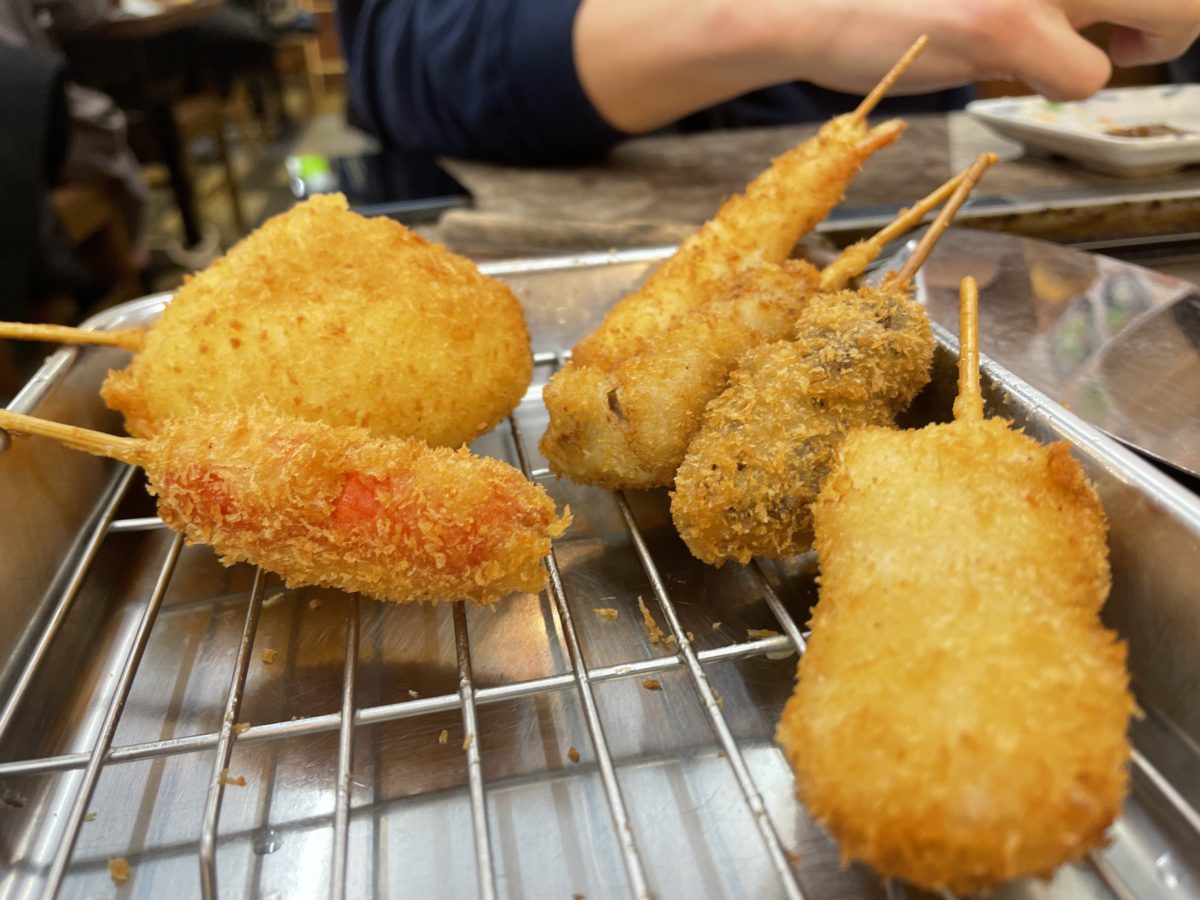
Kushikatsu, a staple in Osaka’s vibrant culinary scene, is a delightful treat available across many izakayas, making it a must-try even outside of Osaka. These are my recommended Kushikatsu restaurants in Osaka.
This dish consists of bite-sized pieces of meat and vegetables skewered, breaded with flour, and deep-fried until golden. With their small size, you can easily indulge in several skewers in one sitting without feeling overwhelmed.
Specialty kushikatsu bars often boast menus with over 100 variations, offering endless flavors that keep you ordering more.
Whether enjoyed plain or dipped into a rich, specially crafted sauce, kushikatsu offers a unique dining experience. While all options are tempting, I’ll share my personal favorite picks from the extensive menu, ensuring a flavorful adventure that’s both satisfying and endlessly delicious.
- Renkon (Lotus Root) – It is a crunchy and refreshing experience eating renkon, the underground stem of the lotus flower. Cherished in Japan and also enjoyed in India and China, this crunchy delicacy is a rare find in most other countries.
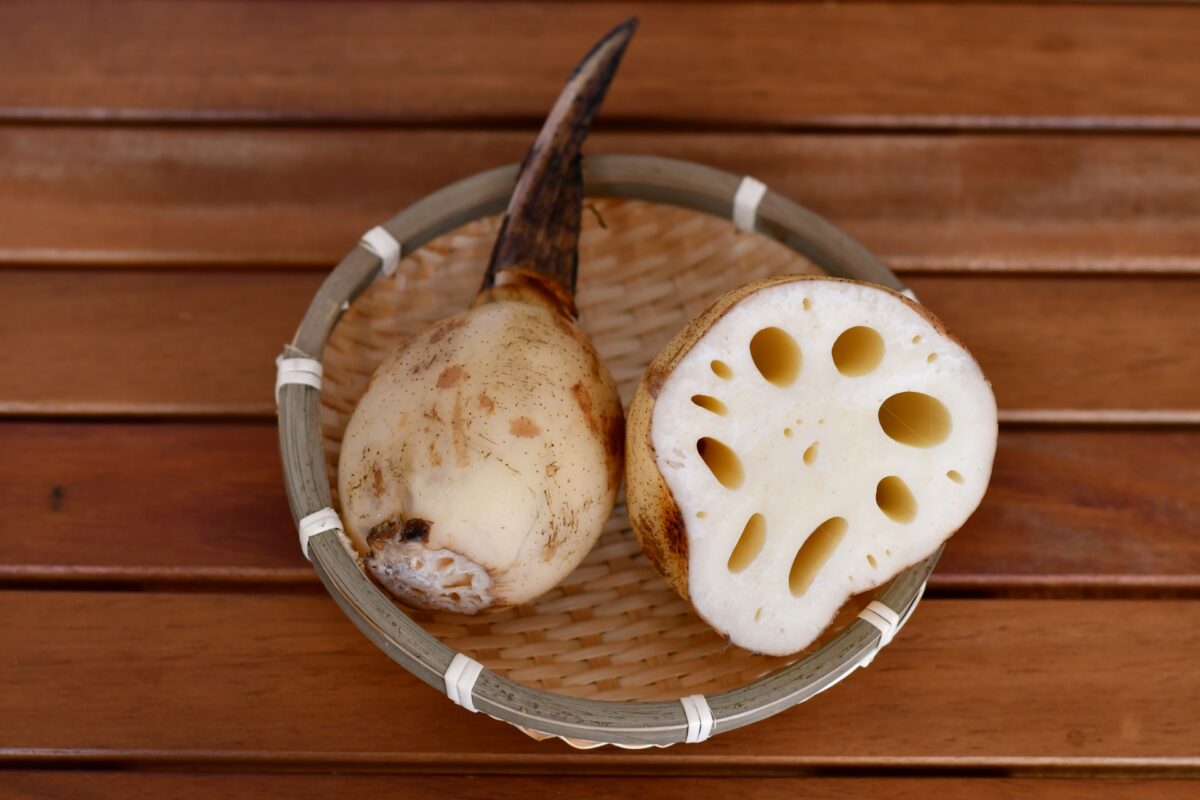
- Beni Shoga (Pickled Ginger)– Made by marinating ginger in vinegar, this garnish is familiar but uniquely consumed in sliced form. It’s the perfect crunchy yet not-too-oily complement to many dishes, providing a zesty lift.
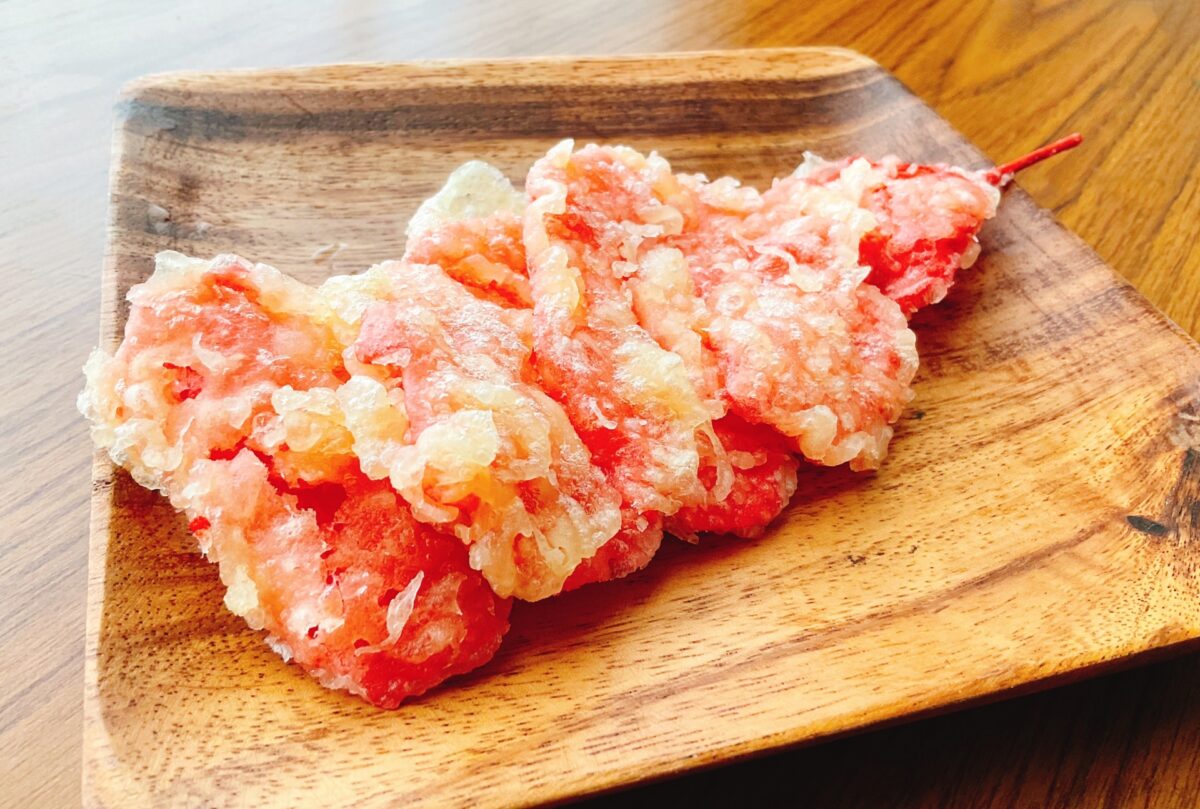
- Uzura no tamago (Quail Eggs) – Bite-sized quail eggs are beloved by both children and adults alike. Even if you fry a regular egg, it won’t taste the same as a quail egg. Whether served plain or dipped in sauce, fried quail eggs are delicious, making them a delightful treat in any meal.
- Yamaimo (Yam) – Not your ordinary tuber, yamaimo is known for its slimy texture that turns wonderfully fluffy when cooked. It offers a unique eating sensation that might just surprise you.
- Pork Belly – A staple in many cuisines but never ordinary. The burst of juicy flavors from the belly cut makes every bite a delight.
Each of these ingredients showcases the versatility and depth of flavors that can be found in traditional and modern Japanese dishes.
18. Tonkatsu
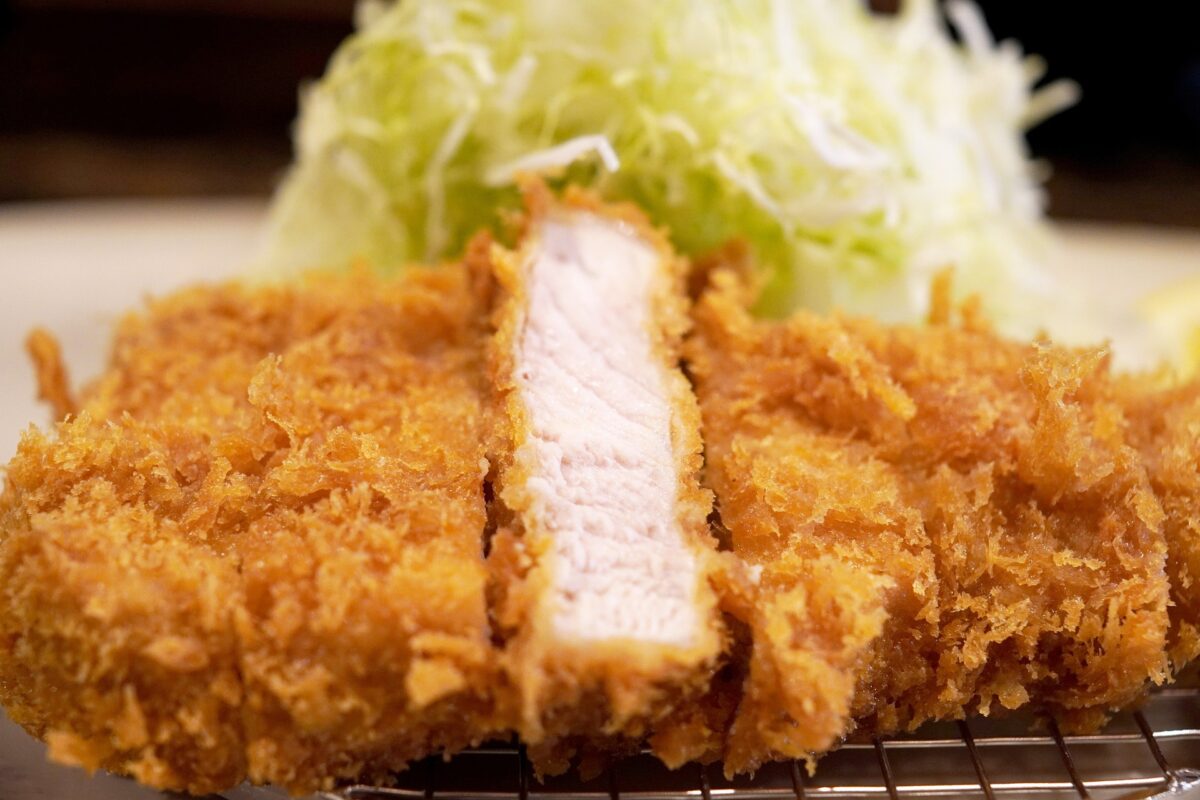
Tonkatsu is a deep-fried dish featuring thick cuts of pork coated in flour, beaten eggs, and breadcrumbs. The exterior is crispy, while the interior remains juicy with flavorful meat juices.
Depending on which part of pork, the texture and fat content can vary, catering to different preferences.
The special tonkatsu sauce is a rich blend of various fruits, creating a deep, harmonious flavor that perfectly complements the dish. Alternatively, tonkatsu can be enjoyed with a light ponzu sauce or a savory miso glaze.
The robust flavor of the sauce and the fried pork pairs excellently with finely shredded cabbage, often served on the same plate as the tonkatsu. The fresh, crisp cabbage provides a refreshing balance to the rich dish, making it an essential accompaniment.
19. Katsudon
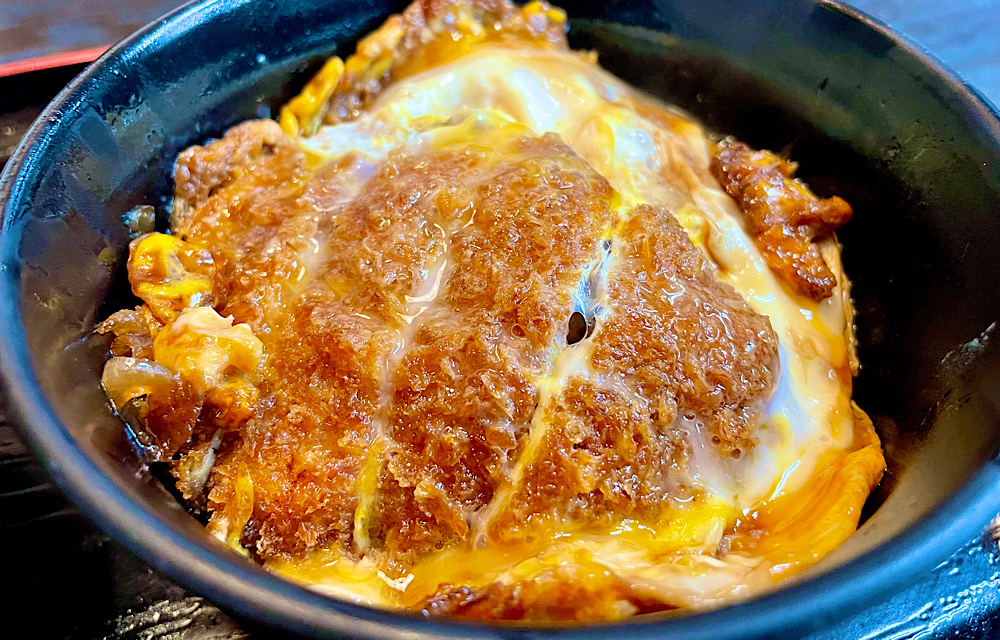
Katsudon is a bowl dish where the aforementioned tonkatsu (breaded and deep-fried pork cutlet) is simmered with beaten eggs and served over rice.
This combination of fried pork and rice creates a hearty and satisfying meal.
The crispy coating of the tonkatsu absorbs a sweet broth made from soy sauce and sugar, while the simmered onions release their natural sweetness.
The result is a dish where the flavors blend perfectly with the rice, making katsudon exceptionally harmonious and irresistible.
20. Karaage: A Japanese Izakaya Delight
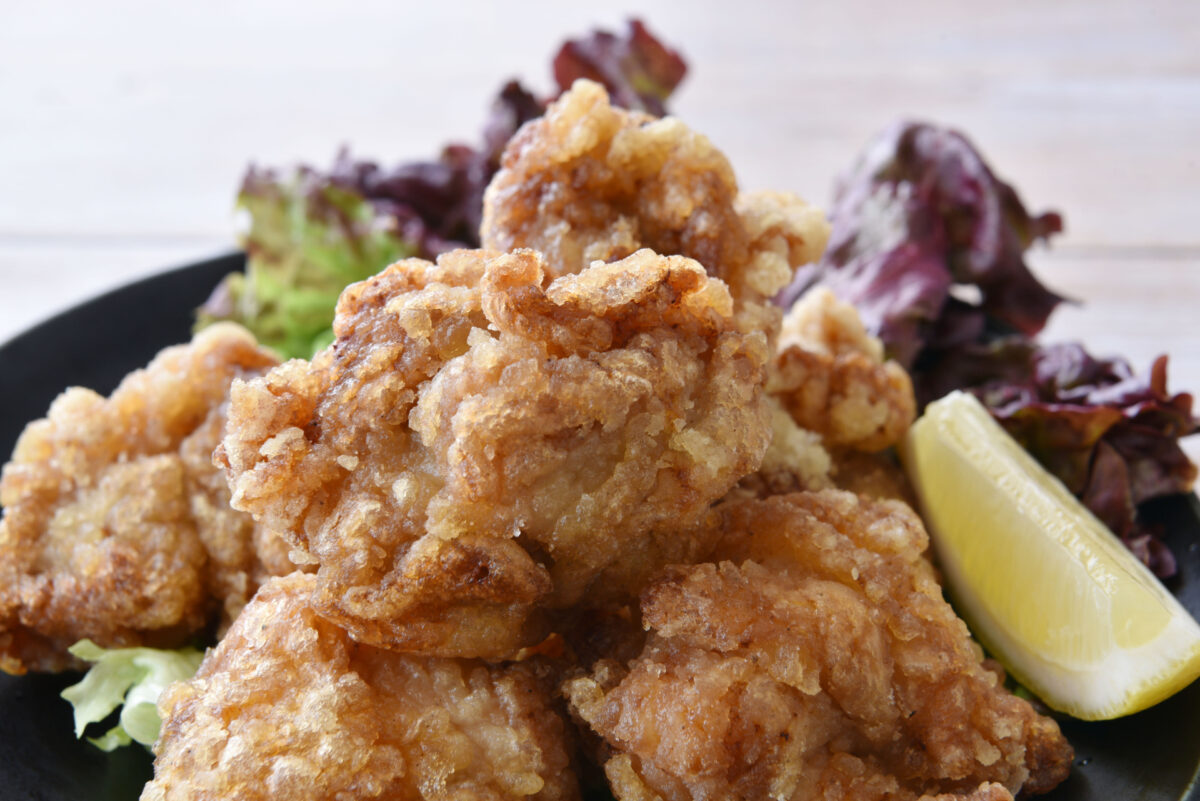
Karaage is a quintessential Japanese fried dish that resembles fried chicken.
The key difference lies in its preparation: while fried chicken coats only the exterior with seasoned batter, karaage flavors soak deep into the meat itself before frying.
The meat, often thighs for its juiciness and tenderness, is marinated in a mixture of soy sauce, garlic, and ginger, ensuring each bite is richly infused with flavor. In contrast, the exterior is crisply fried, offering a delightful textural contrast.
This popular izakaya menu item is a treat for anyone who enjoys fried chicken, with few able to resist its charms.
21. Ebi Fry: A Japanese Izakaya Delight

Japan consumes more shrimp than any other country in the world, which likely gave rise to this beloved dish.
Ebi Fry features plump shrimp with a delightful bounce, coated in breadcrumbs and deep-fried to achieve a crisp exterior that gives way to a succulent texture.
This popular dish, characterized by its light and clean flavor, stands in contrast to heavier Japanese foods like tonkatsu, making it easy to eat bite after delightful bite.
Typically around 10 cm in length, some restaurants serve a jumbo version that reaches up to 30 cm, adding a dramatic flair to the dining experience.
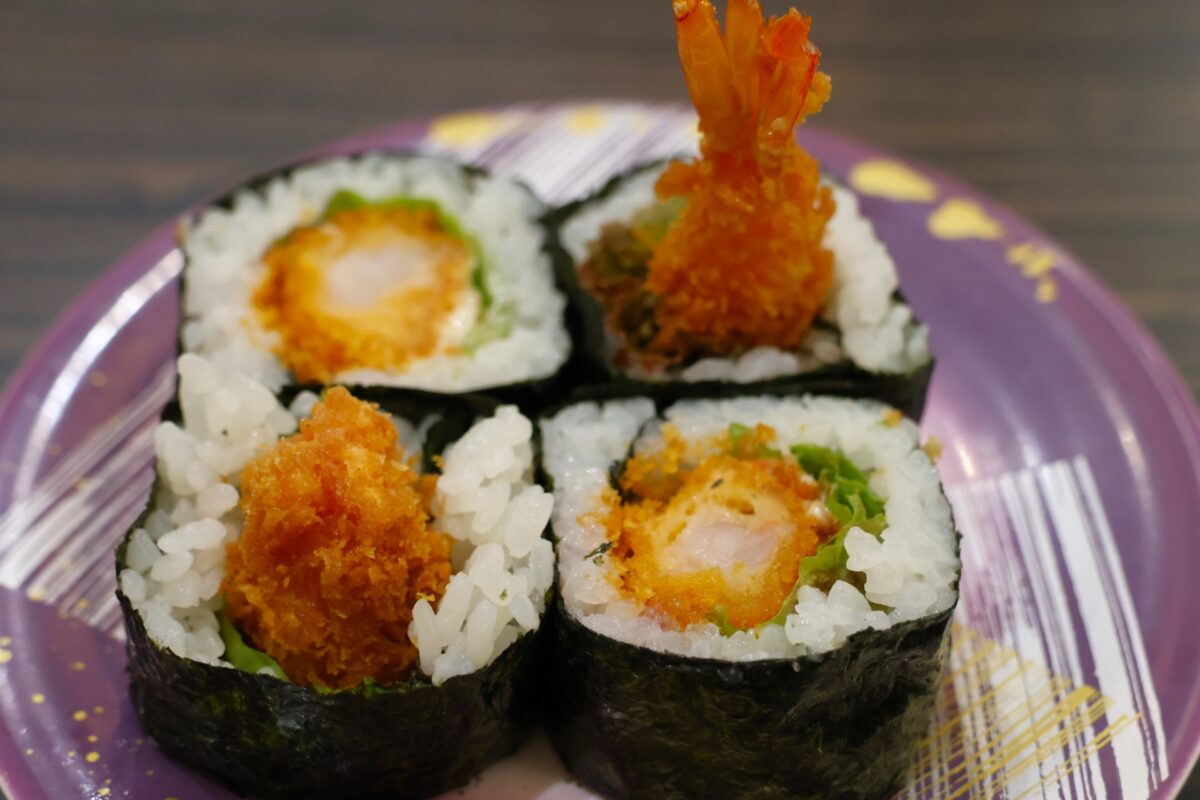
Additionally, some sushi restaurants creatively offer Ebi Fry sushi, providing a unique and highly recommended taste adventure.
22. Tempura
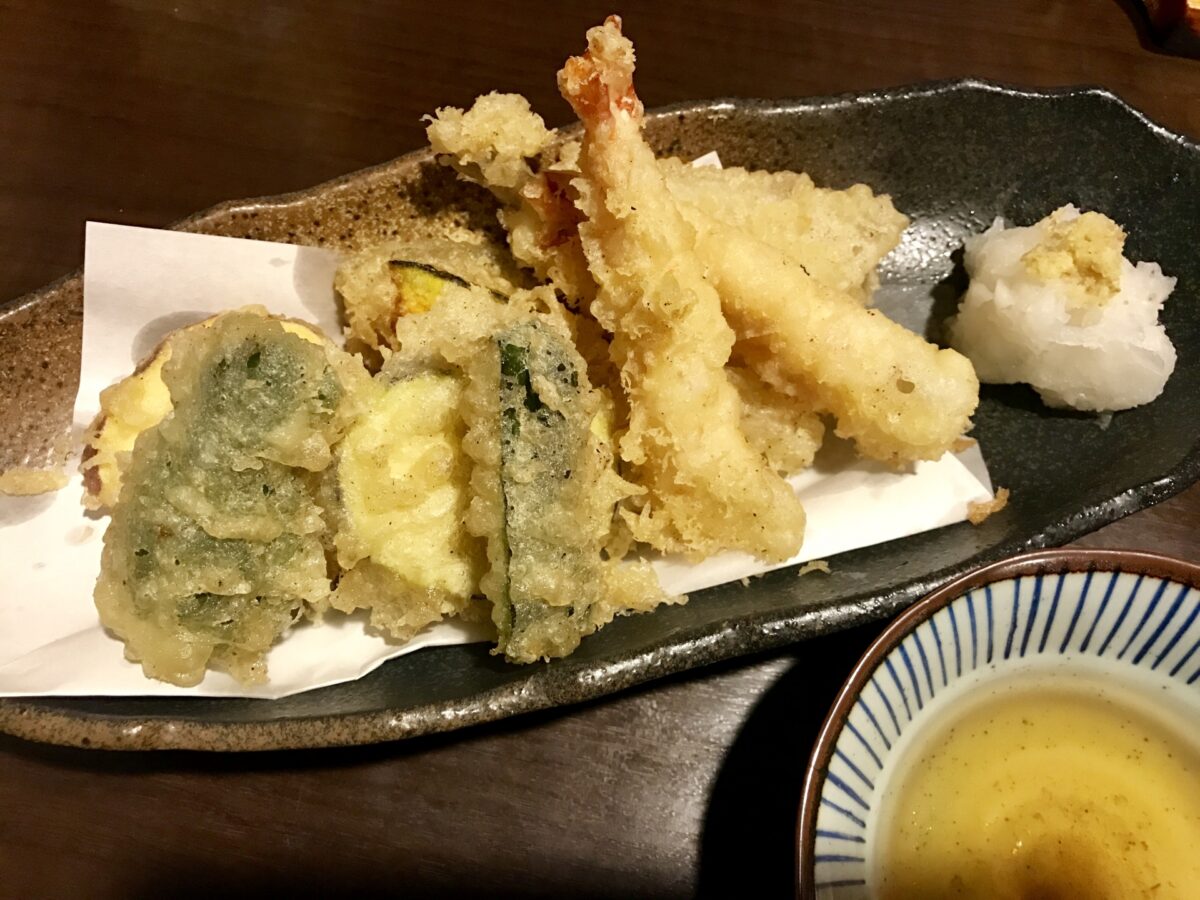
Tempura stands out as one of the most beloved Japanese dishes among international food lovers.
A staple in Japanese home cooking, tempura is not your ordinary fried food. Unlike Western-style breaded frying, tempura involves dipping vegetables and seafood into a light batter made from flour, egg, and water.
This unique batter creates a distinctly crisp texture, offering a delightful crunch that sets it apart from other fried foods.
Here’s a little glimpse into the savory world of Yakitori with these delightful varieties:
- Satsumaimo (Japanese Sweet Potatoes) – Unrivaled in sweetness and fluffiness, Japanese sweet potatoes sit at the pinnacle of comfort foods. My epiphany came while living in Europe, where I realized they simply couldn’t match the exquisite taste of Japan’s variety. Renowned for their flavor, they were even celebrated by the Washington Post as the world’s most delicious. Sweet as chestnuts and soft, these sweet potatoes are so versatile they’re even used in desserts. Once you start eating them, it’s impossible to stop!
- Ebi (Shrimp) – Diverging from the typical Ebi Fry, these shrimp maintain a delightful plumpness, offering a distinct and exquisite taste. Whether you’ve enjoyed Ebi Fry or not, trying shrimp in its pure form is highly recommended.
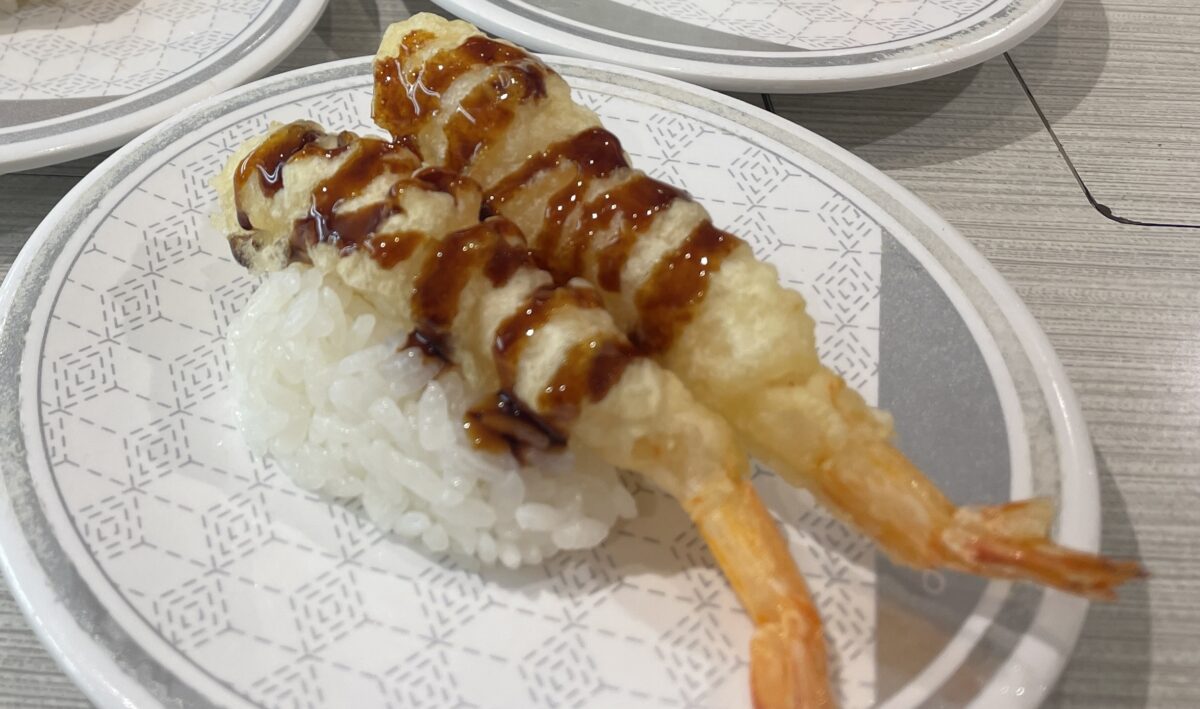
- Chikuwa – This Japanese fish cake, made from finely minced fish wrapped around bamboo and grilled, is a nutritious delight. It has a tender and slightly chewy texture. Chikuwa is delicious raw or cooked and remains incredibly affordable. At approximately 80 yen for four sticks at supermarket, it’s the perfect snack when you’re peckish.
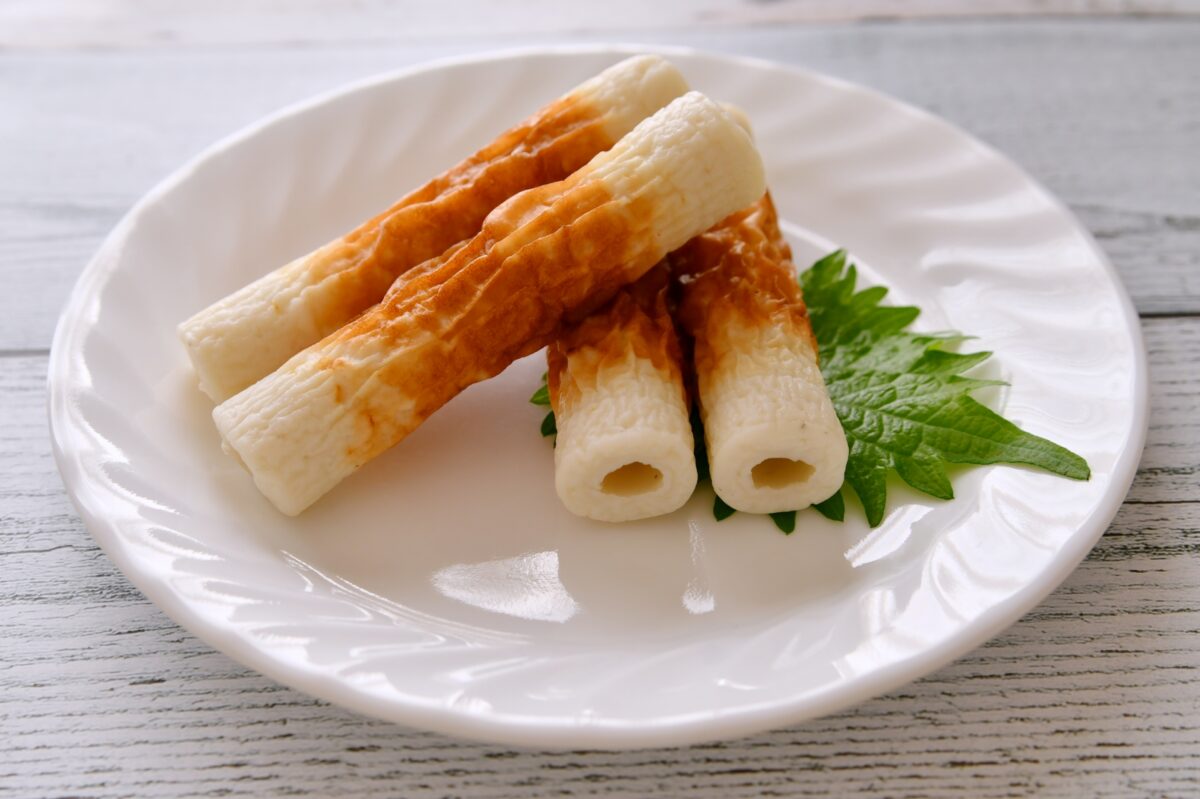
- Nasu (eggplant) – Experience the sublime transformation of eggplant in its tempura form, a popular dish enjoyed worldwide. By coating and deep-frying eggplant, it transcends into a tender, juicy state, enveloped in a crispy batter that enhances its succulence. This method steams the vegetable inside its form, releasing a lush, melt-in-your-mouth texture that’s utterly captivating. Whether lightly seasoned with salt or dipped in a delicate tsuyu sauce, each bite intensifies the richness.
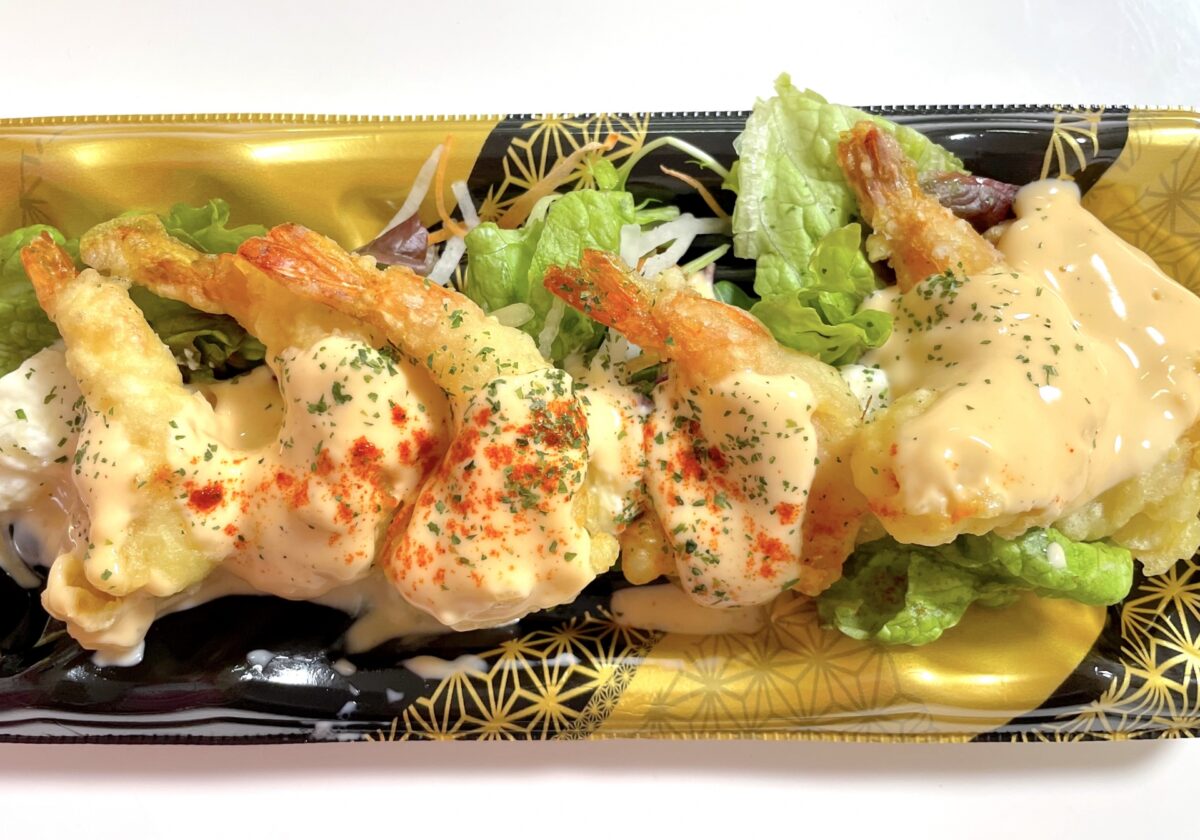
Explore flavors at your local supermarket’s vegetable corner, where a variety of tempura is sold at remarkably low prices, making it easy to try something new on a whim.
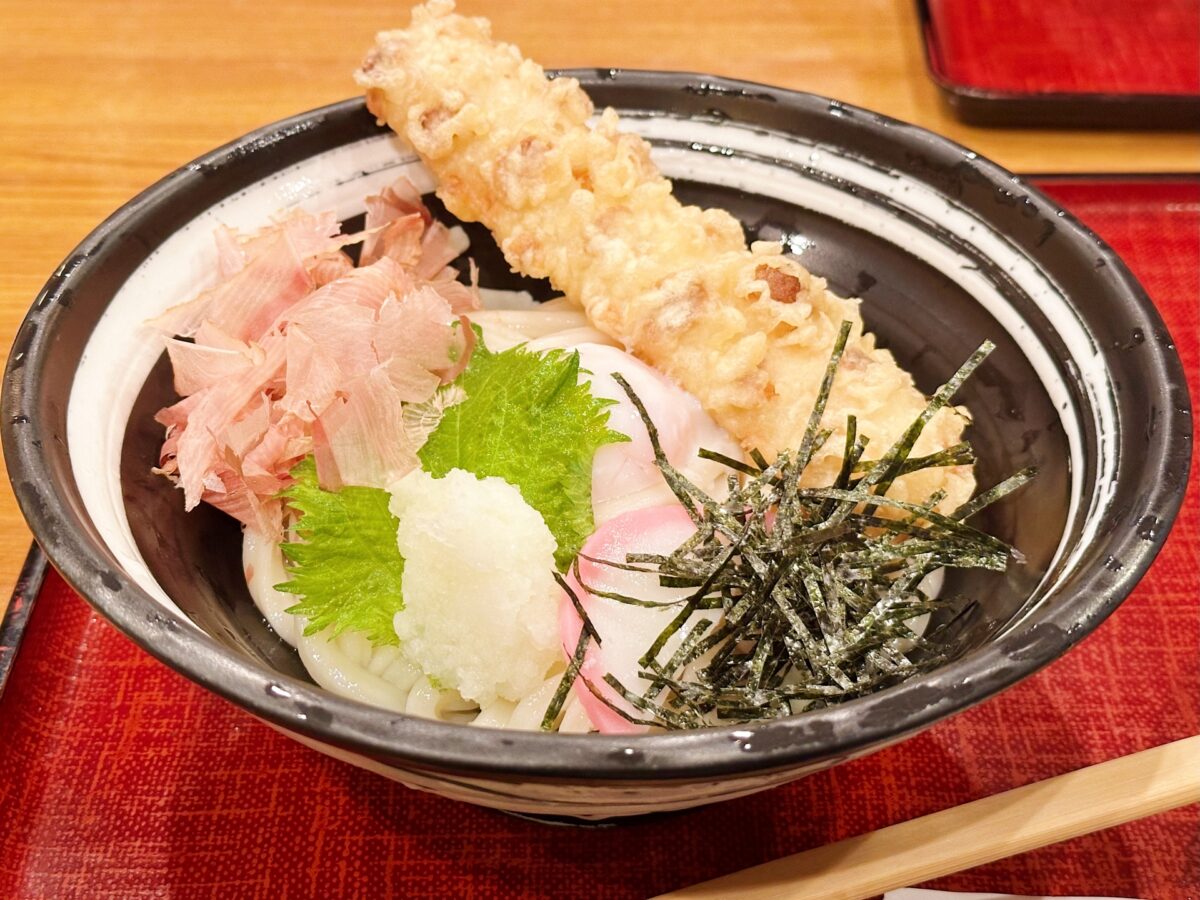
Highlighted in our cheap but delicious restaurants article here, the nearby udon shop offers a variety of freshly fried tempura for around 100 yen each. You can order both tempura and udon for an approximate total of 500 yen, providing an affordable way to enjoy two classic Japanese dishes simultaneously. This spot comes highly recommended for its value and the quality of its offerings.
23. Tendon (Tempura bowl)

This tempura bowl, a beloved soul food in Japan for centuries, consists of crispy tempura placed atop a bed of rice and drizzled with a special sauce.
While tempura is typically enjoyed plain or with a sprinkle of salt, the unique sweet sauce of a tempura bowl pairs wonderfully with the rice. The combination of freshly fried, crunchy tempura, fluffy rice, and tender vegetables creates a harmony of flavors that will tantalize your taste buds.
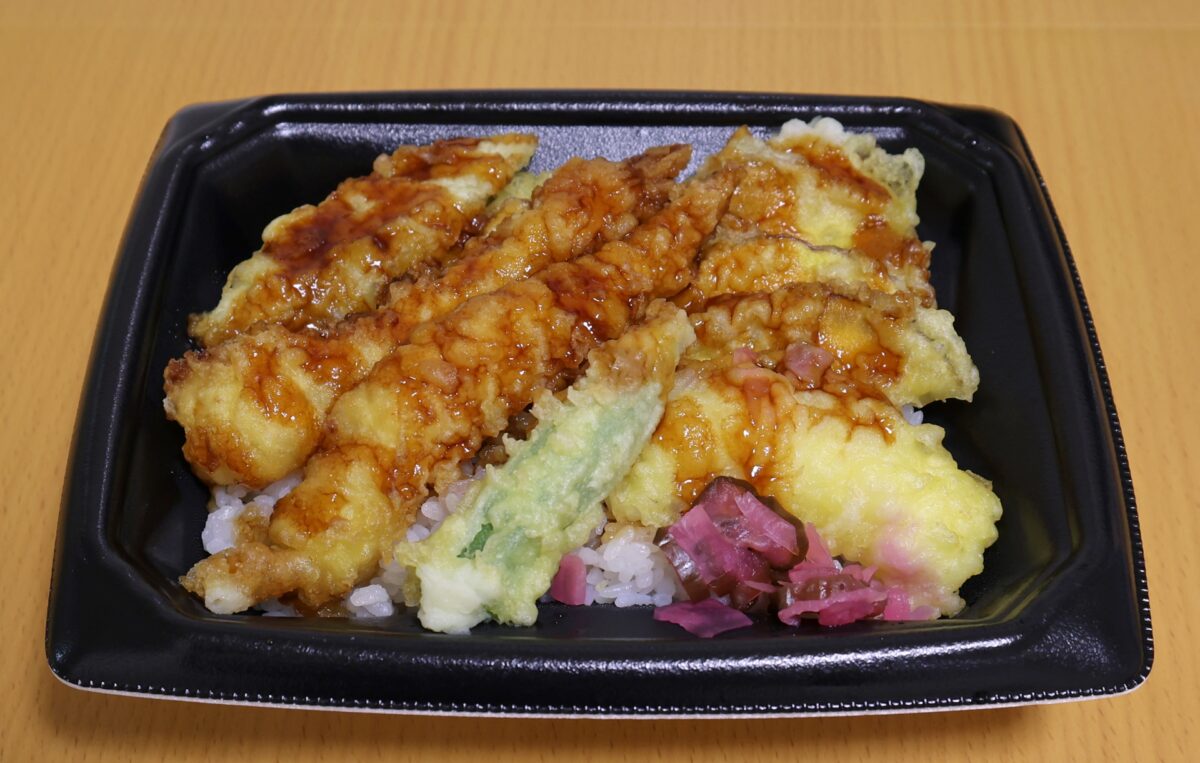
Interestingly, you can also purchase this dish inexpensively at supermarkets. After buying it, a quick warm-up in the microwave provided at the store will make it even more delicious.
Hot pot dishes 🍲
24. Shabu-shabu
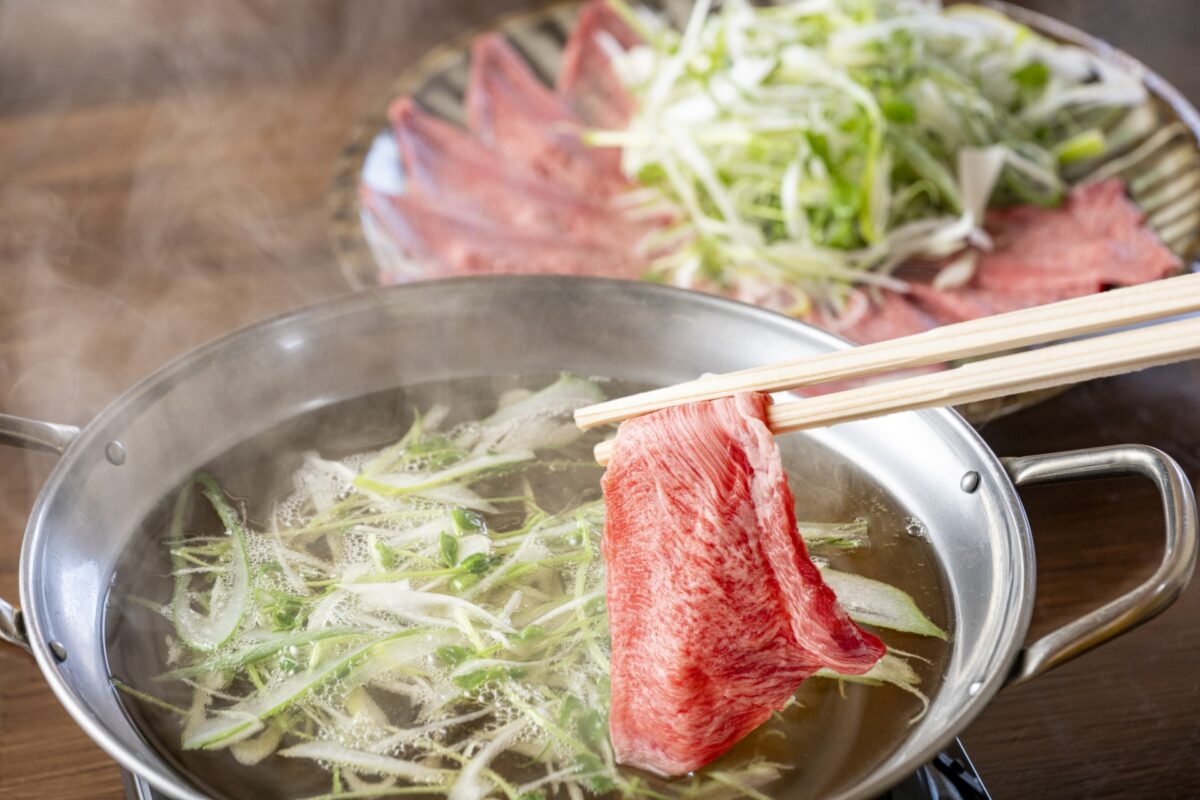
Shabu-shabu is a delightful hot pot dish where slices of beef and various vegetables are briefly swished in boiling water before being dipped in flavorful sauces.
The key to enjoying shabu-shabu is to gently “swim” the meat in the hot pot with chopsticks rather than letting it cook for too long.
The boiling water quickly cooks the meat in under 10 seconds, ensuring it remains tender and its rich fat stays intact.
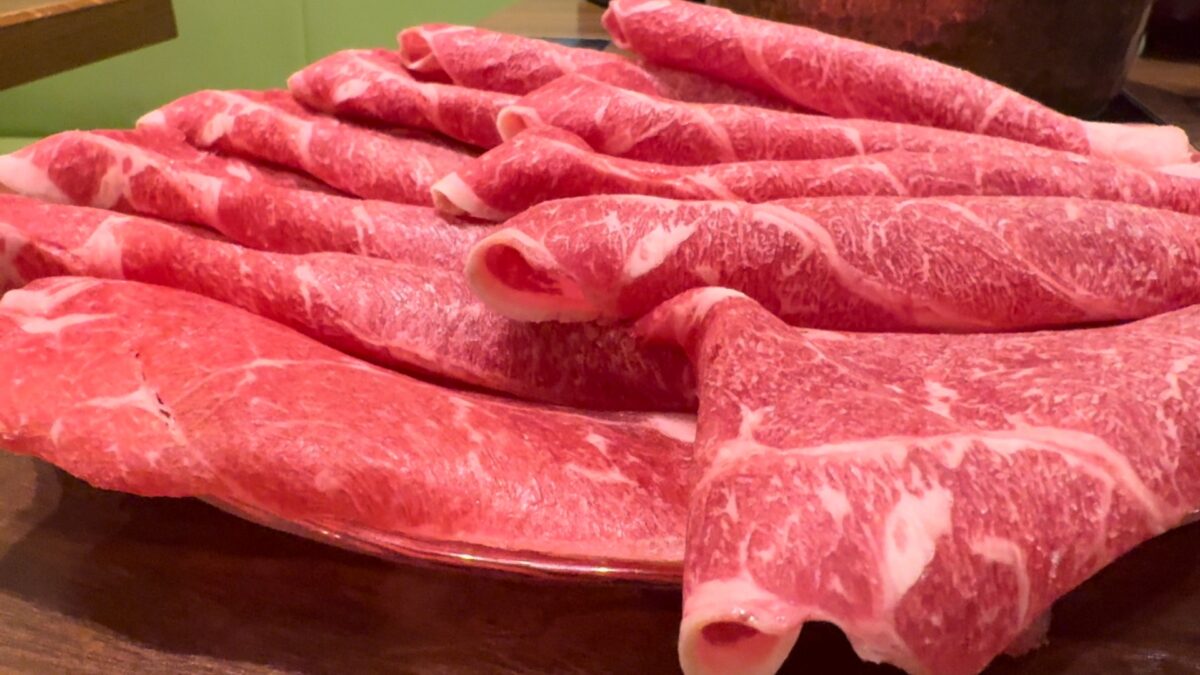
The reason just 10 seconds in boiling water is enough for shabu-shabu meat is that it’s incredibly thin. You will be amazed at how incredibly thin the meat for shabu-shabu is, often less than 1mm thick!
I’ve never seen meat sliced this thinly outside of Japan, and I can confidently say that without these paper-thin slices, the deliciousness of shabu-shabu would be greatly diminished.
The final step of dipping the perfectly cooked meat into tangy ponzu or creamy sesame sauce is what makes shabu-shabu so enjoyable.
25. Sukiyaki
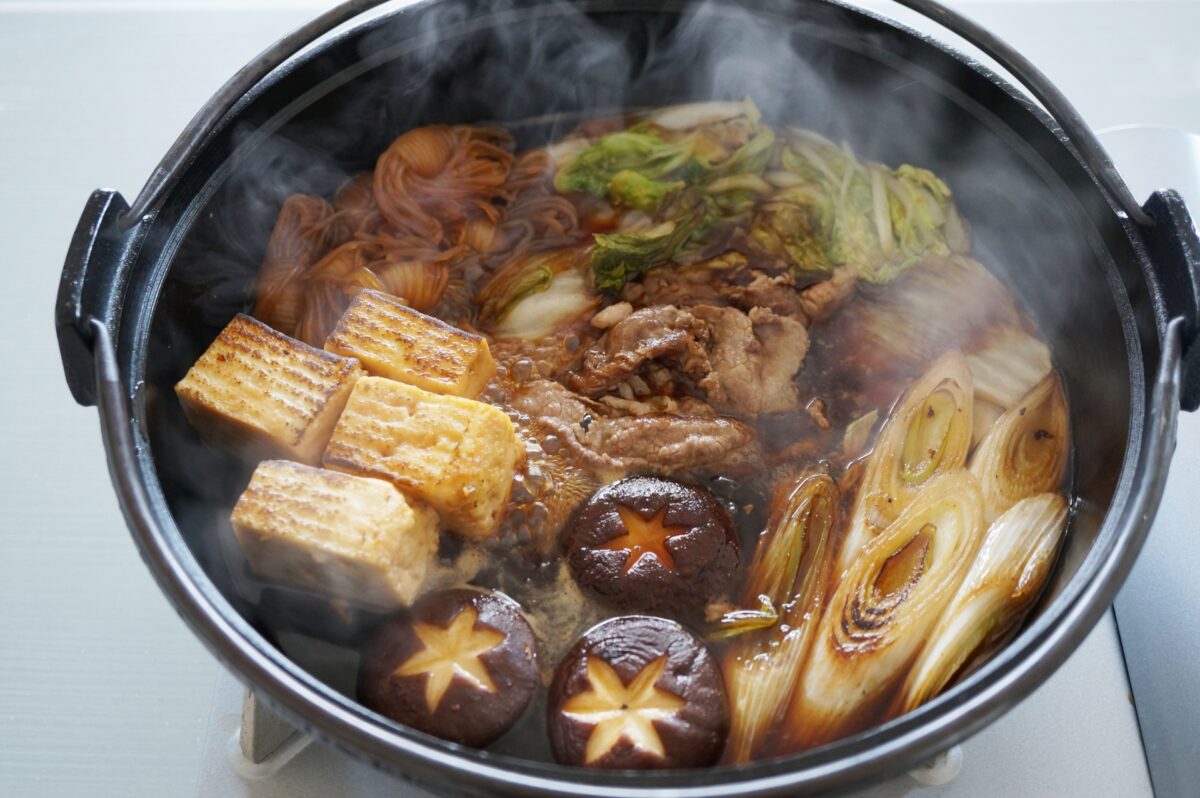
Sukiyaki is a delectable hot pot dish where beef (sliced just 2-3 mm thick), vegetables, and tofu are simmered in a savory-sweet broth made from soy sauce, sugar, and sake. Unlike the typical savory hot pot soup, sukiyaki features a distinctly sweet flavor.
But the experience doesn’t end with simmering. The cooked meat and vegetables are traditionally dipped into beaten raw egg before eating.
As mentioned earlier, raw eggs in Japan are safe to eat, so you can enjoy this step without worry.
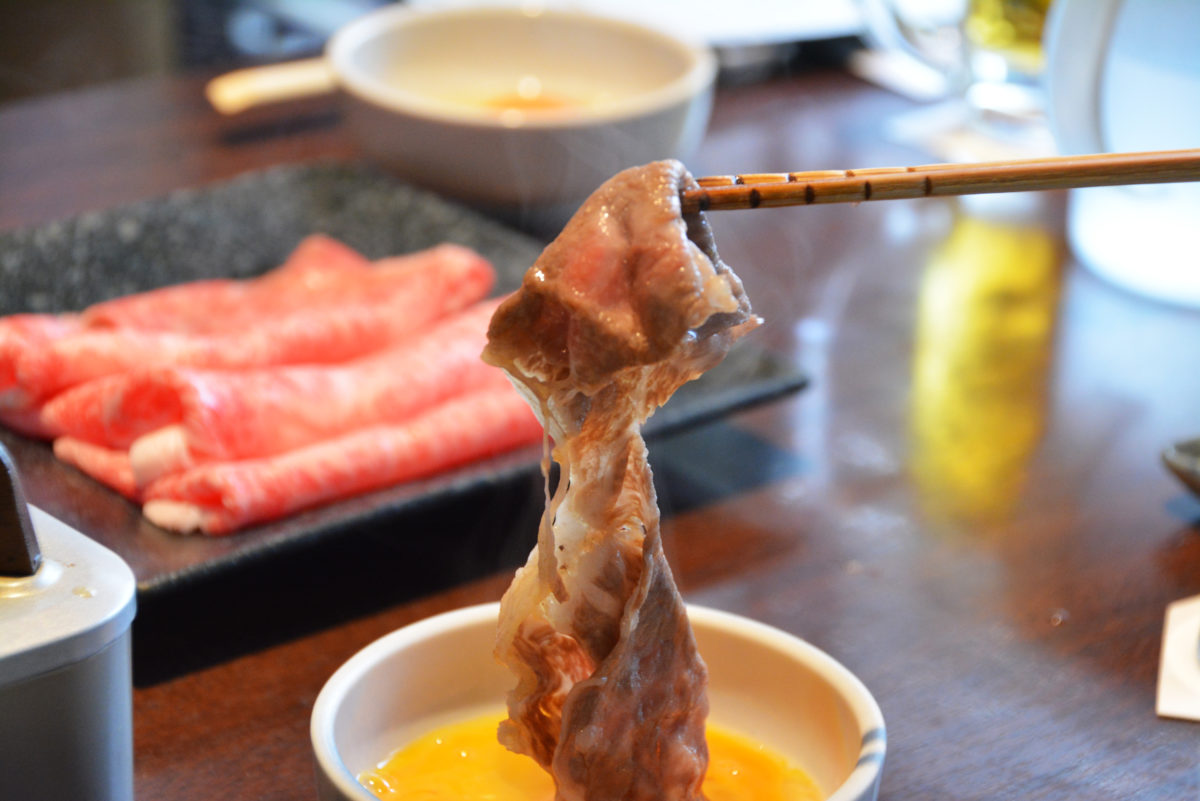
Dipping the rich, slightly sweet meat and vegetables into raw egg creates a creamy, mild flavor that balances the dish perfectly and adds depth to the taste.
Personally, I enjoy this so much that I often consume up to five eggs while savoring sukiyaki!
26. Motsunabe
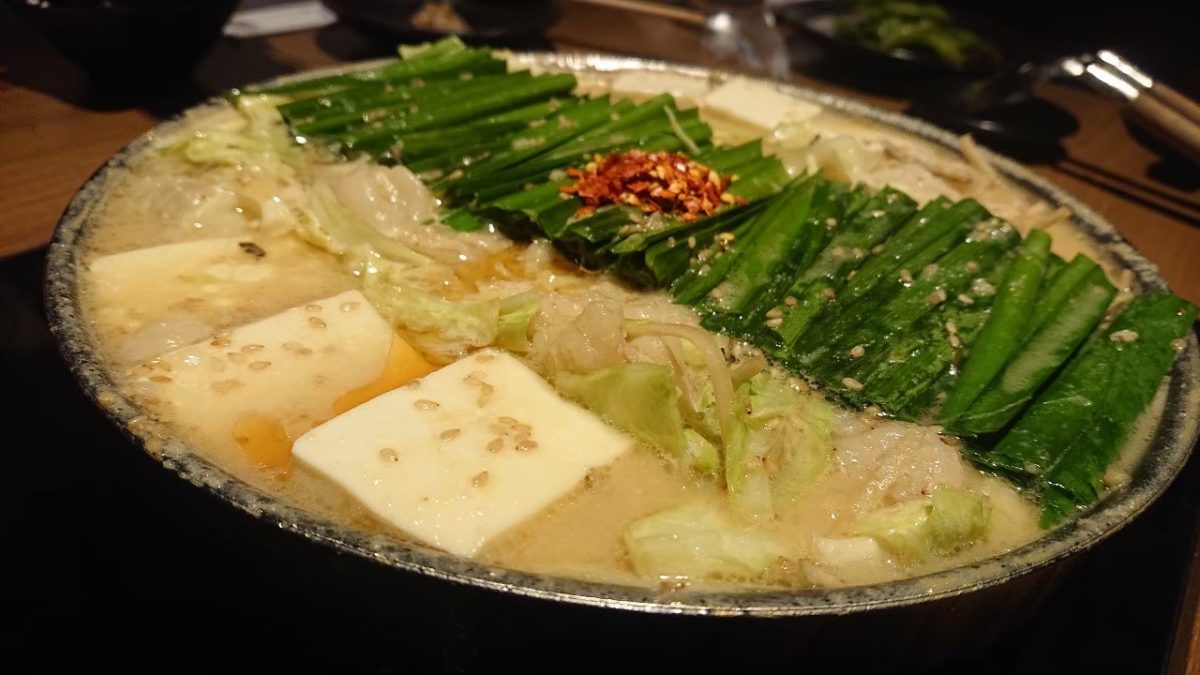
Motsunabe is a flavorful hot pot dish made with beef or pork offal, cabbage, and garlic chives, simmered to perfection. A specialty of Hakata, we highly recommend checking out the top restaurants and foods in Hakata here.

While the idea of eating offal might seem unusual, it’s incredibly delicious. The offal has a delightful chewiness, becoming more flavorful with each bite.
The rich broth, made with savory soy sauce or miso and infused with Japanese seasonings, is the true star of the dish. To fully enjoy motsunabe, be sure to add champon noodles to the remaining broth, savoring every last drop of this delectable soup.
Rice dishes 🍚
27. Gyudon
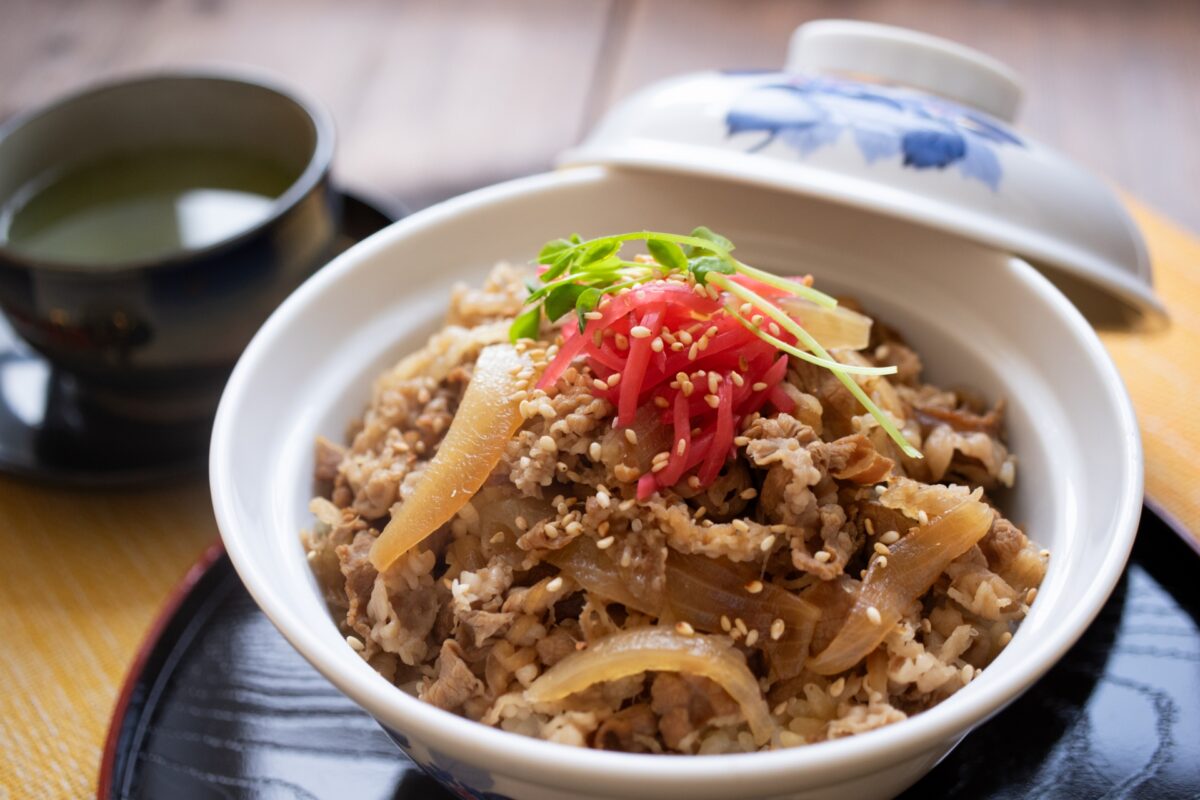
Gyudon is a mouthwatering dish featuring thinly sliced beef simmered in a savory blend of soy sauce and sugar, served atop a bed of rice.
What makes gyudon so delightful is not just the tender beef but the rich, flavorful broth that soaks into the rice, making it delicious even without the meat. For added variety, you can top it with cheese, kimchi, or pickled ginger, each adding a unique twist to the flavor.
While gyudon is a popular homemade dish, it is also widely available at budget-friendly restaurants. Renowned restaurant chains like Sukiya and Yoshinoya are highlighted for their affordable and tasty gyudon.
These chains offer various portion sizes, with a regular bowl costing around 400 yen, making it an incredibly attractive option for a satisfying meal.
28. Curry rice
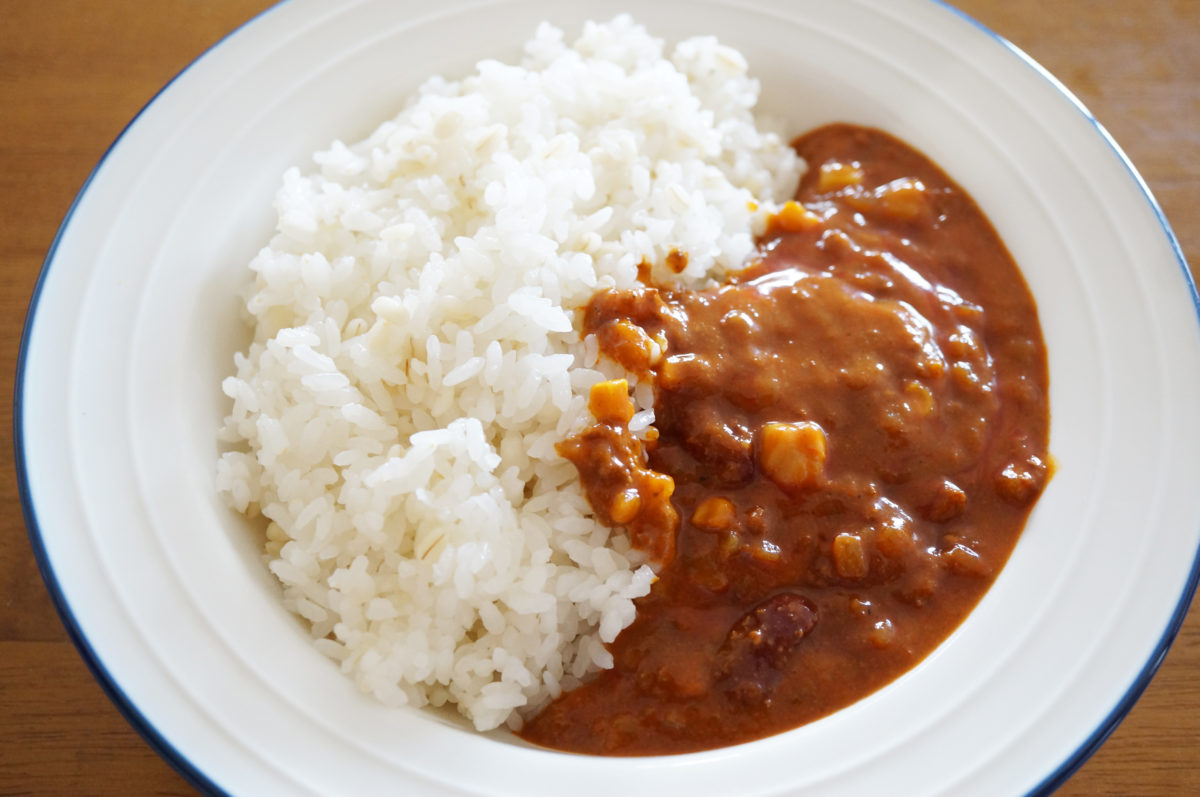
Japanese curry rice differs from its Indian counterpart with its thicker, gravy-like consistency rather than a soupy texture. It typically includes chunky pieces of carrots, potatoes, onions, and meat.
This hearty curry is usually served on a single plate alongside rice, making it easy to enjoy both together.
Unlike Indian curry, Japanese curry is milder in terms of spice, focusing more on a rich, savory flavor.
A popular chain where you can try this delicious dish is CoCo Ichibanya, found throughout Japan. Be sure to give it a try whenever you come across one!
29. Omurice (Omelet rice)
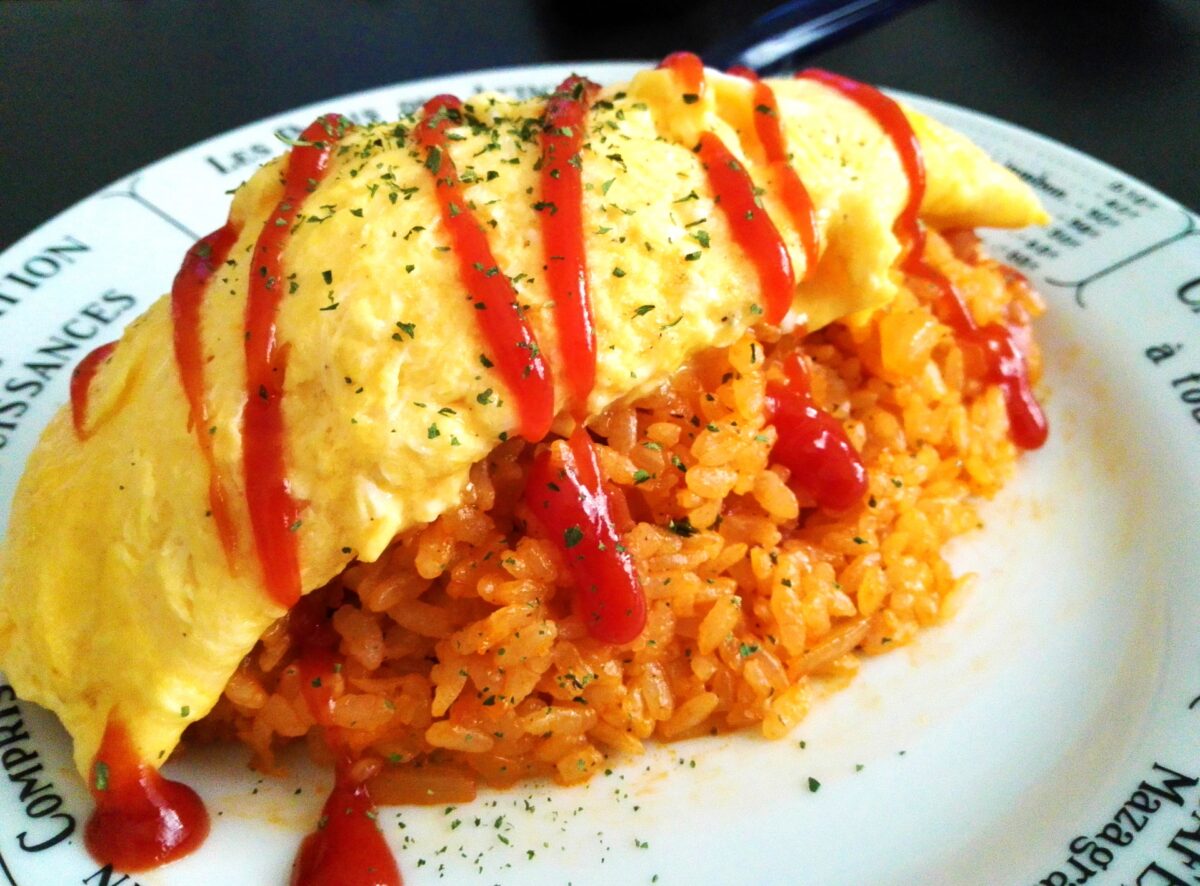
Omurice is a delightful fusion of omelet and rice, a Western-inspired dish that originated in Japan. It consists of fried rice flavored with ketchup, enveloped in a layer of cooked egg.
Depending on the restaurant, the egg can be thin, fluffy, or even slightly runny. Topped with a variety of sauces like rich demi-glace or other Japanese-style seasonings, each version offers a unique flavor experience.
This dish goes beyond the simple combination of omelet and rice, providing a taste sensation that’s distinctly different and thoroughly enjoyable.
30. Unaju (eel with rice)
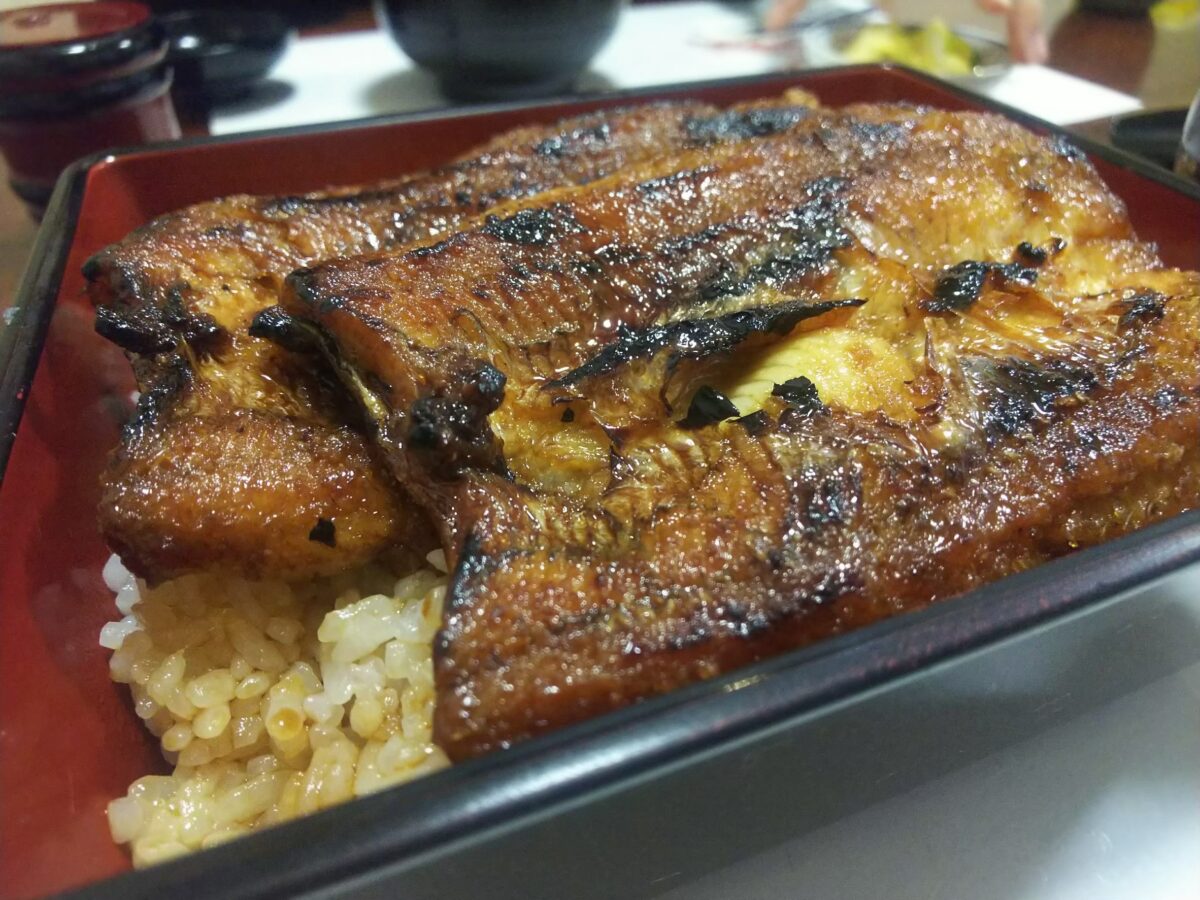
Unajū is a delectable dish featuring eel served over a bed of rice. While eating eel may not be uncommon in many countries, what makes Unajū special is its unique seasoning and preparation method.
The eel is cut into pieces, skewered, and grilled over charcoal while being basted with a sauce made from Japanese seasonings. This charcoal grilling imparts a wonderfully smoky flavor, and the sauce, reminiscent of teriyaki, is exceptionally delicious.
The combination of the tender, perfectly grilled eel and the rice creates a harmonious and exquisite dining experience.
31. Oyakodon
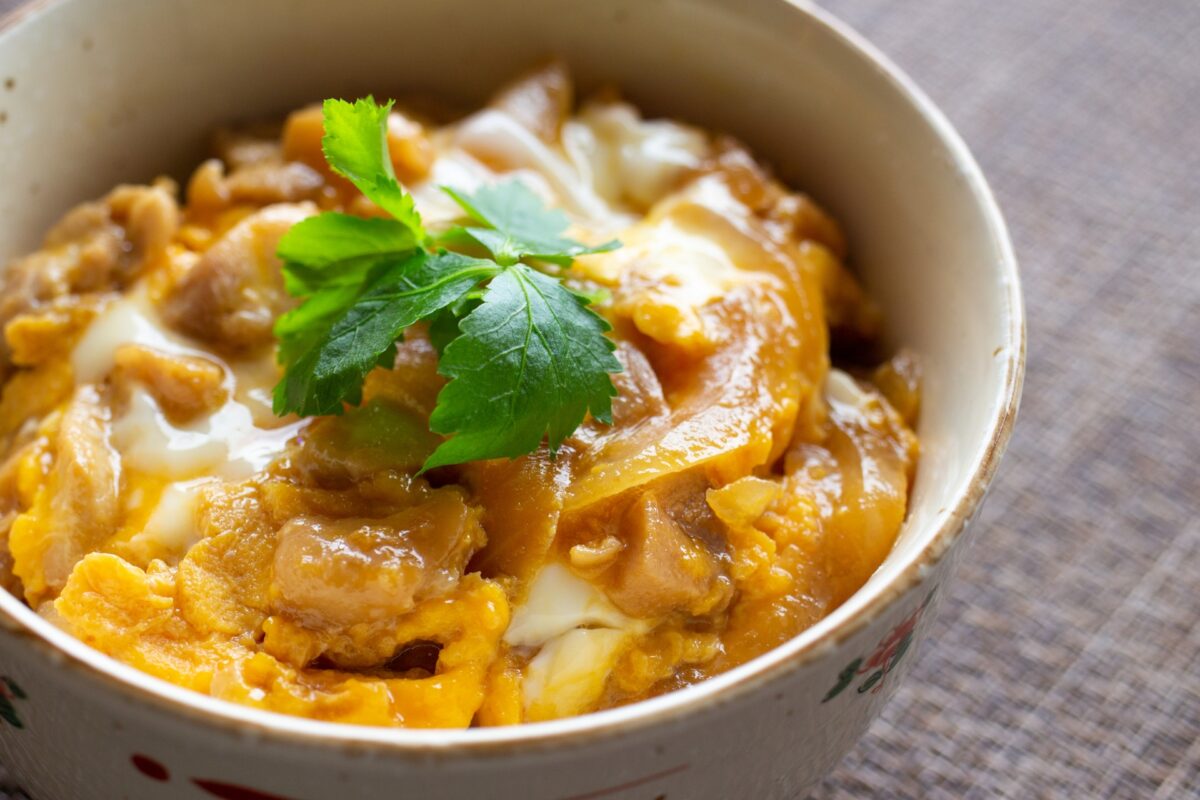
Oyakodon is a delicious rice bowl dish featuring tender chicken simmered in a sweet and savory sauce, mixed with an onions and a lightly cooked egg. The name “oyako” means “parent and child”, referring to the use of both chicken and egg.
The key to Oyakodon’s irresistible taste is the perfectly soft, almost runny egg. This creamy texture, safe to enjoy in Japan, provides a unique and delightful experience unlike fully cooked eggs.
The sweet and salty flavors from the soy sauce and sugar blend beautifully with the chicken and egg, creating a dish that glides smoothly down your throat and into your stomach, leaving you thoroughly satisfied.
32. Tamago kake gohan
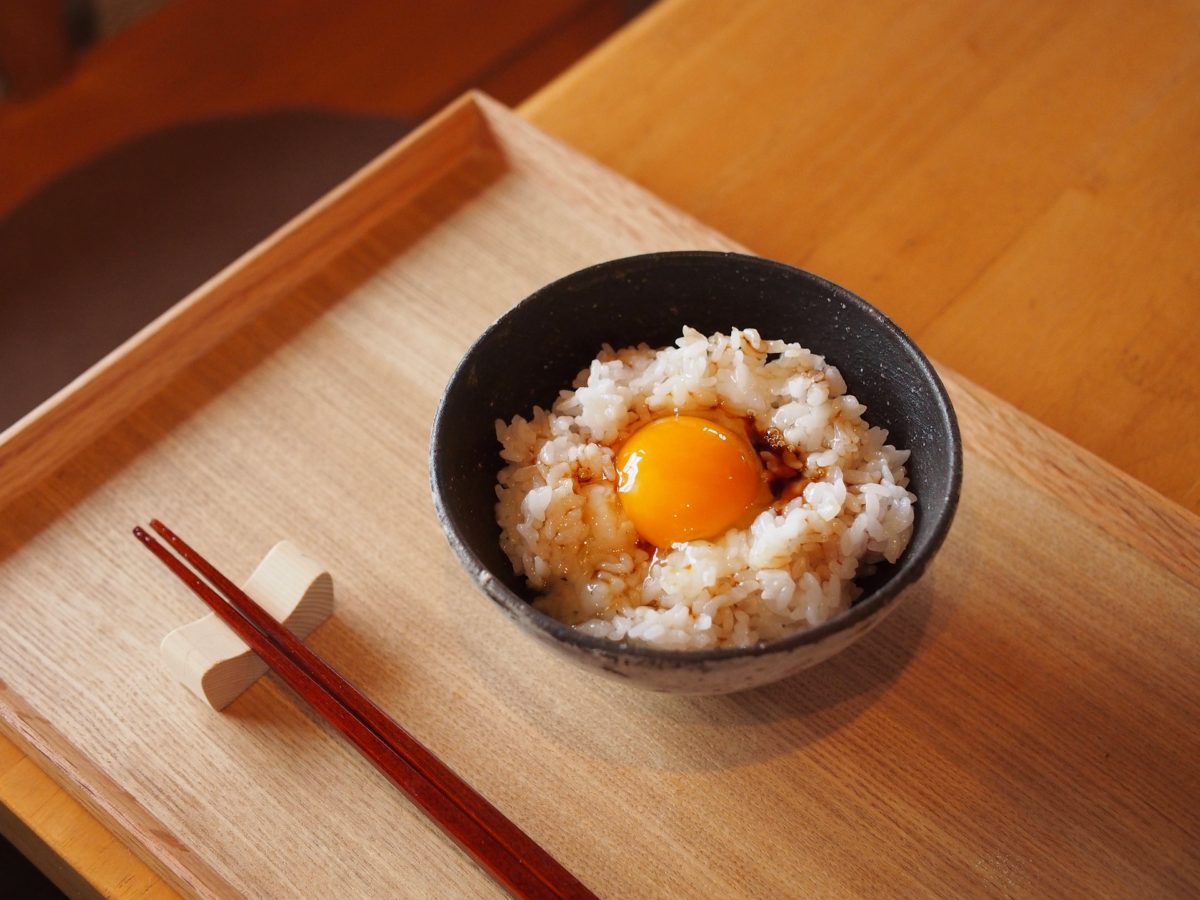
Tamago Kake Gohan is an incredibly simple yet remarkably delicious dish that involves pouring a raw egg mixed with soy sauce over a bowl of steaming rice.
Just to reassure you, Japanese eggs are of the highest quality, so you can enjoy this dish with complete peace of mind.
Don’t let its simplicity fool you; the flavors are unexpectedly delightful. Personally, i think this embodies the essence of Japanese cuisine, and after a long stay abroad, it’s the first dish I crave upon returning to Japan.
The runny egg whites blend seamlessly with the rice, while the creamy yolk and savory soy sauce create a taste sensation that’s so satisfying, it almost feels like you’re drinking it rather than eating it.
Other foods 🍢
33. Okonomiyaki: Osaka and Hiroshima speciality
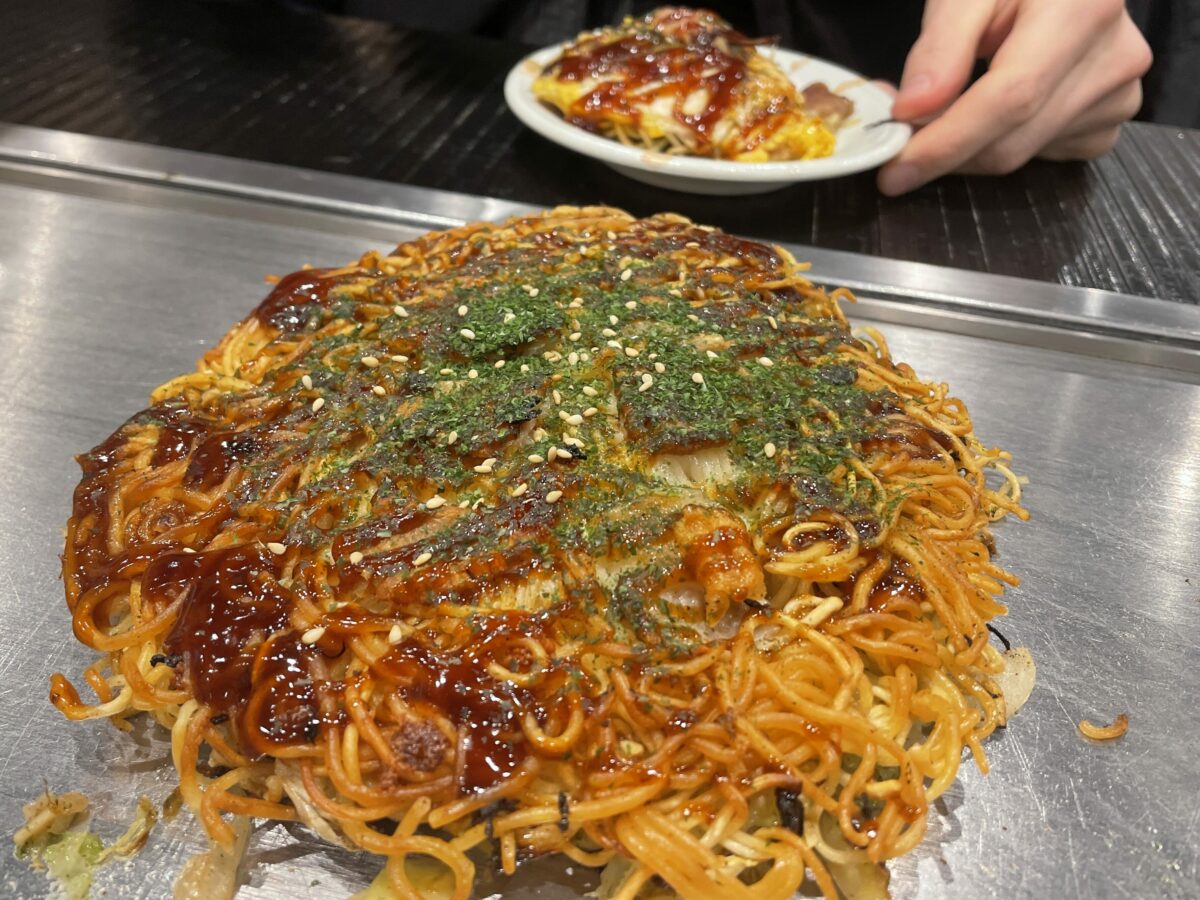
Often referred to as the “Japanese pancake,” okonomiyaki is a savory delight made by mixing flour with water and eggs, then adding cabbage and your choice of meat or seafood.
The mixture is cooked on a griddle and topped with mayonnaise and a special savory sauce. It’s easy to make at home, and I often host okonomiyaki parties with friends.
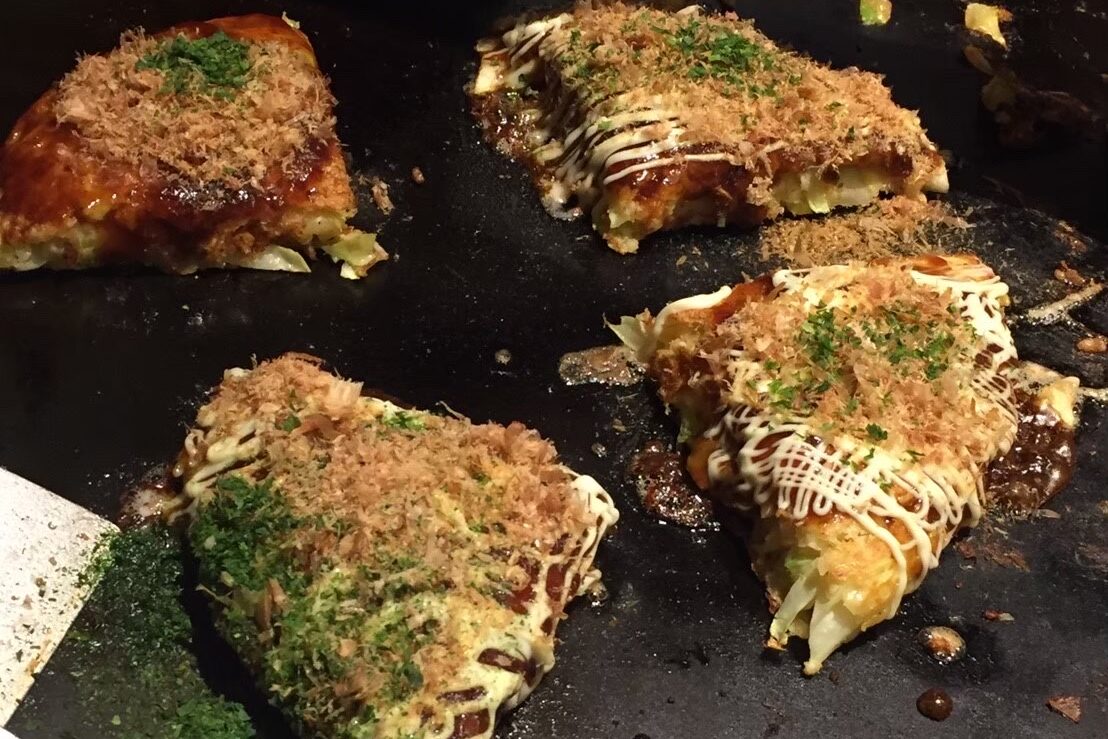
The real magic lies in the sauce, which pairs perfectly with the rich flavors of the meat’s juices. Once you start eating, it’s hard to stop.
In Japan, okonomiyaki is particularly famous in Osaka and Hiroshima. Be sure to check out our recommended local food places in Osaka and local food places in Hiroshima regions for authentic taste experiences.
34. Takoyaki (Ocutopus ball) : Osaka speciality
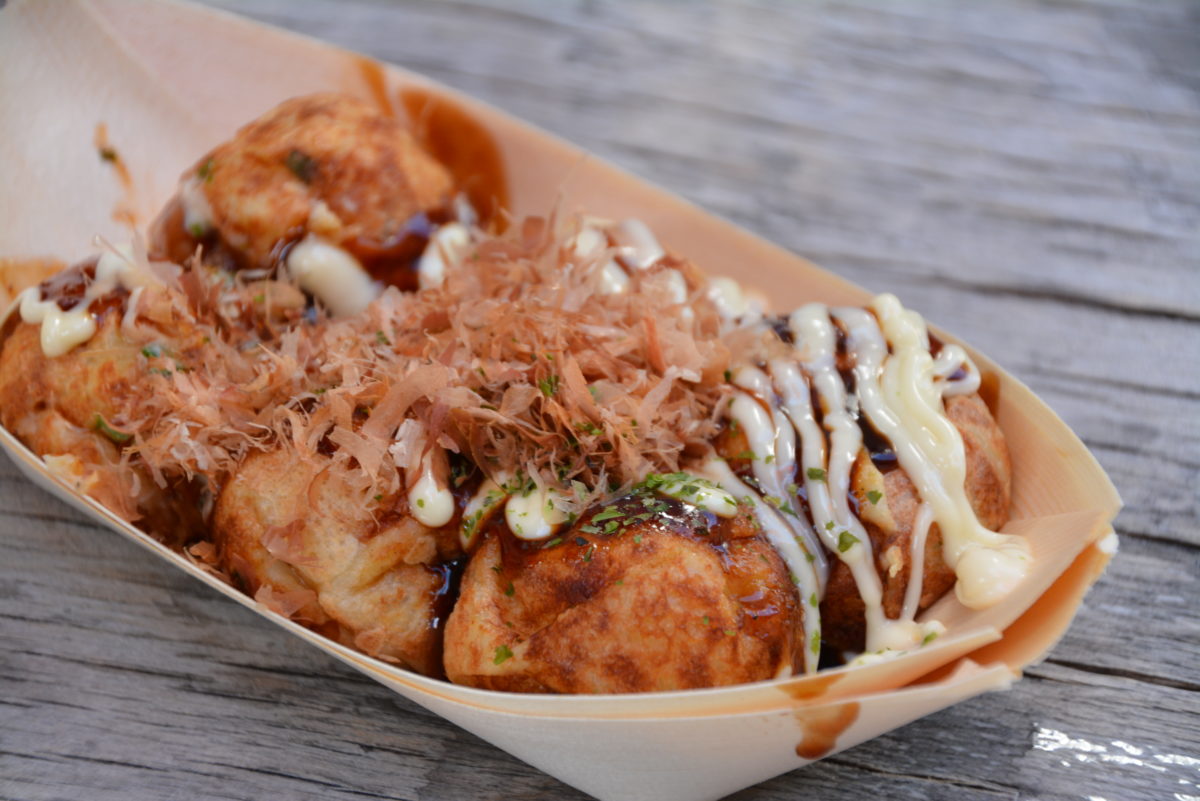
Takoyaki, a beloved Osaka specialty, features a batter made from flour, water, and eggs, poured into a hot griddle with round molds, then filled with pieces of cabbage and octopus. While the batter ingredients are similar to those of okonomiyaki, the proportions differ, giving takoyaki its distinct texture.
The exterior is typically fluffy, while the inside remains gooey and soft. When you bite into it, the combination of the tender octopus and the semi-cooked batter creates an exquisite mouthfeel.
The sauce, much like in okonomiyaki, is irresistibly delicious, but takoyaki can also be enjoyed with other toppings like soy sauce or ponzu, making it hard to choose which one to use.
Check out our recommended takoyaki spots in our article about best food in Osaka for an authentic and delightful experience.
35. Gyoza
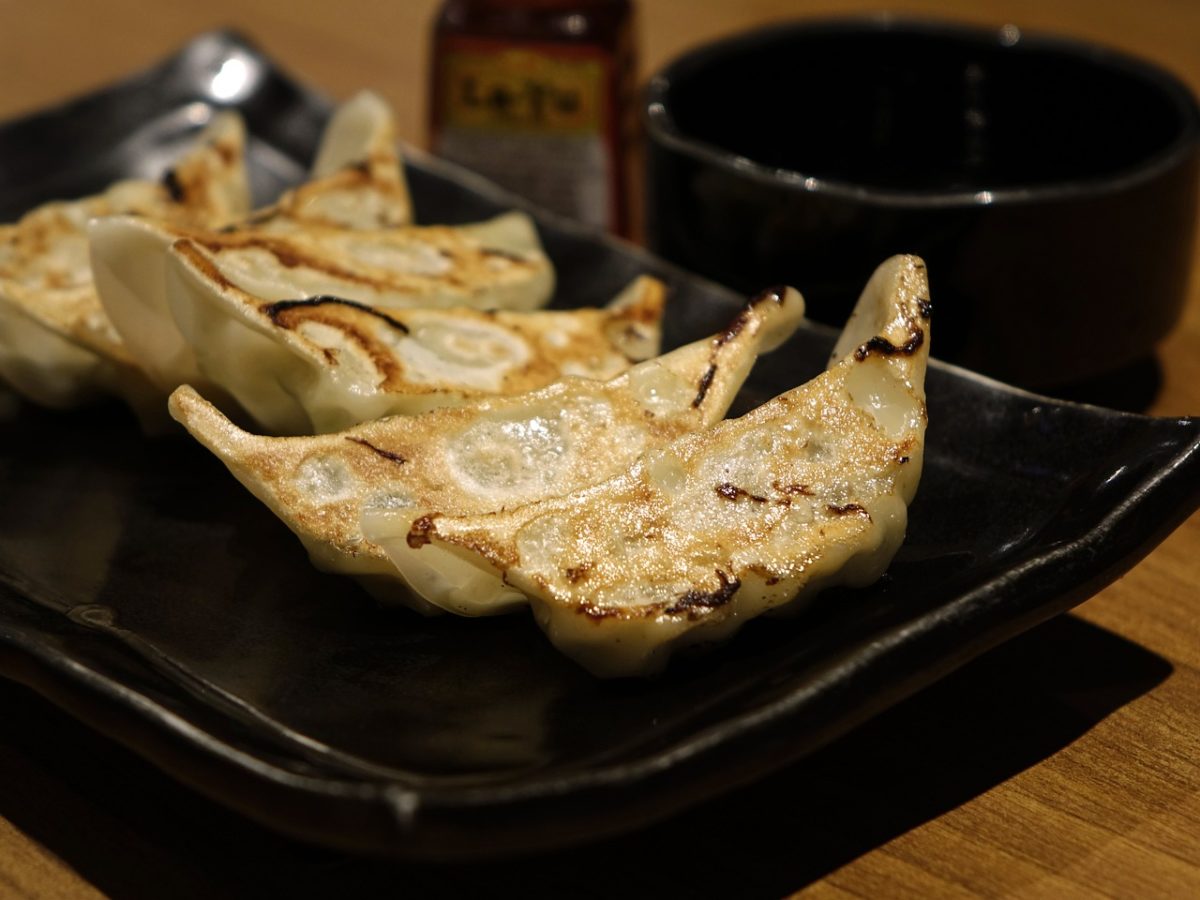
Although gyoza originated in China, Japanese gyoza is actually different from its Chinese counterpart.
Unlike the thick-skinned Chinese gyoza, the Japanese version has a thinner skin and is pan-fried, giving it a crispy texture. Additionally, Japanese gyoza typically uses pork, making it juicier.
One of the most popular gyoza chains in Japan is Gyoza no Ohsho.
Many people love their gyoza, and you can enjoy a serving of six pieces for less than 300 yen. After a long stay abroad, it’s one of the first things I crave upon returning to Japan.
Famous gyoza can also be found in places like Hakata, Utsunomiya, and Hamamatsu, so be sure to try them if you visit these areas.
36. Edamame: The Ultimate Izakaya Snack
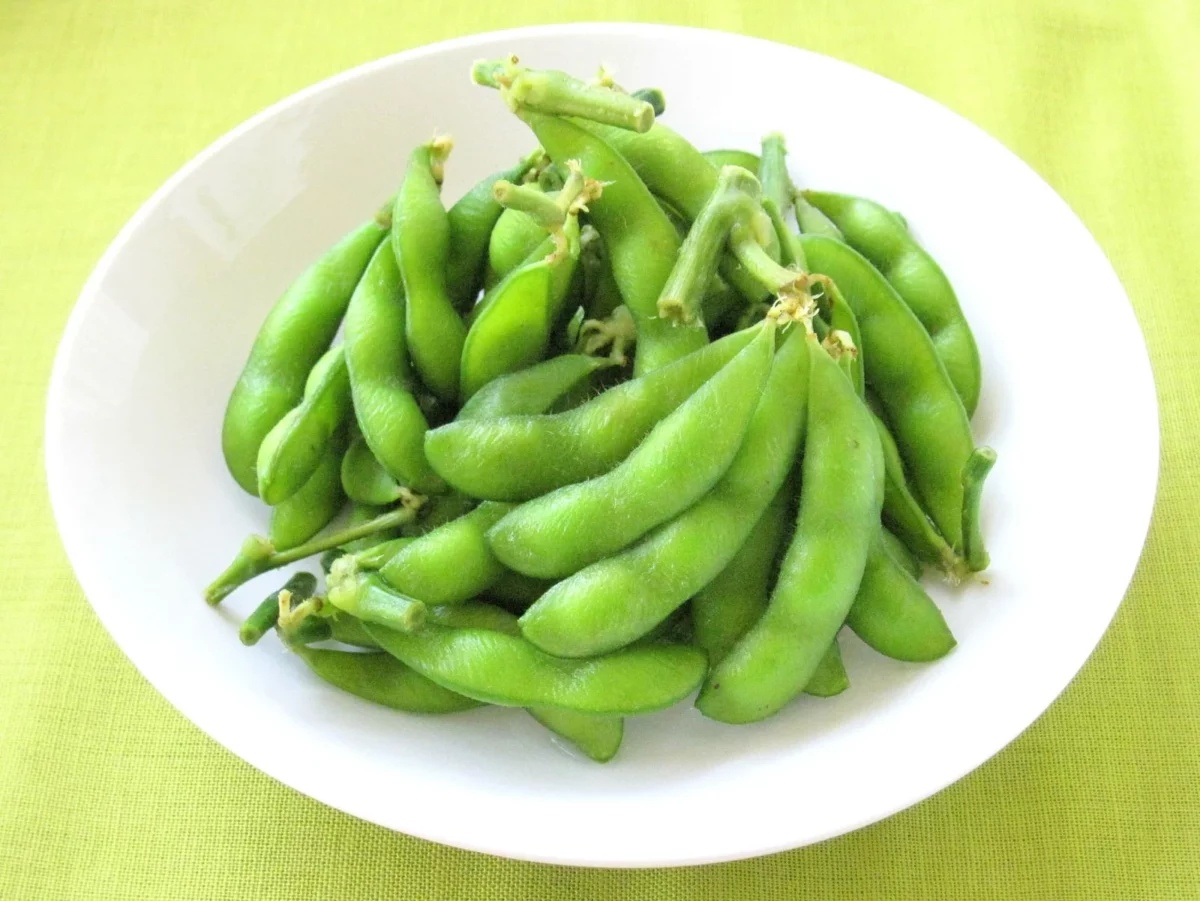
Though incredibly simple – just boiled with a sprinkle of salt – edamame is a beloved food not only in Japan but around the world.
The lightly salted pods pair perfectly with alcoholic beverages, making them a favorite among bar-goers. Their light, low-calorie taste ensures you can enjoy them guilt-free and without getting bored, no matter how much you eat.
In true izakaya fashion, patrons often start their meal with the phrase “For now, edamame and beer,” before moving on to the main dishes. Plus, their affordability makes them an easy choice for a quick and delicious starter.
37. Oden

Oden is a delightful Japanese dish where ingredients like daikon radish, chikuwa (fish cake), fried tofu, mochi, and eggs are simmered in a savory dashi broth. This hearty meal is especially popular during the colder months.
As the ingredients slowly cook, they absorb the rich broth, becoming tender and flavorful. The steaming hot morsels are perfect for warming up a chilled body, with daikon being a standout favorite.
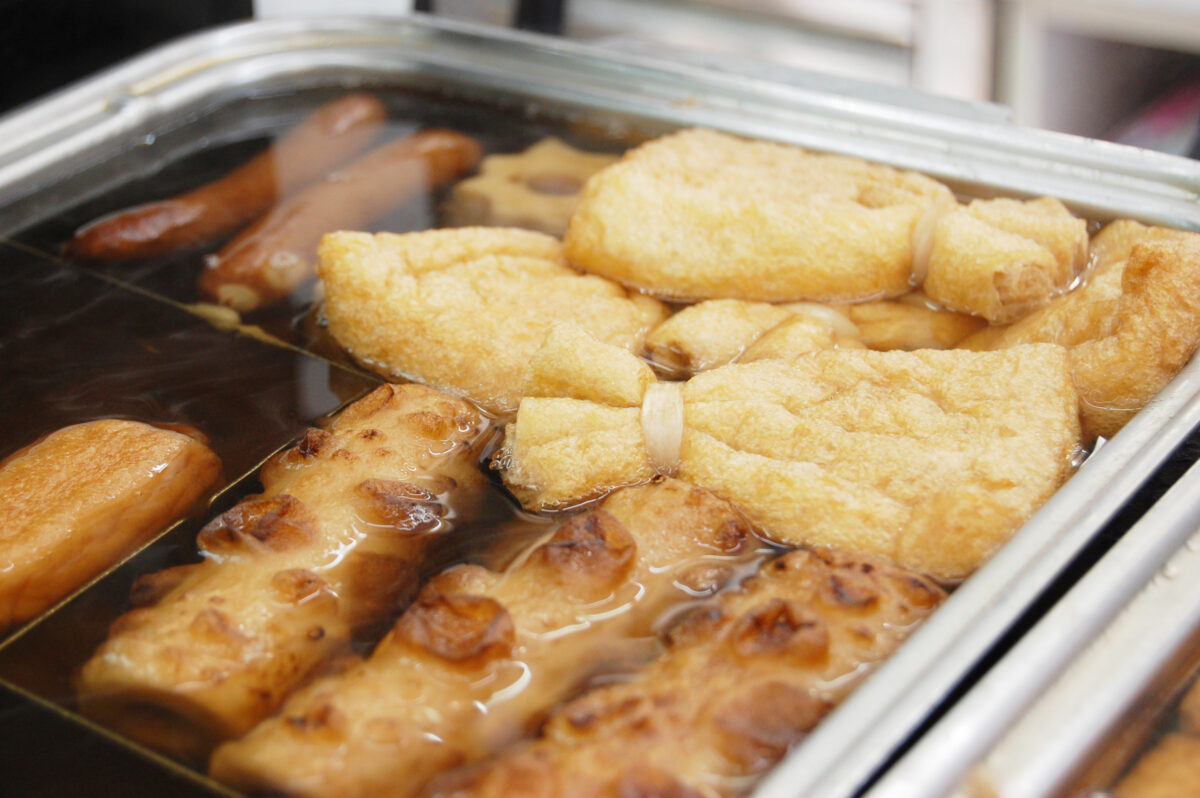
As winter approaches, convenience stores begin offering oden for around 100 yen, making it an easy and affordable way to experience this quintessential winter comfort food.
Imagine holding a cup of steaming oden on a frosty evening, it’s like having a little piece of culinary bliss in your hands.
38. Mentaiko pasta

When you think of pasta, Italy likely comes to mind first. However, there is a type of pasta that you absolutely won’t find anywhere in Italy, but you can enjoy it in Japan. It’s called “mentaiko pasta”.
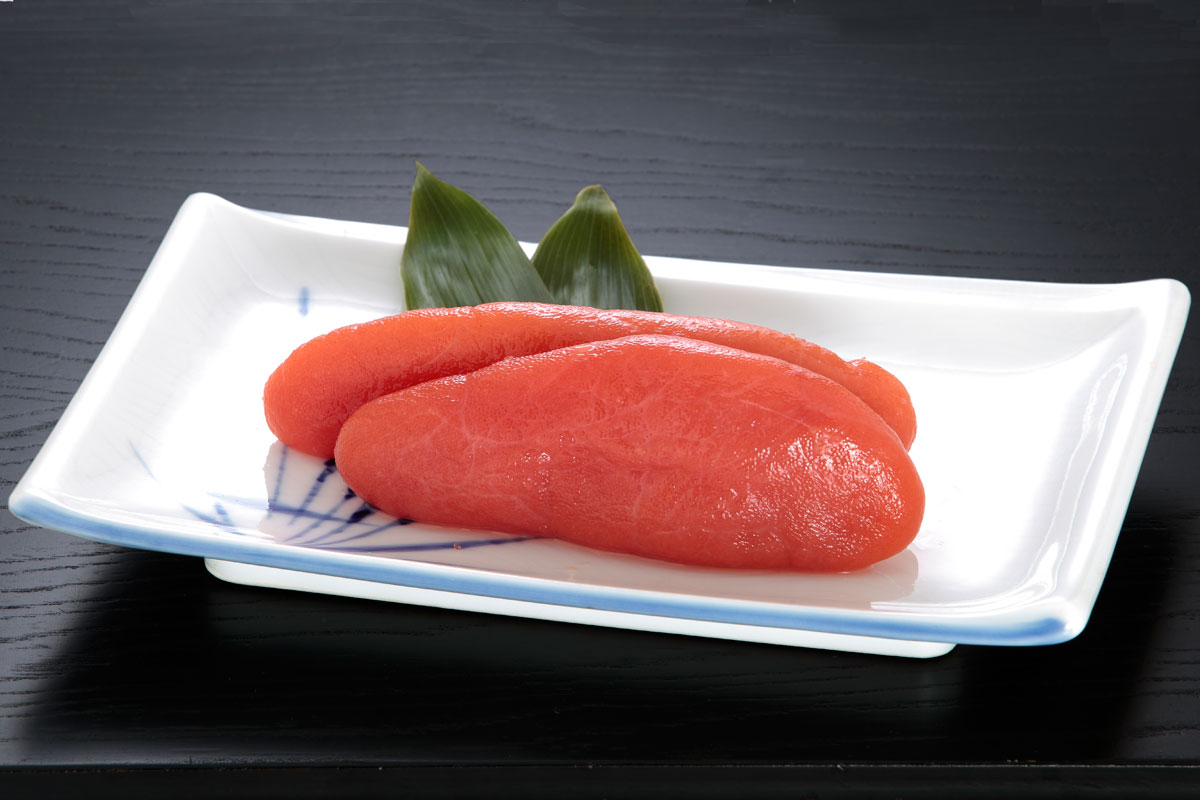
Mentaiko, introduced as a one of many “Japanese strange foods“, is the roe of Alaska pollock seasoned with chili peppers.
While its appearance might seem unusual to some, its popping texture and unique flavor can be quite addictive. It’s so beloved that many foreign tourists refer to it as “the irresistible taste of Japan.”
Mentaiko pasta, made by mixing mentaiko and various seasonings with pasta, is a representative Japanese pasta dish loved by both children and adults alike.
39. Dashimaki: A Japanese Izakaya Delight
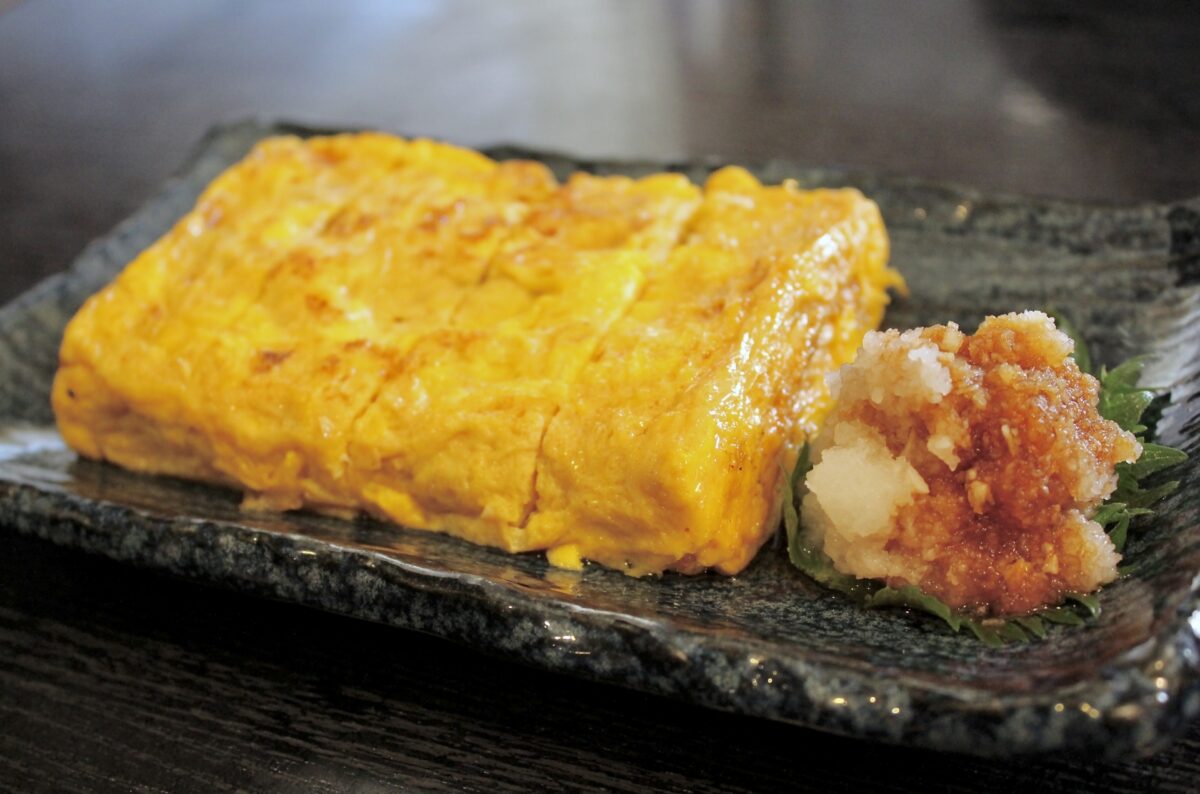
The Japanese rolled omelet, or “dashimaki tamago,” is a beloved staple in izakayas, frequently ordered by many patrons.
While it may resemble a Western omelet in appearance, its preparation and flavor profile are distinct.
The cooking process involves slowly adding beaten eggs mixed with dashi, a flavorful broth, and skillfully rolling them into delicate layers. The result is an exceptionally soft omelet imbued with the savory essence of dashi that delights the palate.
To elevate its taste even further, it is often served with a side of grated daikon (white radish) and a splash of soy sauce. This combination enhances the overall flavor, making each bite an irresistible culinary experience.
40. Hiyayakko (cold tofu): A Japanese Izakaya Delight
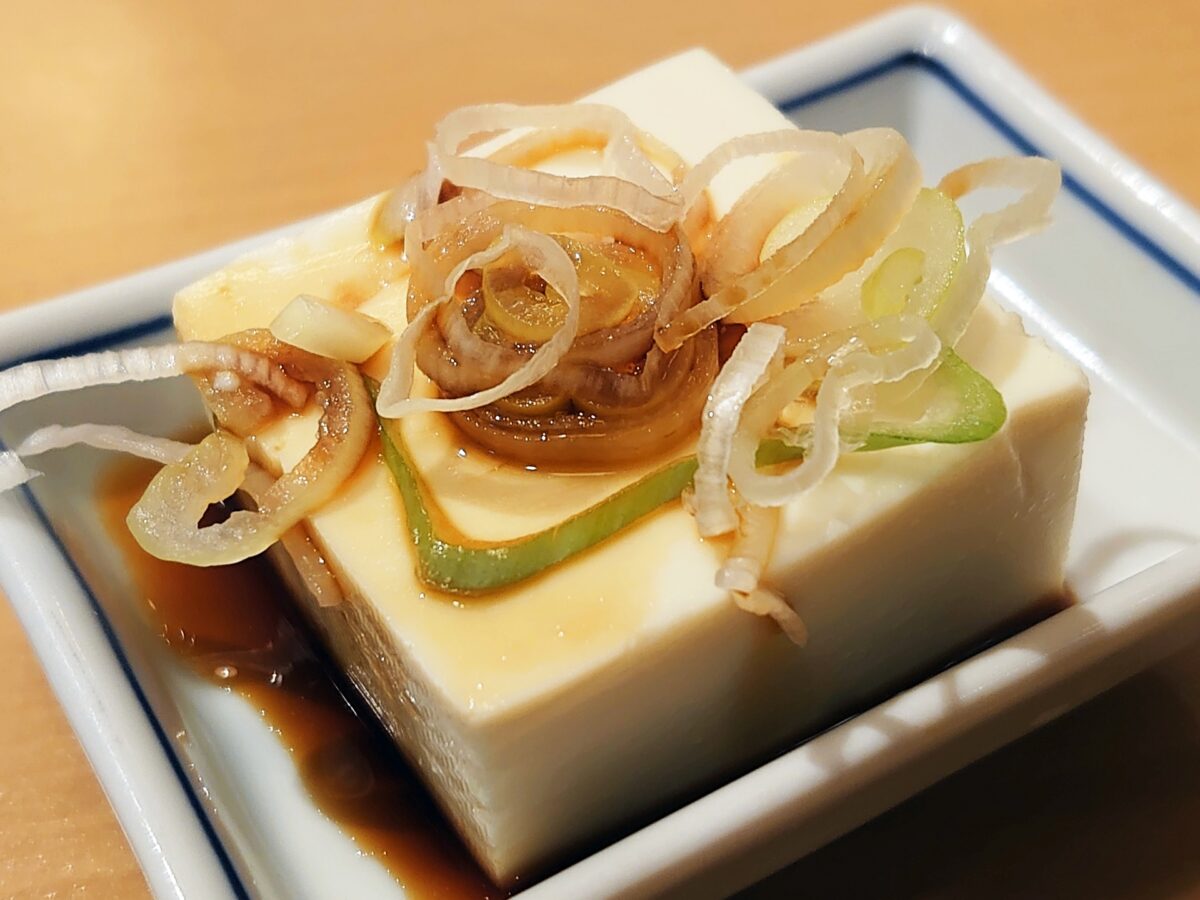
Hiyayakko is a quintessentially simple yet delicious dish of chilled tofu topped with a splash of soy sauce. With no oil involved, this light and refreshing dish is perfect for the hot summer months, easily enjoyed even when the heat has sapped your appetite.
While tofu is a staple in many Japanese dishes, it’s often served hot and simmered. While there’s no denying the comfort of warm tofu, the pure, delicate flavor of chilled tofu in hiyayakko is something everyone should experience.
It’s a cool, soothing bite that offers a different yet delightful take on this versatile ingredient.
Foods you can find at the convenience store and supermarket 🏪
41. Onigiri (Rice ball)
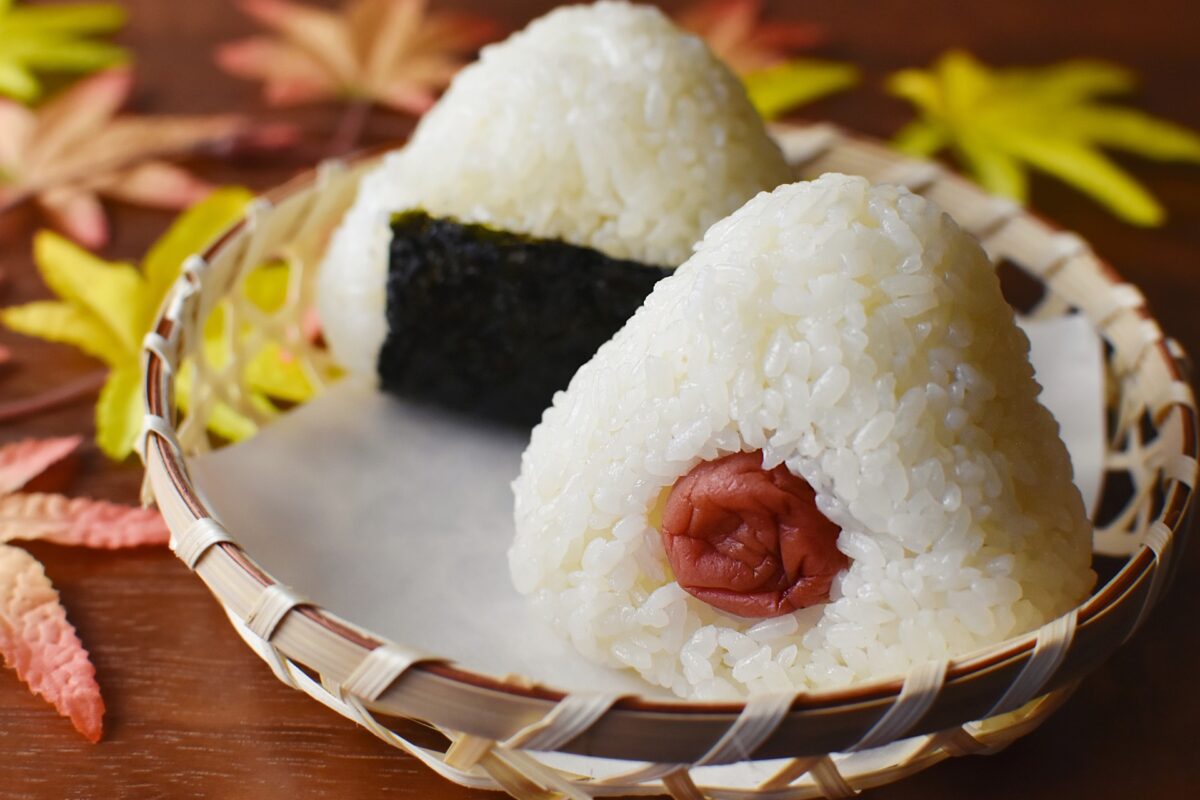
I often see videos of foreigners buying Japanese onigiri at Seven-Eleven. Onigiri are rice balls shaped into triangles, filled with various ingredients, and wrapped in seaweed.
Despite their triangular shape, they are humorously called “rice balls.”
The combination of perfectly salted rice and crispy seaweed is outstanding, making onigiri a staple in Japanese lunch boxes.
Popular fillings include salmon, tuna with mayonnaise, bonito flakes (okaka), and pickled plum (umeboshi).
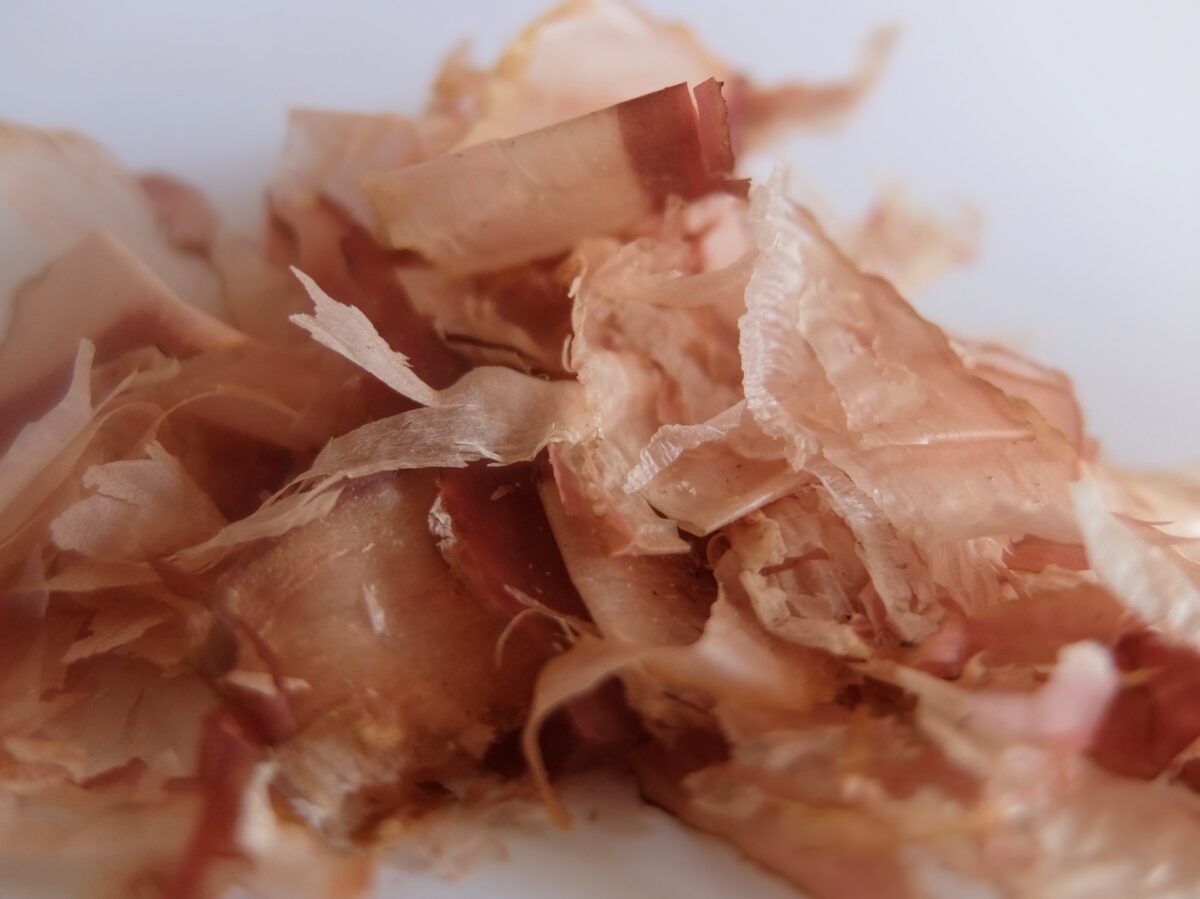
Bonito flakes, made from smoked and shaved bonito fish, are a versatile ingredient in Japanese cuisine but rare to find abroad. While it might be hard to imagine their taste, they pair wonderfully with soy sauce, offering a savory flavor that never gets old. It’s my favorite onigiri filling!
You can easily buy onigiri at any supermarket or convenience store for around 100 yen each.
As a side note, the unique packaging technique used for onigiri in Japan is worth noticing, showcasing Japan’s ingenuity in food preservation.
42. Nikuman (Meat Bun)

Nikuman, originally a Chinese delicacy, has been adapted to suit Japanese tastes. These fluffy steamed buns are made from wheat flour and filled with ingredients like pork. The dough is exceptionally soft, while the inside is moist with pork juices, creating a delightful combination.
You can easily purchase nikuman at convenience stores like Seven-Eleven for about 150 yen.
Additionally, Osaka’s famous “551 Horai” pork buns are incredibly delicious and a popular souvenir from the city. They offer a distinct taste compared to the ones sold in convenience stores.
If you ever visit Osaka, trying these buns is a must.
43. Miso soup

A staple of Japanese dining tables for generations, miso soup is made by dissolving fermented soybean paste (miso) in water and adding various ingredients like vegetables and meat.
The flavor of the soup changes depending on what ingredients are added, and some people enjoy drinking miso soup with different ingredients every day. Popular variations include miso soup with wakame seaweed or fried tofu, and so on.
Drinking warm miso soup in the morning has a relaxing effect, helping you start your day with a calm mind.
Additionally, miso soup is exceptionally delicious after a night of drinking, as the savory flavors of the miso spread throughout your body.
You can also try instant miso soup from convenience stores for around 150 yen, making it an easy and affordable way to experience this traditional Japanese comfort food.
44. Nattou
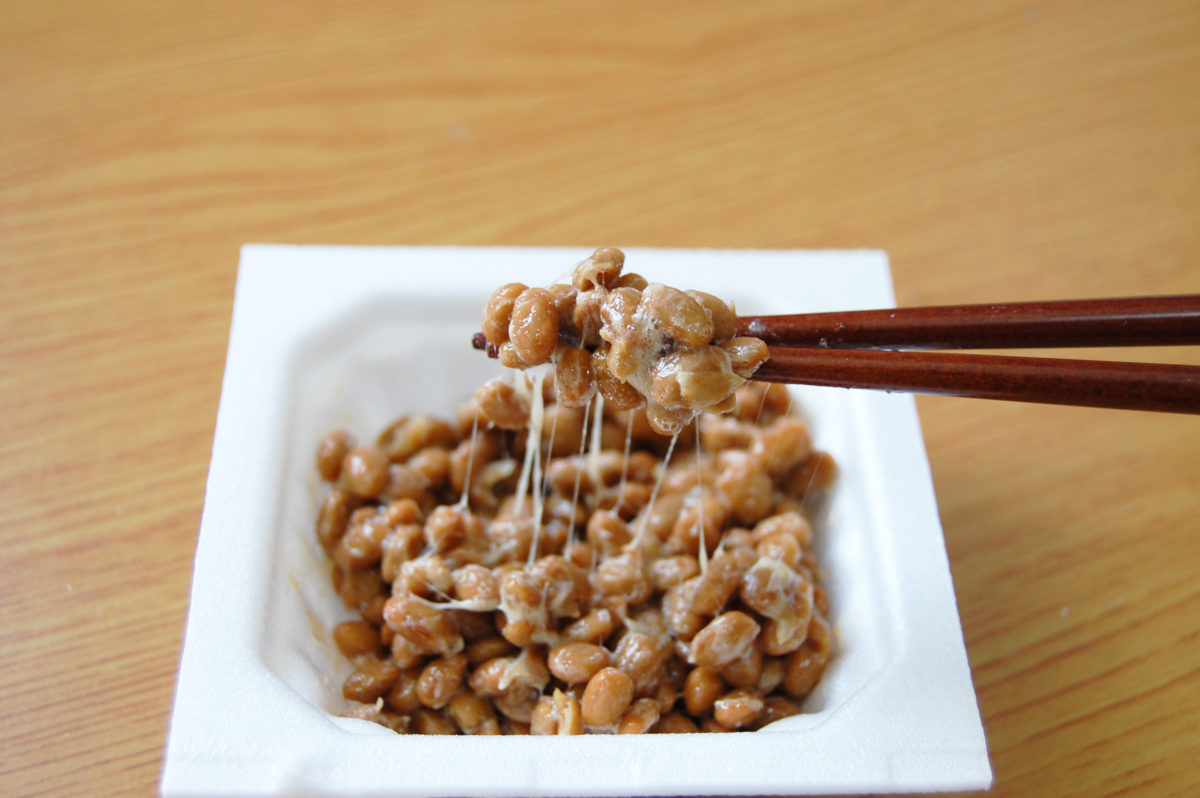
Natto is one of Japan’s more unusual foods, made from fermented soybeans and renowned for its health benefits. Given its appearance, few would predict it to be “delicious.”
The sticky, stringy texture is natto’s most distinctive feature, dividing Japanese people into those who love it and those who don’t. While many find the texture off-putting, the taste is not bad at all.
In fact, there are few foods as uniquely sticky as natto. It’s no exaggeration to say that natto is a superfood you must try when visiting Japan.
Moreover, a three-pack costs less than 100 yen, making it extremely affordable. It’s a savior for those who want a quick, cheap, and healthy meal.
45. Mochi (Rice cake)

Mochi, made from pounded glutinous rice, is incredibly chewy, something rarely encountered in international cuisine. Its distinctive texture means it can be chewed endlessly without breaking apart.
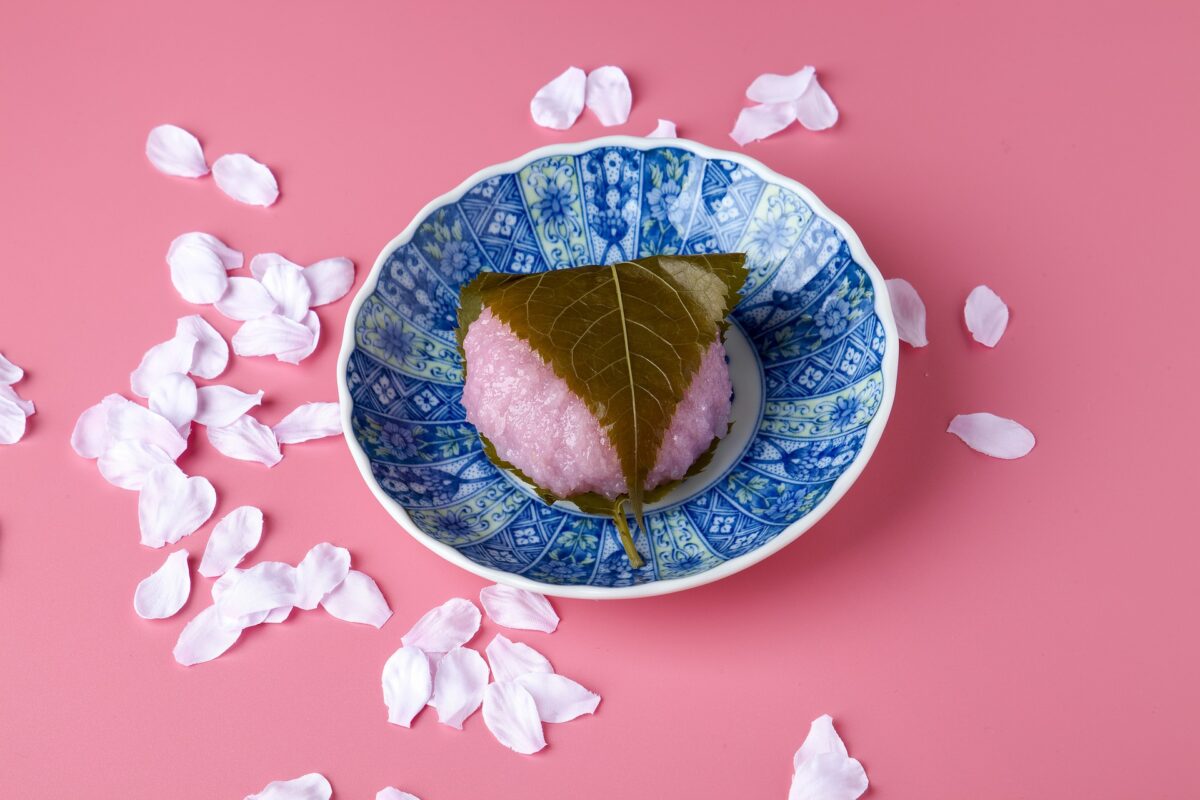
While mochi itself is flavorless, its versatility as an ingredient is vast. It can be added to soups, made into dishes, or transformed into sweets by wrapping it in sweet red bean paste(Anko).
You’ll find many mochi-based desserts at supermarkets and street stalls in tourist areas.
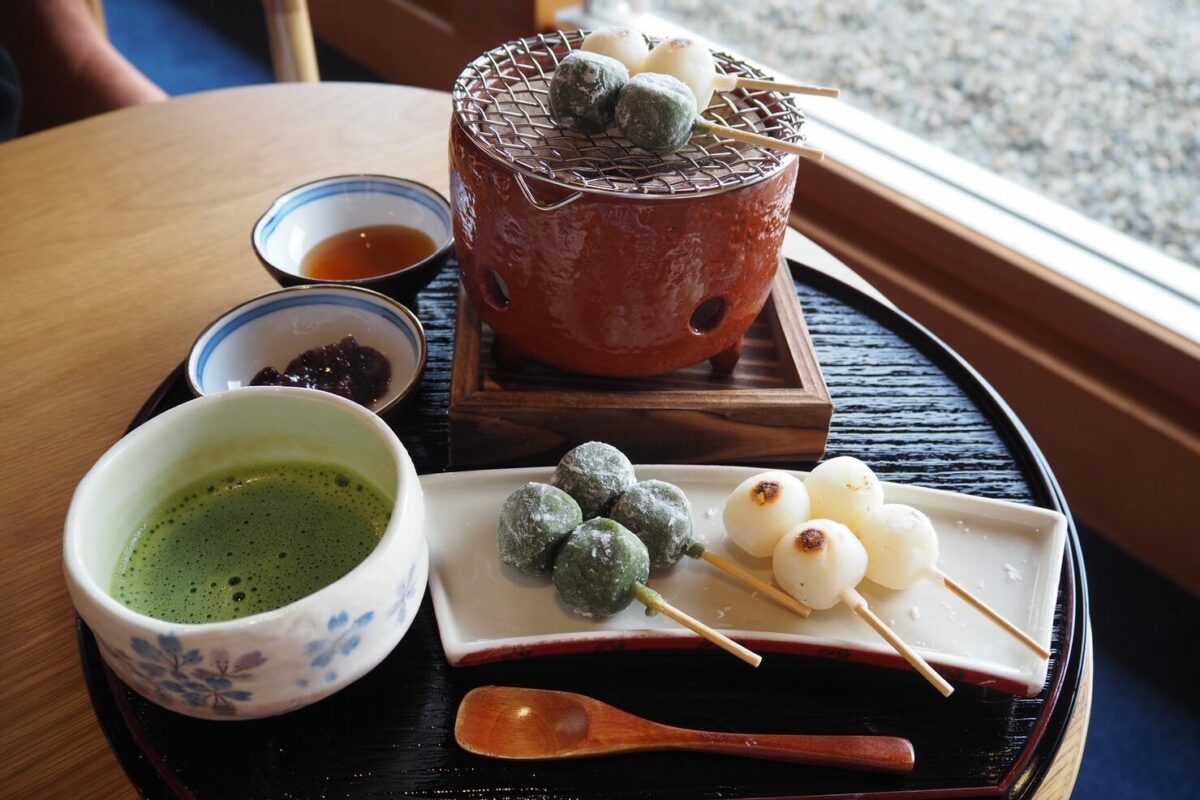
Popular treats include sakura mochi, sold in spring, and Kyoto’s famous matcha-infused sweets.
This “best must-eat foods and sweets in Kyoto” article features many must-try Kyoto sweets, so be sure to check it out for more delicious recommendations.
46. Melon pan (Melon bread)
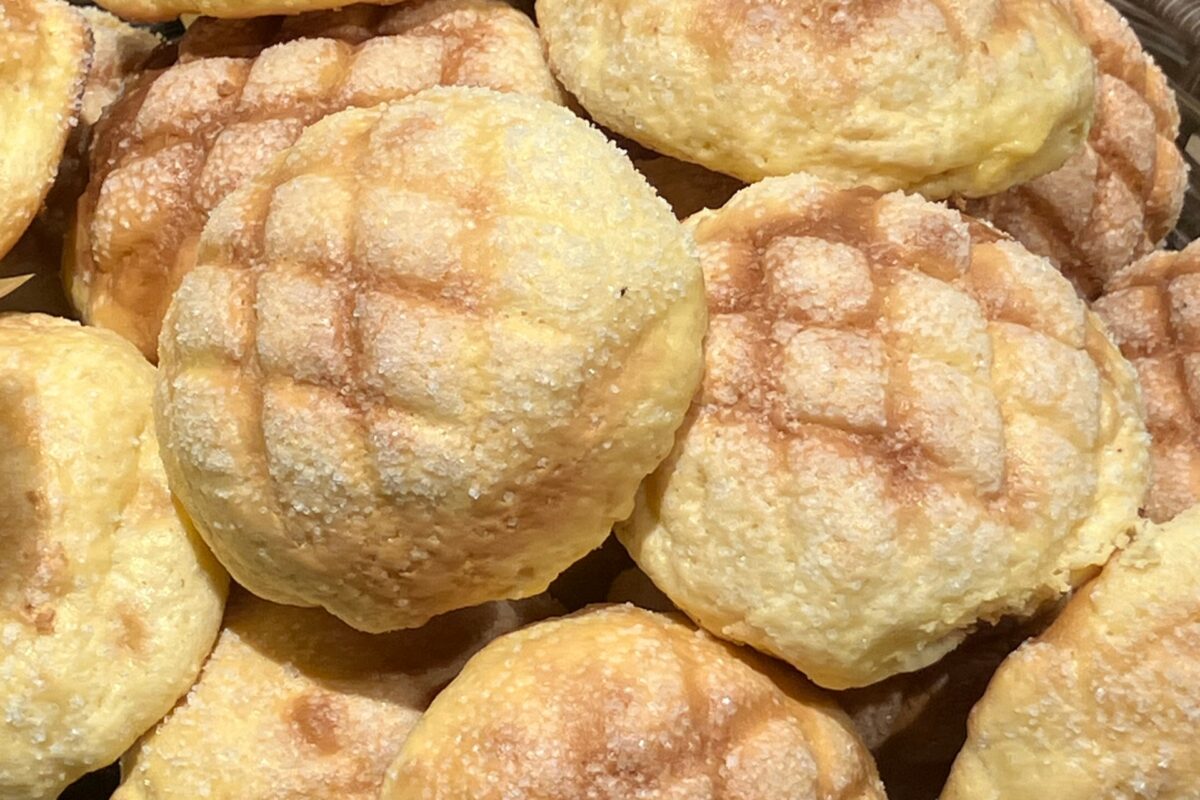
Melonpan, a beloved Japanese bread, has recently garnered immense popularity among foreigners as well.
Despite its name, derived from “melon,” it contains no actual melon, which adds a fun twist to its identity. Many foreign tourists find themselves enchanted by its unique taste and texture.
Melonpan features a crispy outer layer and a soft, fluffy interior. You can find various types, from the simple classic to versions with chocolate chips, caramel flavors, and more.
While bakery-made melonpan, fresh out of the oven, is highly recommended for its crispiness, even the supermarket versions, available for around 100 yen, are quite delicious.
Once you experience the distinctive flavor of melonpan, there’s no turning back.
47. Anko & butter pan (Bean paste & butter bread)

Anko & Butter Pan is a delightful fusion of traditional Japanese and Western flavors. Anko, a sweet paste made from azuki beans, is a staple in Japanese sweets and an essential component of wagashi. This beloved anko is paired with a generous pat of butter, creating a heavenly combination in a bun.
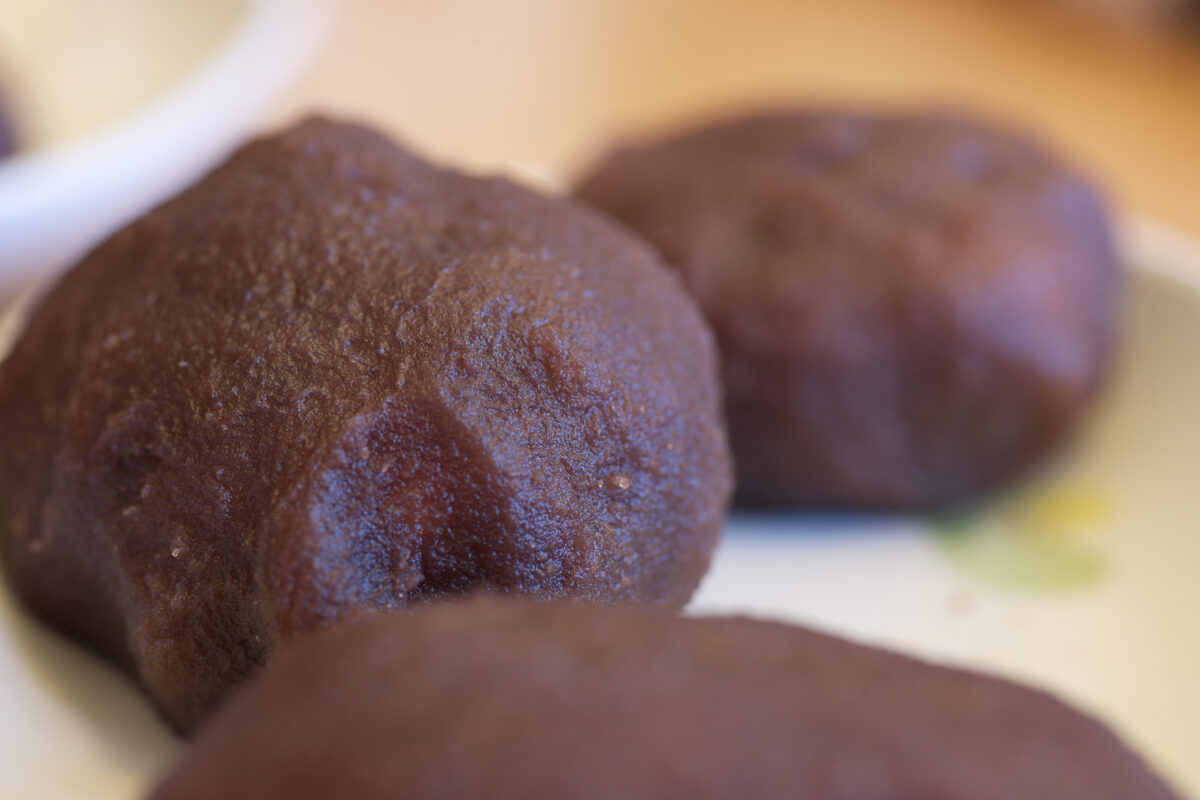
While anko alone can be quite rich, the saltiness of the butter perfectly balances the sweetness of the anko. The French bread holding these ingredients together adds a mildness that creates a harmonious flavor profile, ensuring it’s not too overwhelming.
Eating a chunk of butter might usually feel indulgent and guilty, but in An Butter Pan, it’s wonderfully justified. This unique pastry allows you to savor the buttery goodness guilt-free, making it a must-try treat.
Conclusion
If you had the time to read this far I applaud your effort, this was a long one!
Japan is a culinary paradise (too many great original dishes), offering far more than just sushi. While it’s impossible to try every delicious dish during your stay, we encourage you to explore and savor as many as you can.
Each bite will give you a deeper appreciation of Japan’s rich and diverse food culture.
Please let me know in comments or an email if there are any questions or if you just want to tell me what you have tried and what is your favourite Japanese foods!

